STRIKE A POSE: PORTRAITS FROM THE COLLECTION was originally exhibited in person at the Lake of the Woods Museum from November 27, 2020 to March 27, 2021.
For over 50 years the Lake of the Woods Museum has been collecting photographs of our region and the people who live here. In those years the museum has amassed a collection of over 20,000 photographs. In our newest exhibit, Strike a Pose: Portraits from the Collection, the museum staff have selected over 60 of the most compelling and striking portraits from our extensive photo collection. Spanning many different subject areas, and with some photos dating to the 1880s, this wide ranging portrait exhibit is sure to please both the history lover and the photography aficionado.
Use the left and right arrows below to navigate through the pieces in the exhibition.
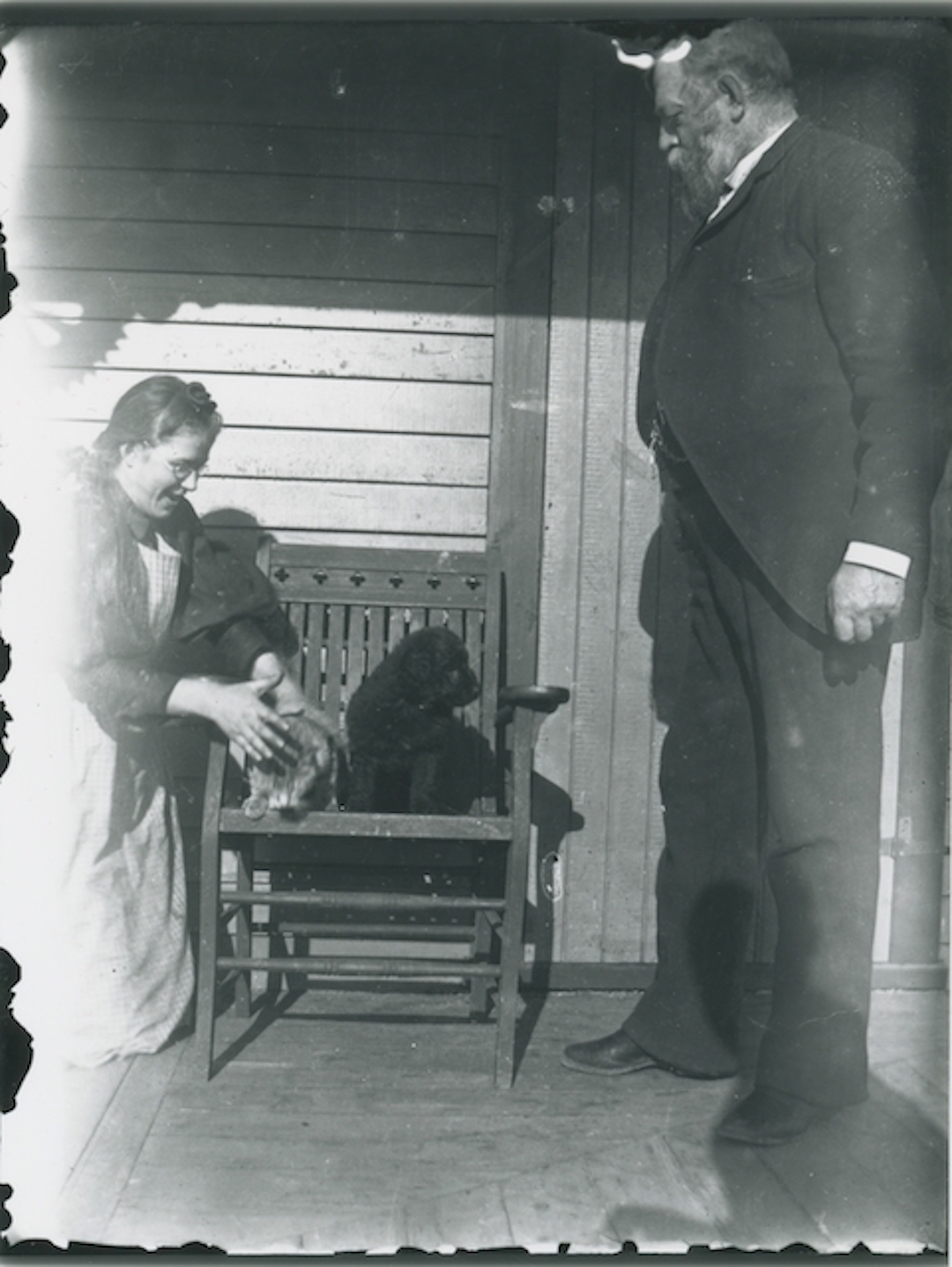
The Carpenters and Their Pets, c1898
Anyone who has a pet has been in this situation—
“Sit still! play nice! Pose for the camera!”
If only she had a pocket full of cat treats then that might have done the trick. Here Sheriff William Carpenter looks on as his wife Annie Carpenter tries to get her pets to pose for a family portrait. While the puppy is being a good boy the kitty clearly not interested.
Photographer unknown
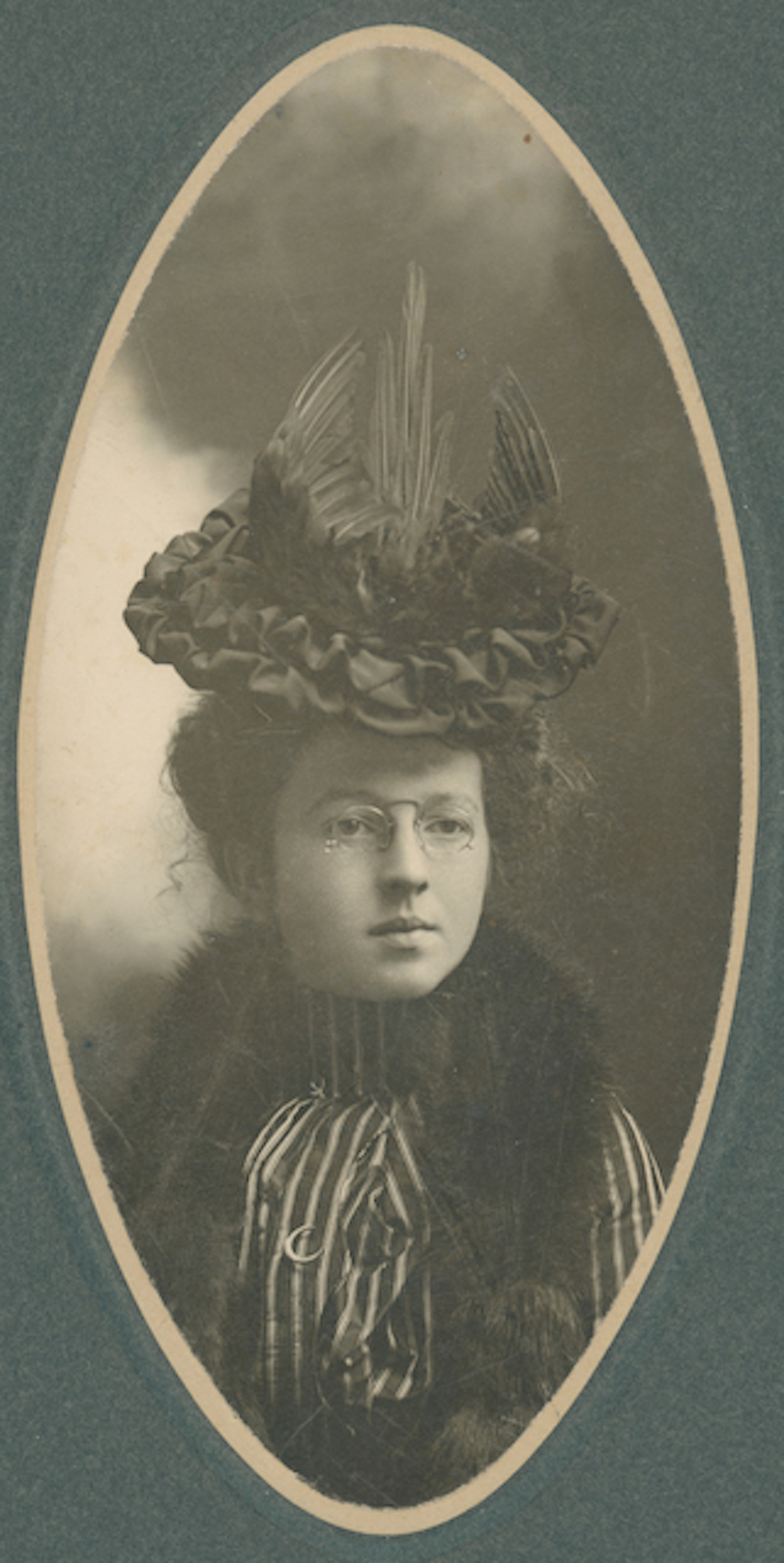
Gertrude Scovil Charlesworth, c1901
Gertrude Scovil was born North Gower, in the Ottawa Valley in 1881 to Ella and Dr. Simmons Scovil. Shortly after she was born, her dad, Dr. Scovil, moved to Rat Portage to take up a position as surgeon on the Canadian Pacific Railway. Her mother, Ella, brought baby Gertie and toddler sister May to Rat Portage 1882 via Great Lakes ship and train— a 50+ hour trip.
Gertie Scovil was a popular young lady in Rat Portage. She sang in several choirs and attended Central School. In September, 1901, she married the handsome young bachelor Lionel C. Charlesworth, the local Mining Lands Agent. In 1903 Gertie and Lionel moved to Medicine Hat (where the home they built is now a protected heritage property), and later onto Edmonton, where Lionel was appointed the first Director of Surveys for the new Province of Alberta.
This image was likely taken around the time of Gertie’s marriage. The high neck collar, fur shawl, pince-nez glasses, and especially the bird plume hat speaks to the style of a fashionable young lady around 1901. Gertie was about 20 years old when this photo was taken.
Bird plume hats were extremely popular and nearly caused the extinction of several species of birds. The popularity of bird plume hats, as well as sport hunting, drove some of the first conservation efforts in North America and lead to the passage of the the Migratory Bird Act Treaty in 1916.
Photographer unknown
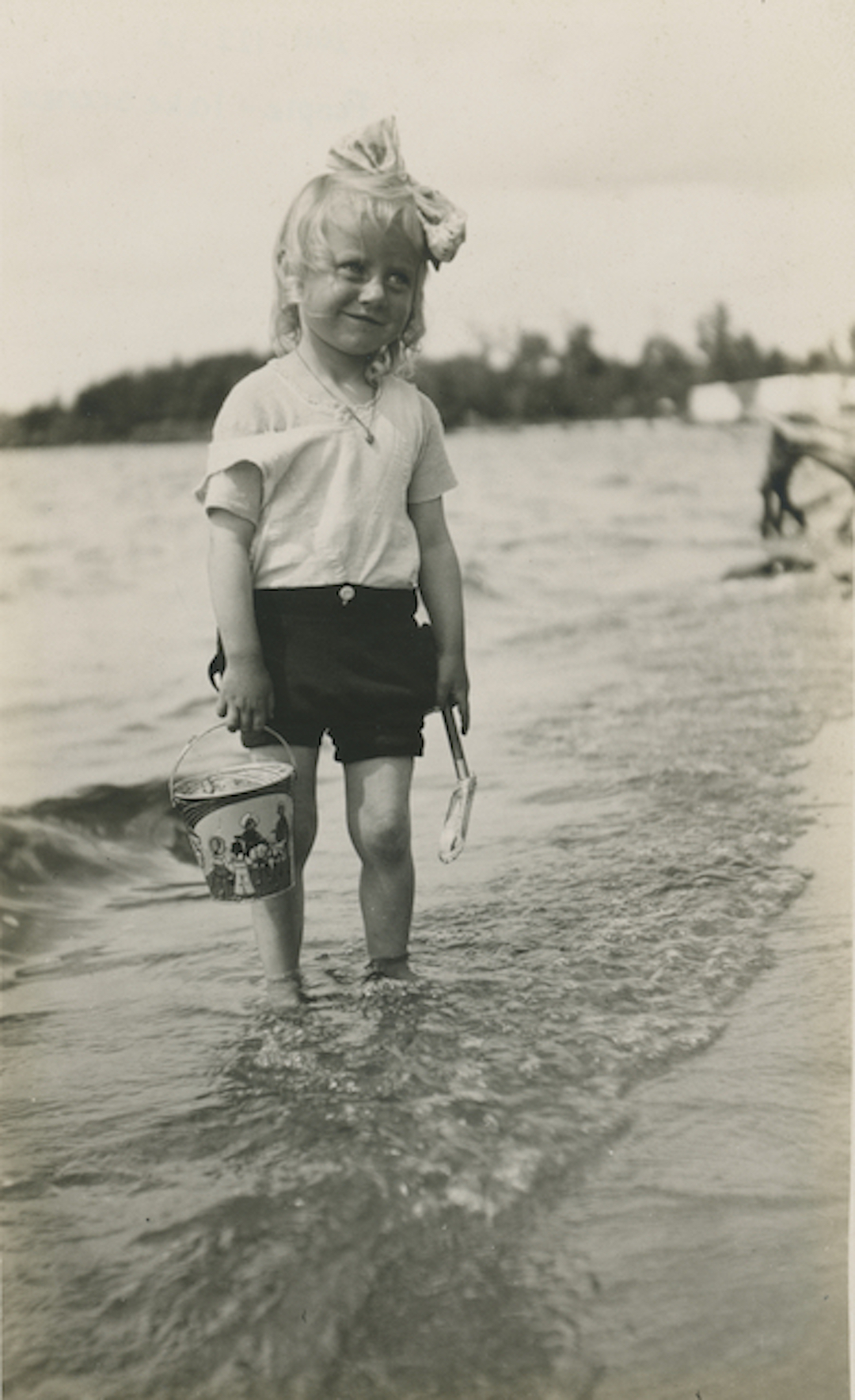
Child at the Beach With Bucket, 1909
Often we look at older photographs and it’s as if the people are from a different planet. Other times it is the exact opposite and the photo looks like it could have been taken yesterday.
This photograph is the latter.
This 1909 photo of a little girl with her shovel and pail at the beach would fit right in today on Instagram or Facebook. We don’t know what the context is, but to us she looks like she might be giving her dad the side eye after a particularly bad dad-joke.
Photographer unknown
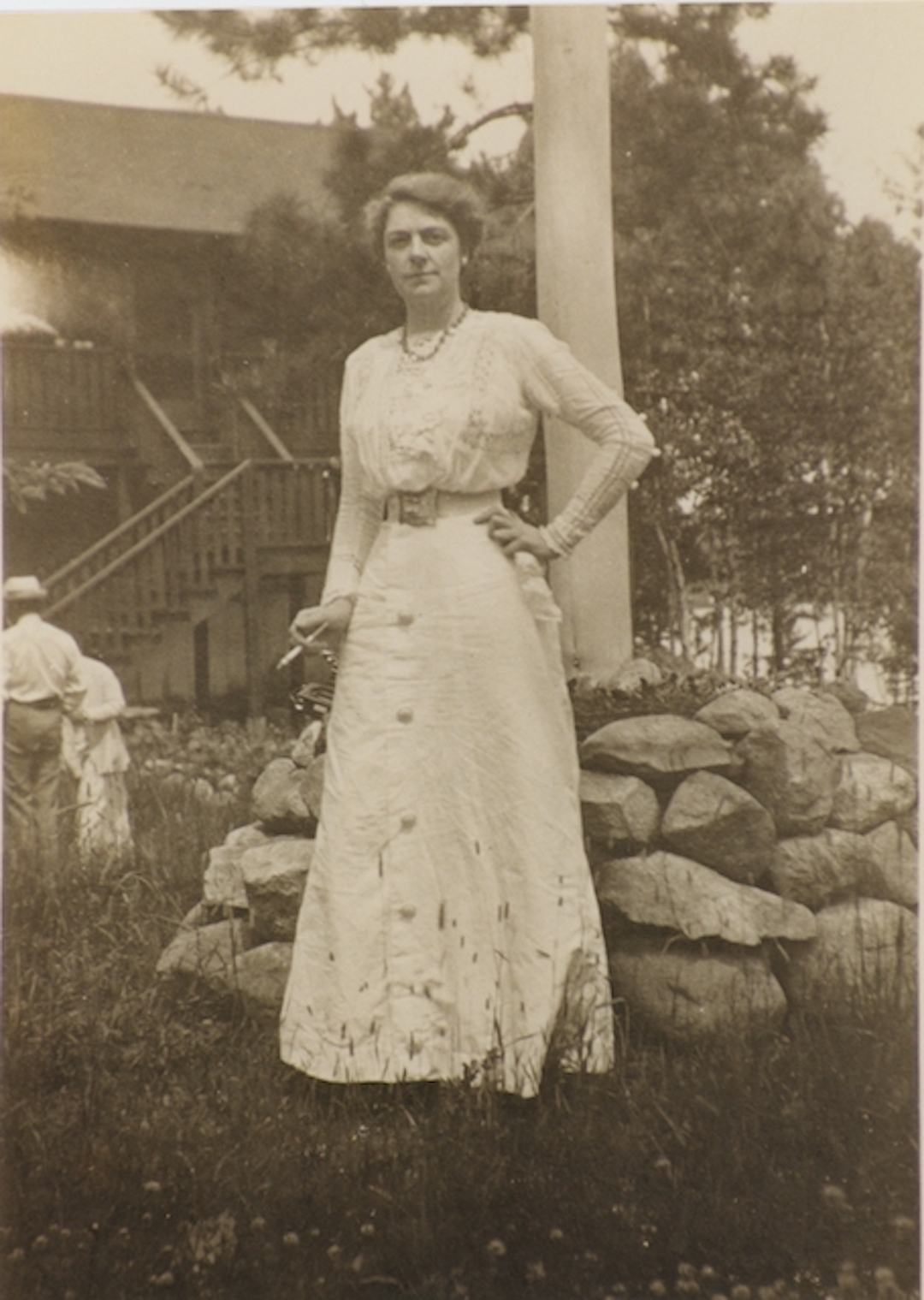
Naomi Farrell, 1912
Naomi Farrell was a Winnipeg based socialite and actress who made frequent visits to the Lake of the Woods around the turn of the 20th century. This photo was taken at the Allen Camp in 1912. In this photo she is the image of strength and confidence— a woman ready to take on the world.
Photographer unknown
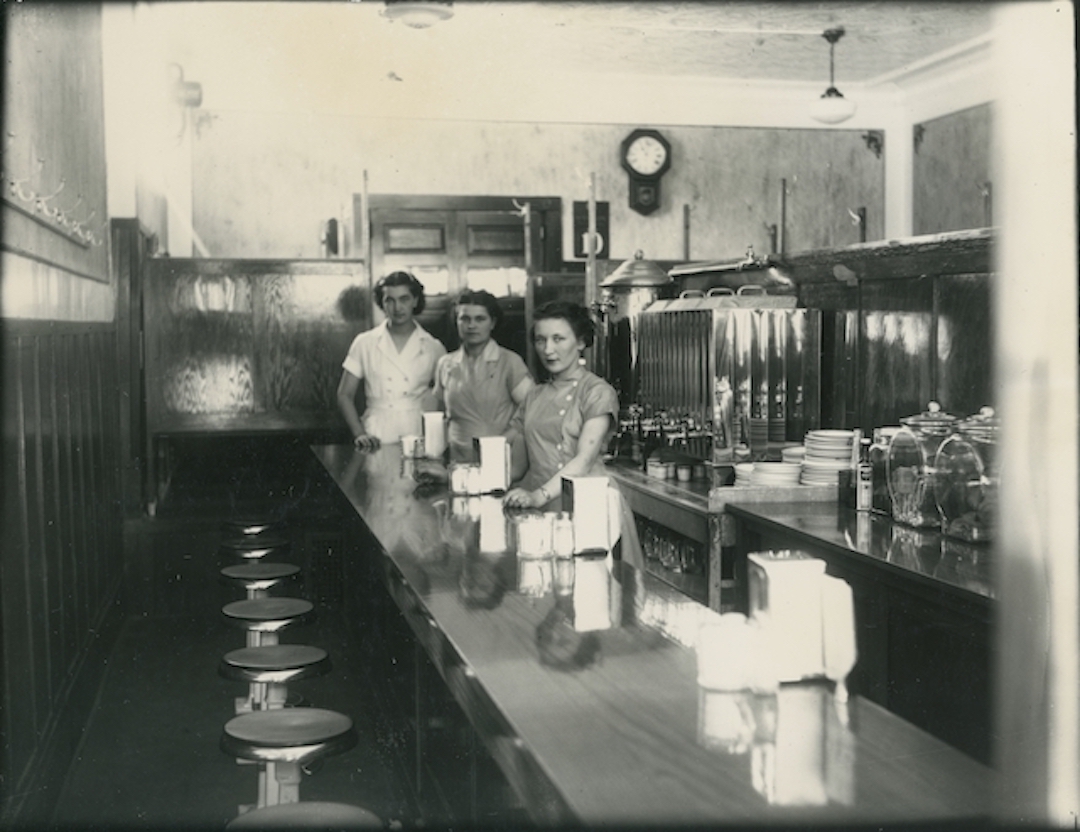
Inside the Dominion Cafe, c1940s
A slice of life from the 1940s with the staff at the lunch counter of the Dominion Cafe, formerly on the southeast corner of First St S & Matheson. Julia Pasco is in the centre.
Formerly this image was misidentified as Ken’s Cafe. We regret the error.
Photographer unknown
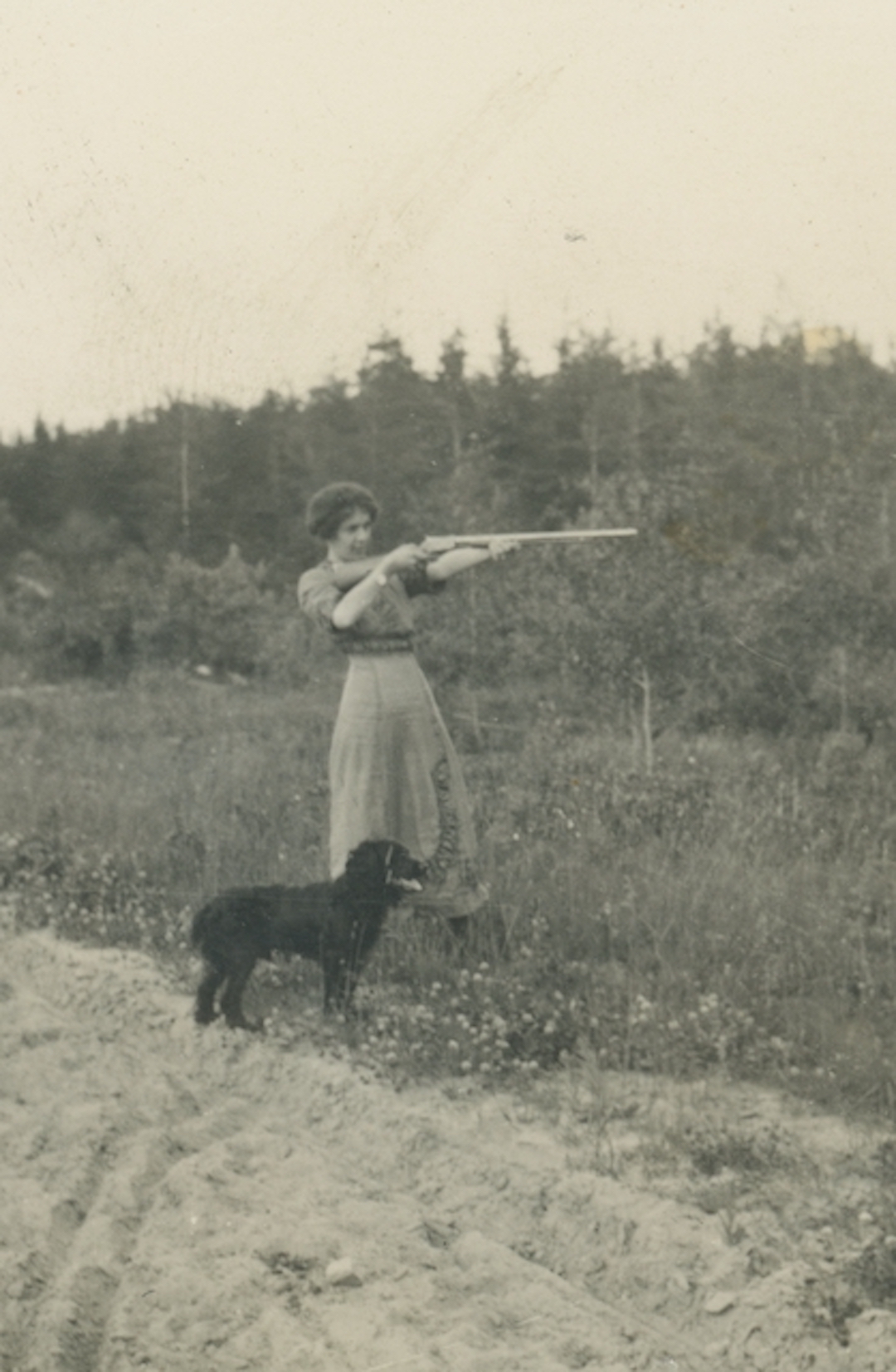
Marie Martha Giguere, c1920
A young Marie Martha Giguere takes aim while her dog looks on. She is shooting a Winchester model 1890 .22 rifle.
She is wearing a wrist watch so this is very likely taken after the First World War. Before the war the wristwatch was not a popular accessory. During the First World War the wristwatch became a vital tool in following timed artillery plans. By 1917 every soldier was issued one. By 1920 the wristwatch was an extremely common and popular accessory in North America.
We don’t know what Marie Martha is shooting at— frankly it could be anything. Shooting at pests was much more common and even expected 100 years ago. If a bear was getting into your garden or a wolf was giving your dog a hard time the first question would likely have been, “well, why didn’t you just shoot it?” Even in town limits it wasn’t uncommon for people to shoot at animals in their yard, or for workers coming home late at night to carry a pistol for protection against wolves.
Photographer unknown
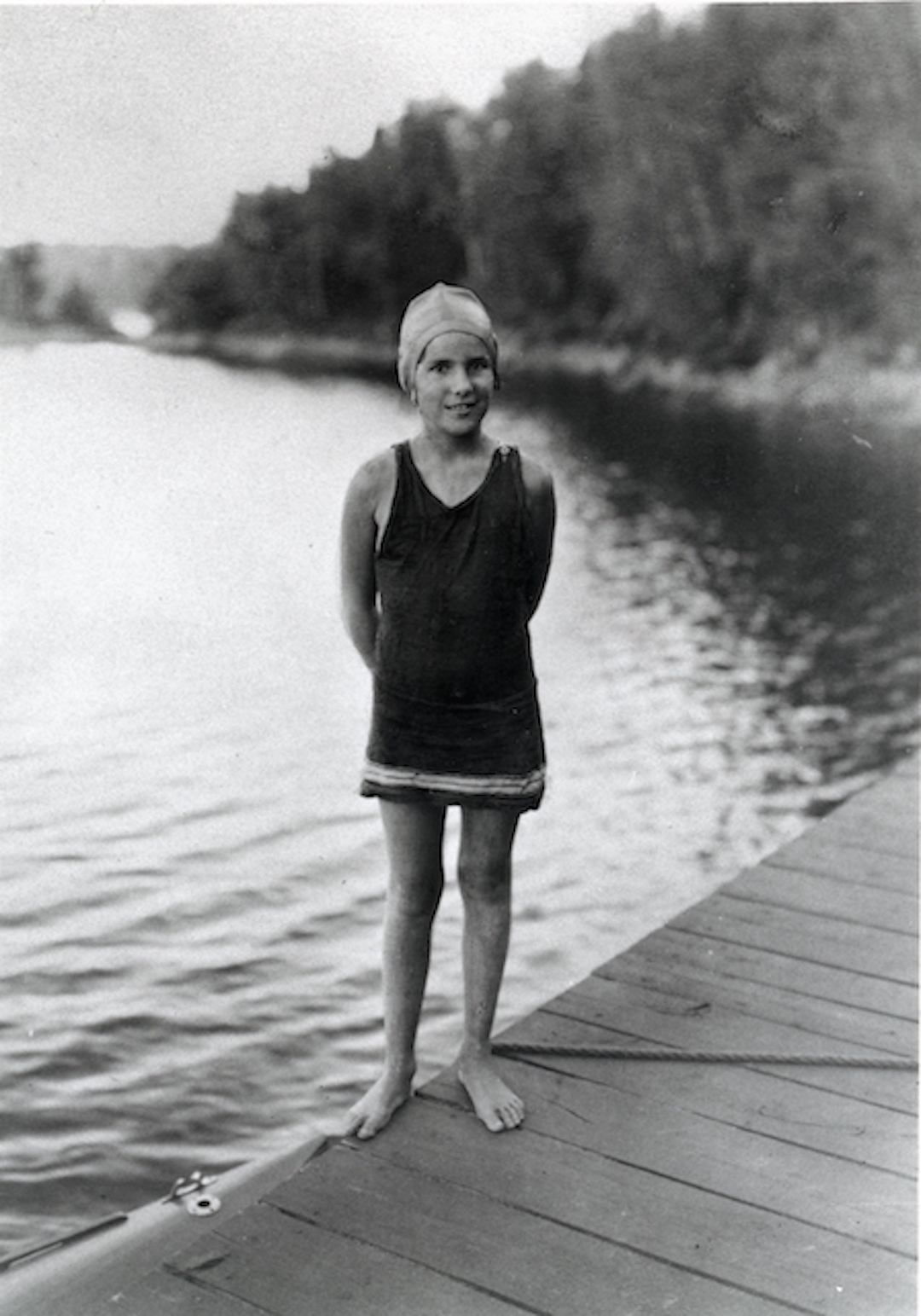
Janet Carruthers, c1920s
In her bathing costume and swimming cap, Janet Carruthers is the picture of summer fun on the lake.
Janet Carruthers was a member of the wealthy Carruthers family of Winnipeg. The family camp on Carruthers Island was built in 1910. Janet was born in 1914, so this image would likely have been taken some time in the 1920s.
Photographer unknown
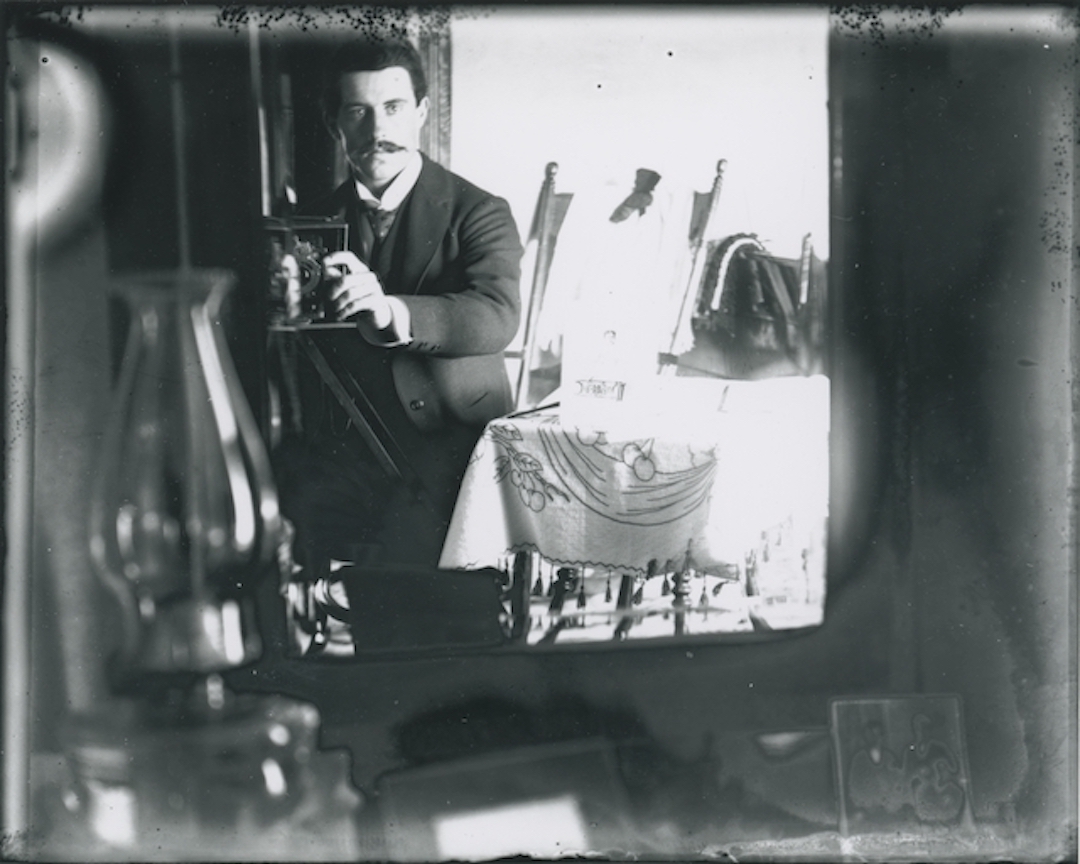
The Man in the Mirror, c1895
From the collection of the Banning Family on Coney Island— an unknown man takes a proto- selfie in the mirror sometime in the 1890s.
The camera this man is using appears to be an 1894 Premo by Rochester Optical. In order to take a picture with a 1894 Premo one would cycle the lens manually via a switch on side the side of the lens.
Photographer unknown
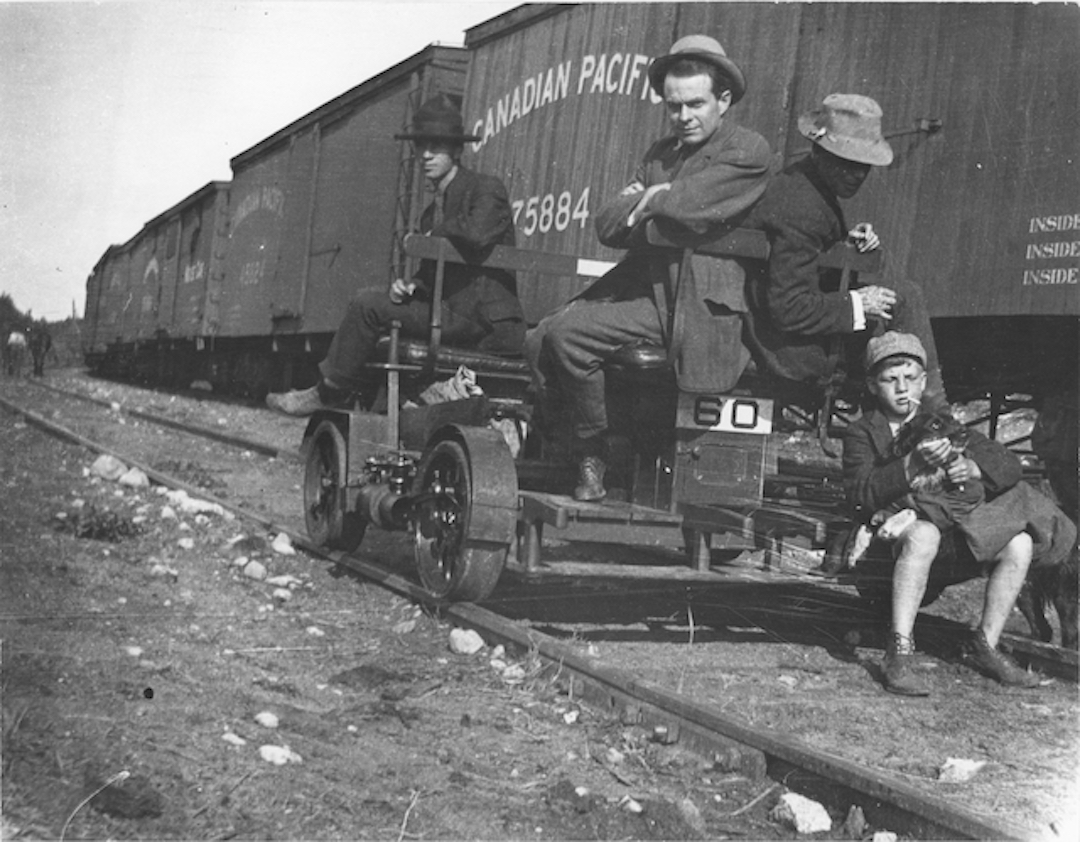
Workin’ on the Railway, c1920s
A group of men and a boy pose for the camera on a Canadian Pacific Railway work cart.
There is a young boy in short pants who is both smoking a cigarette and trying to give a cigarette to his dog. The dog (who is wearing a shirt for some reason) appears to be declining the offer.
Photographer unknown
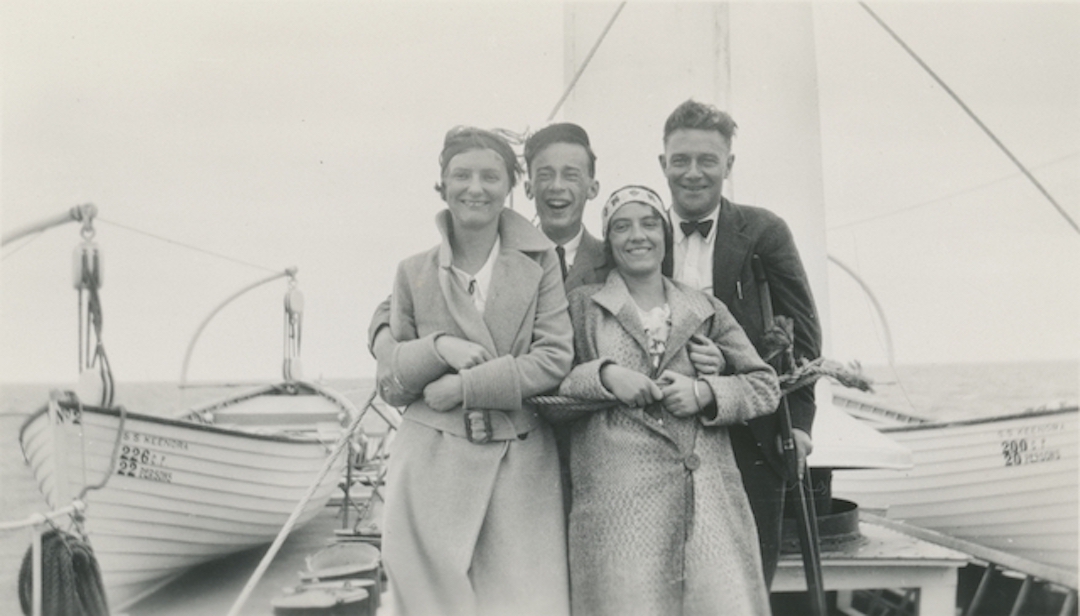
Two Couples on the SS Keenora, c1915
There is nothing like a boat ride on a warm summer day. These young people appear to be having quite the time in this c. 1915 photo of SS. Keenora passengers. On closer inspection one of the fellows is on crutches, and the whole gang seems to be tied together with a rope. Fun times on the SS. Keenora. One of these young ladies is Kenora summer resident Miros Thom of Winnipeg.
Photographer unknown
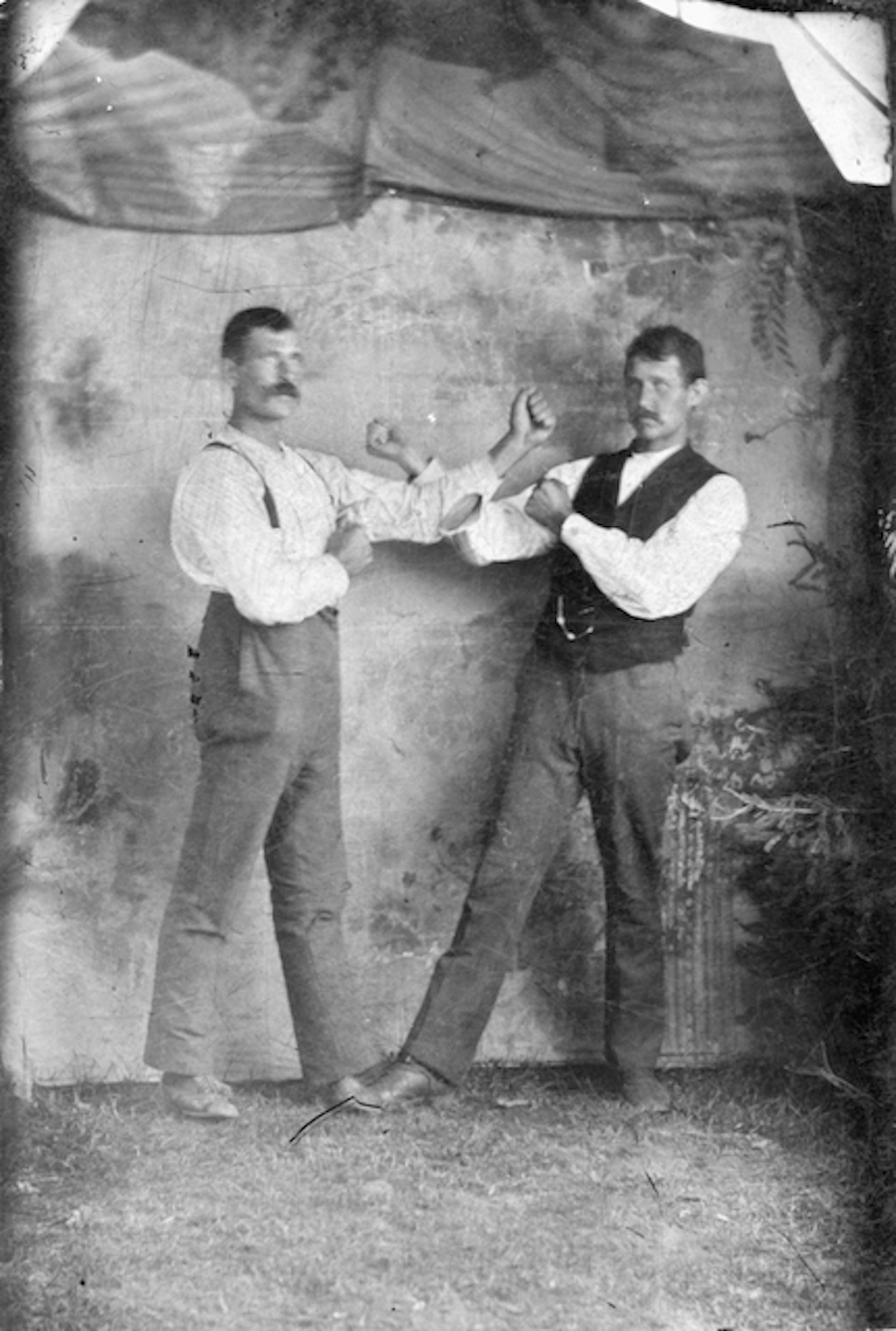
Knuckles Up! c1880s
Even though Rat Portage was officially a town in 1881, it would have looked more like a work camp to the untrained eye. It was mostly occupied by young, single men who were here to work on the railway. During their down time these young men were always looking for things to do. One of the activities available in town at the time was having a picture taken. Young men would round up their pals and get a photo taken to send home or keep as a souvenir.
The style of boxing pose in this photo was so common there is even a name for it: “The Fisticuffs Stance”. This stance became popular because it was used by fighters who fought under London Prize Ring Rules— the bareknuckle style of boxing that featured unlimited rounds, spiked shoes, and even some limited grappling. London Prize Ring Rules were banned in sanctioned matches in 1889 and were replaced with the Marquess of Queensberry Rules. These modern rules (mandatory gloves, 12-15 three minute rounds, standing eight count) made the traditional fisticuffs stance obsolete. A modern variation of the “fisticuffs pose”can sometimes be seen at MMA and boxing weigh-in events.
Photographer unknown
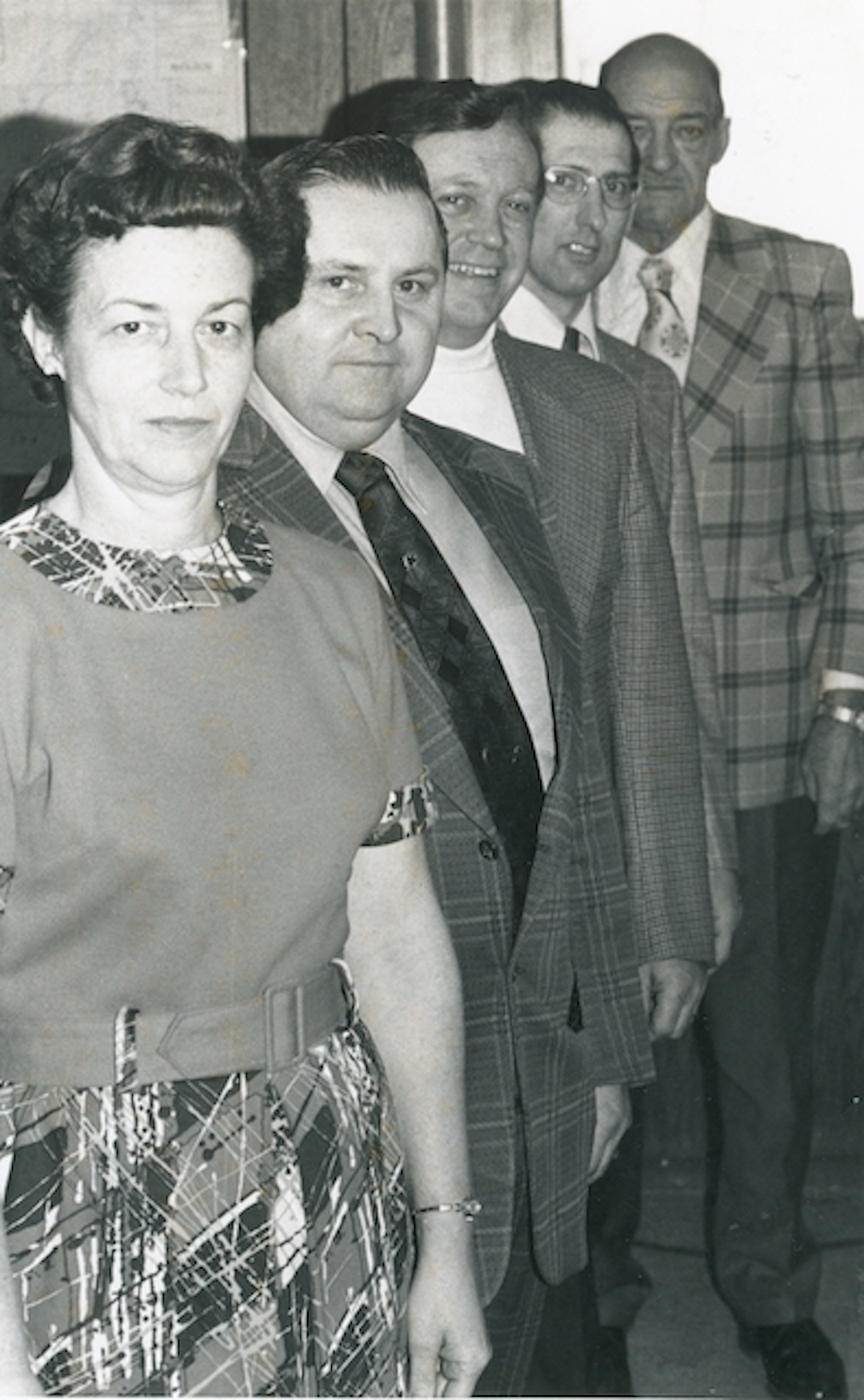
JM Roll Call! 1975
A roll call photo of the 1975-1976 Jaffray-Melick Municipal Council. From left to right are: Marguerite Canfield, Peter Pestaluky, Ed Alcock, Bill Pochailo, and lastly Reeve Joe Garrow.
In 1974 Marguerite Canfield was the first women to be elected to council in Jaffray-Melick.
Photographer unknown
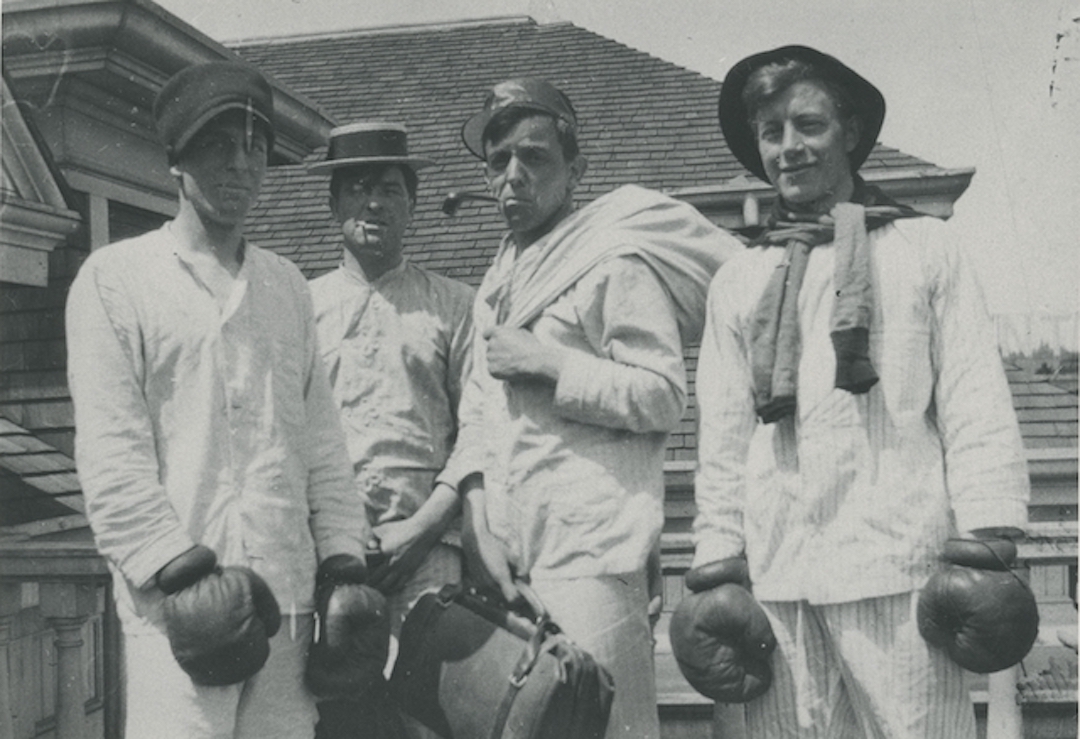
The Peterborough Boys, 1910
The “Peterborough Boys” was a name given to a group of young men who came to Kenora from Peterborough, England to work on the railway. When they first arrived in Kenora they lived in the YMCA (currently the Kenora Legion), directly across from the railway station.
Here a few of them are hamming it up on the roof the YMCA, dressed in pyjamas and boxing gloves, to say they were a bunch of characters would be an understatement.
Photographer unknown
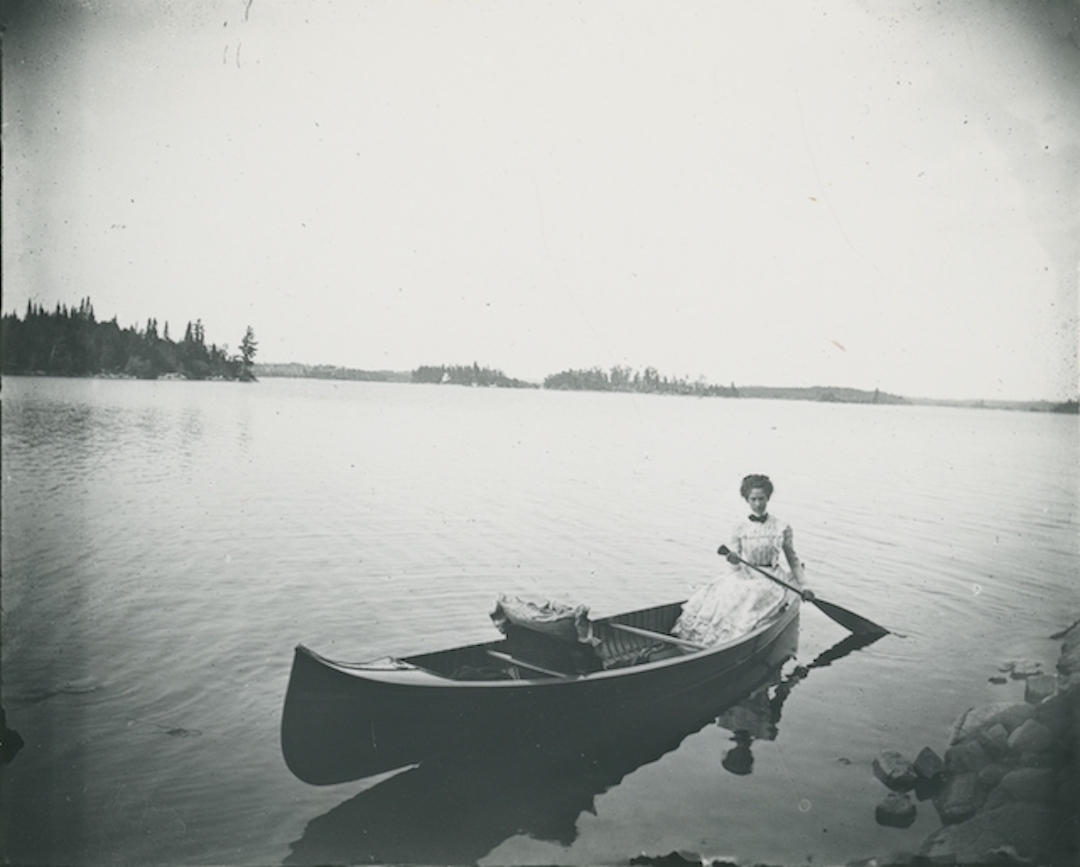
Bertha Stone, c1910
Bertha Stone was the wife of John W. Stone, the local boat builder. As the wife of a boat builder she was often pressed into service as the model in his boating promotional photos.
While it looks like Bertha is pretty dressed up for her canoe trip, a full dress like she is wearing would not have been uncommon or out of the ordinary for a day on the lake.
Photographer unknown
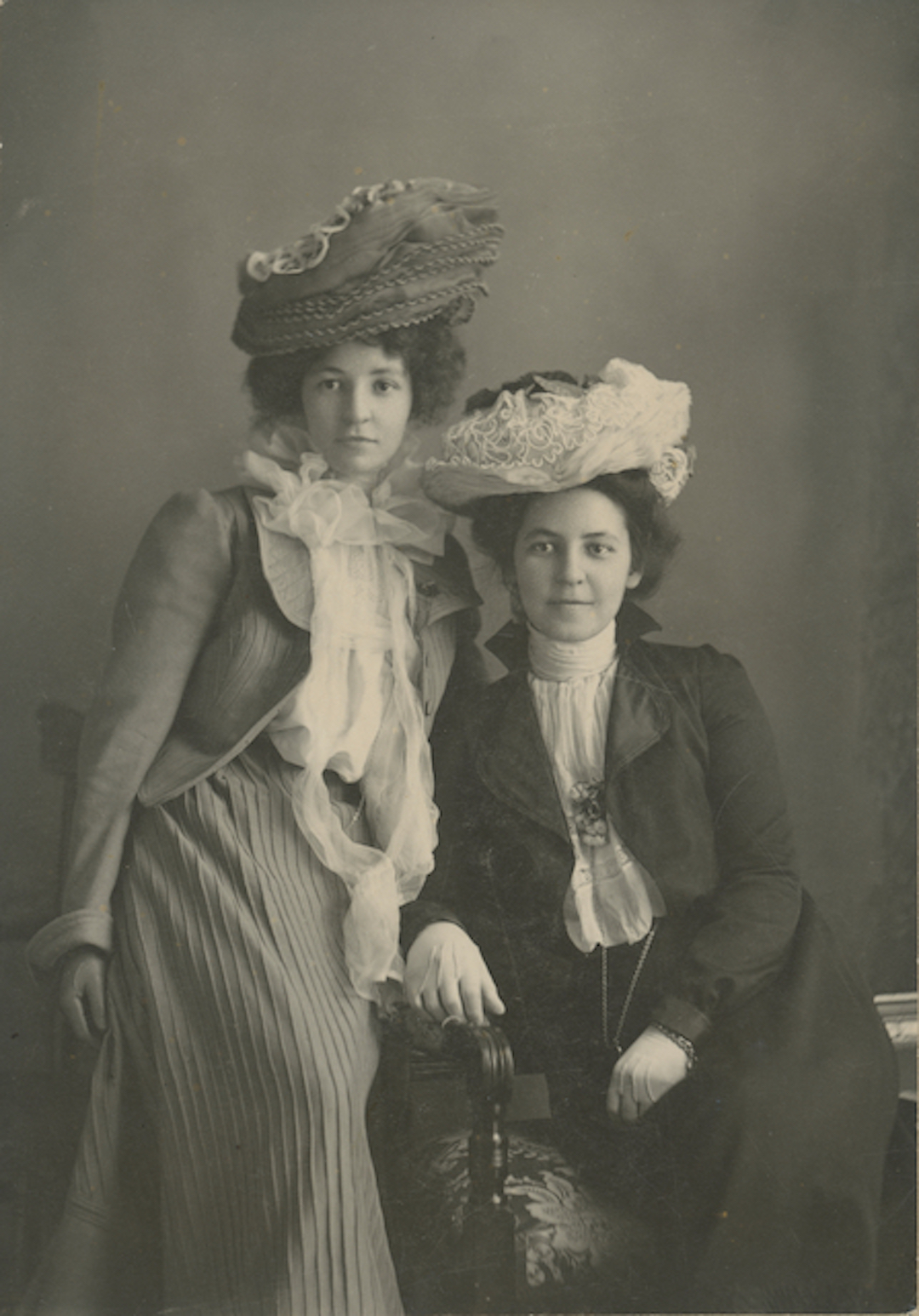
Two Young Ladies in Hats, c1902
We don’t know who these two stylish young ladies are, but we do know this is a very striking image.
These women are emulating the “Gibson Girl” look that was so popular among fashionable young ladies around the turn of the 20th century. The look was based on the work of Life Magazine cartoonist Charles Dana Gibson. His pin up cartoons showed the idealized 20th century lady— proudly feminine, politically active, and certainly independent of men. The style of the “Gibson Girl” shown here includes the long hair pulled up into a swirled pompadour to support their large hats, fitted S-bend shirtwaists, a frilly tulle collar, and floor length matching skirts. The gloves round out the look. This is a look that would completely take over popular fashion by 1914.
W.J. Winter was the photographer of this image, so we have a good idea when this picture was taken. Winter was in Rat Portage for only three months beginning in June 1902, so this picture was taken sometime in the summer of 1902.
Photographer: W.J. Winter
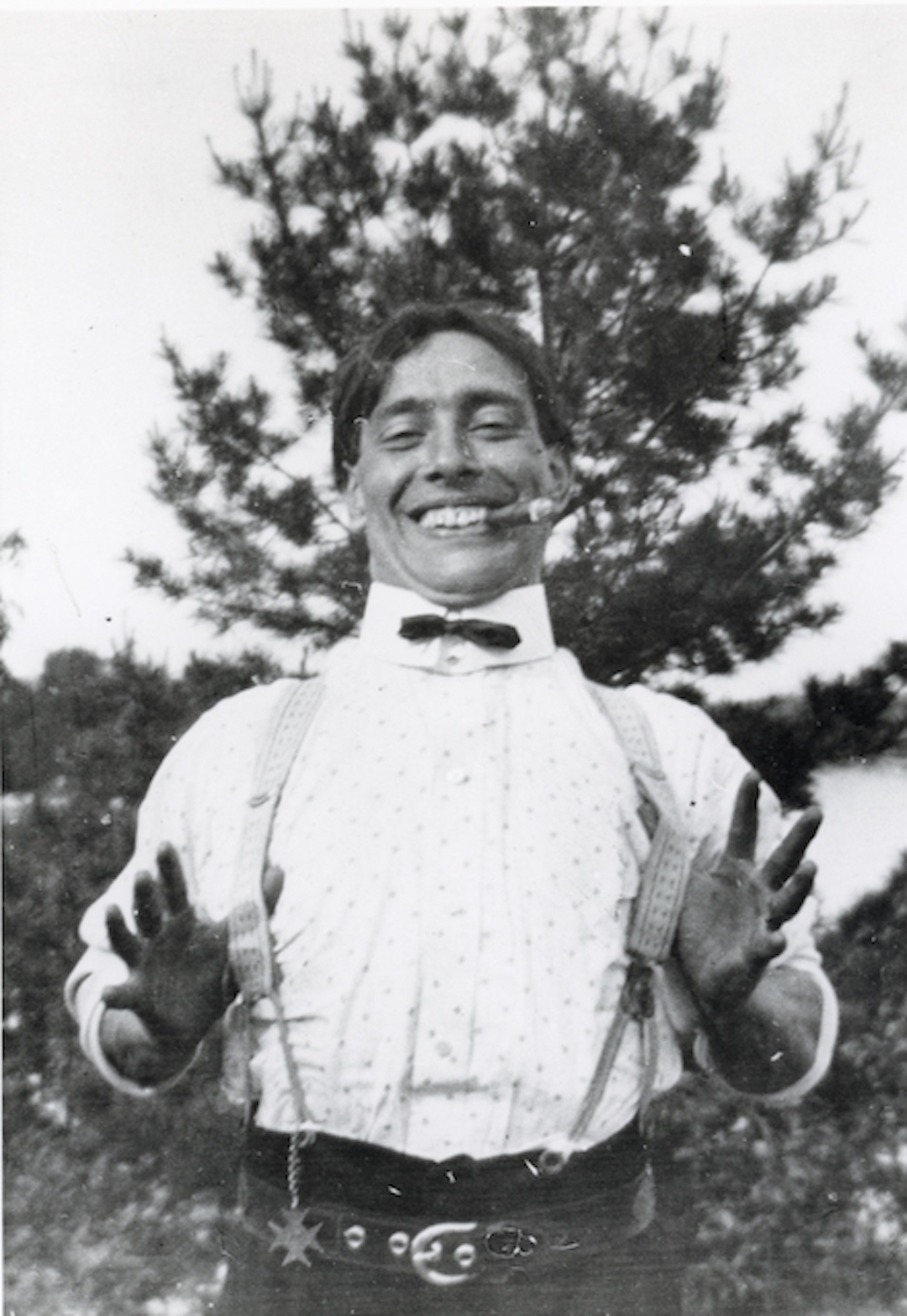
Roxy Beaudro, c1907
Roxy Beaudro was a right winger on the 1907 Stanley Cup winning Kenora Thistles. He moved to Kenora at the age of 3 and spent most of his youth playing hockey with his pals (and future fellow Kenora Thistles) Billy McGimsie, Silas Griffis, and Tommy Phillips. This image was taken as part of a number taken on the same day during a picnic on the lake.
Photographer unknown
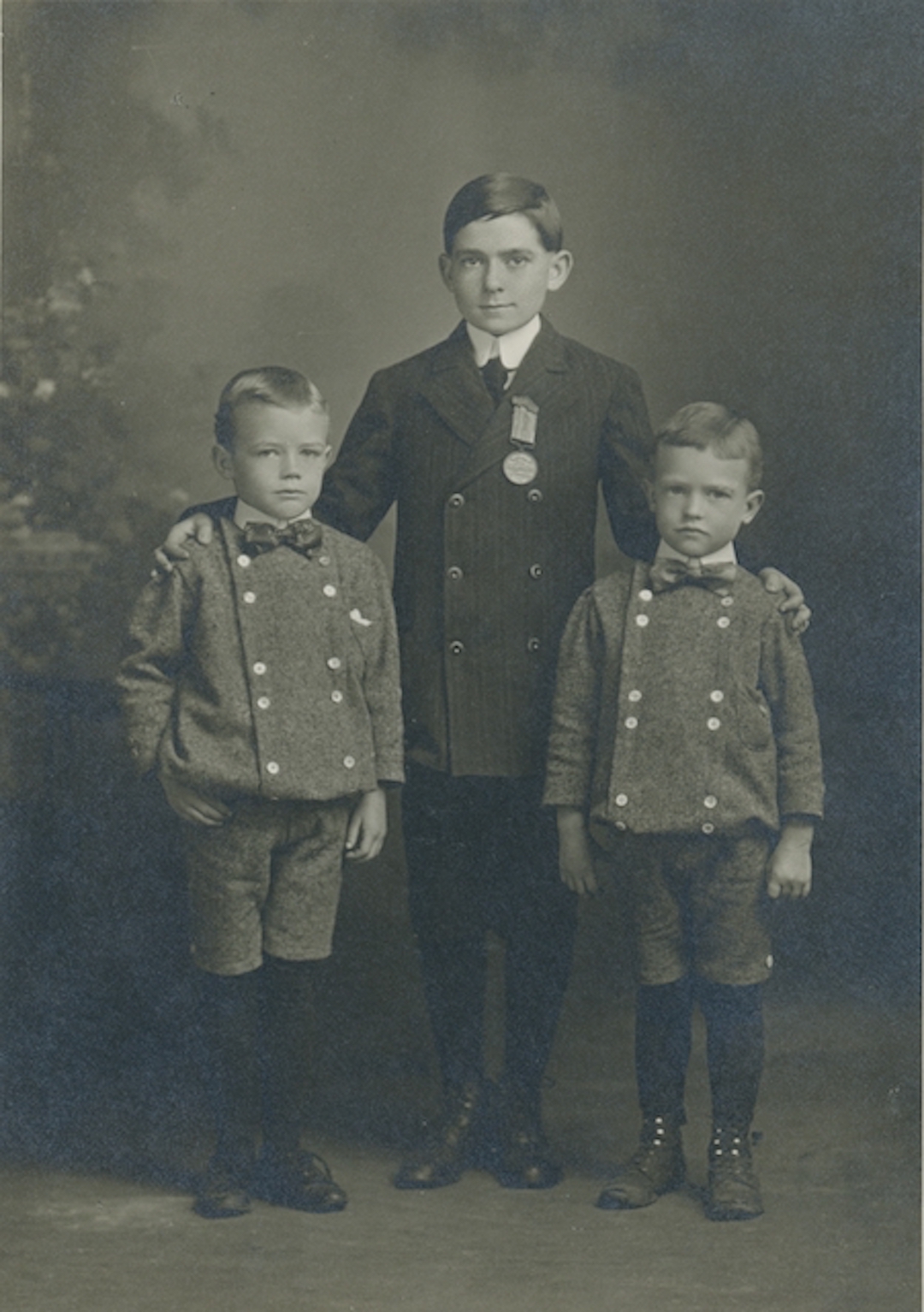
Alex Stephen, and Herbert & Robert Jackson, January 1911
Alex Stephen poses with Herbert and Robert Jackson after he was awarded the Royal Canadian Humane Association Medal for Bravery for saving the Jackson boys from drowning behind the fire hall (the current site of the Kenora Public Library)
From the January 25th, 1911 edition of the Kenora Miner and News—
The presence of mind and prompt action of Alex Stephen, a twelve year old lad, saved the lives of Herbert and Robert Jackson, two young children of Mr and Mrs F. D. Jackson on Monday afternoon last.
The two children aged 6 and 7 had gone down on the ice of the bay [in the] back of the fire hall to watch two or three children skate and play. In running around Herbert got on thin ice above where one of the sewers empties into the bay and broke through. His little bother ran to his help and also [fell] in.
Their cries attracted Alex Stephen who hurried to their assistance and in his effort to pull them out also got into the water. Notwithstanding he had a pair of skates on and heavy clothing, by a strong effort he managed to get out by throwing himself flat on the ice. He grabbed the two children and held their heads above water and at the same time yelled lustily for help. A couple of men who were on the railway track above heard the cries and rushed to assistance of the children, pulling them out of their perilous position. The two children were hurried to Mr. Jackson’s store on Main St and were soon wrapped in warm blankets and are today little the worse for their cold luck. Alex Stephen also hurried home for dry clothing, apparently unconscious of his very heroic action.
The cool prompt action of Alex Stephen deserves the very highest recognition. It is doubtful that even many a grown person would be gifted with such presence of mind as he evidenced at this time. His prompt action when he first saw the children in the water was of the highest order, but, after breaking in himself he still kept his head, got out, laid down flat on the ice, reached over the edge and grabbed the children, one with each hand, it is almost without a parallel in life saving in one so young. He was not excited at the time, and seemed to know intuitively just the proper thing to do. No doubt his heroic action will be brought to the attention of the Dominion Humane Society and to the trustees of the Carnegie Hero Fund.
Alex is the son of Mr. A Stephens, the well-known contractor, who has every reason to feel proud of his cool, level-headed lad.
Mr. And Mrs. Jackson hardly know how to express themselves in appreciation of Alex Stephen’s prompt action. They feel had it not been for him their two little boys would have been drowned.
Photographer: J.G. Banks
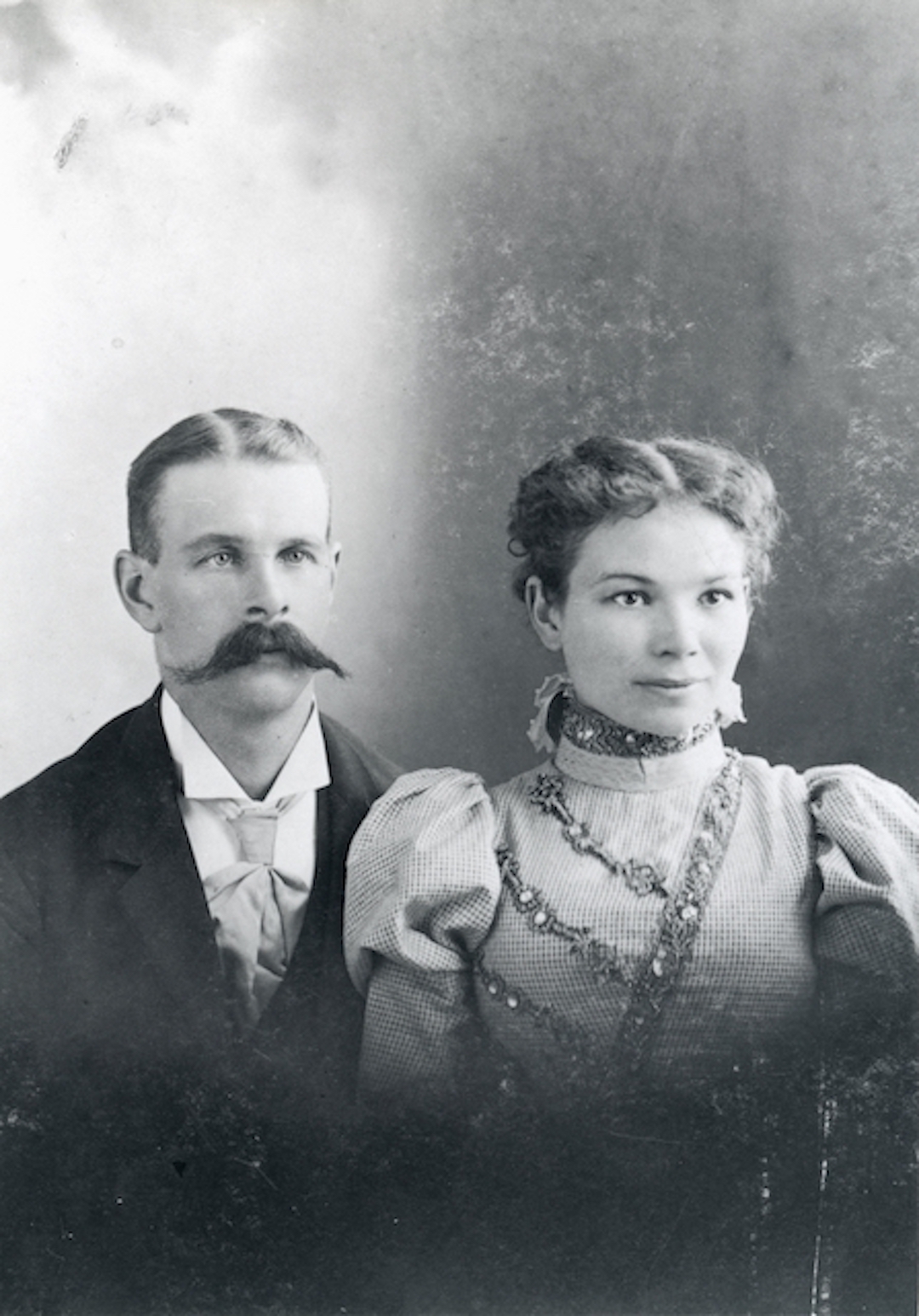
Harry and Hattie Hook, c1897
A studio portrait of Harry and Harriet “Hatty” Hook.
This photo was taken by J.G. Banks in Rat Portage. Banks began his photography business here in 1897. The Hooks were married in June of 1897. This picture was probably taken around the time of their wedding. When this picture was taken Harry was 33 years old and Hatty was 22.
Harry was born in England and had emmigrated to Canada as a young man. Hatty was born in the Dakota Territory, USA, and had come to Rat Portage with her parents as a young girl. The Hooks were married for 54 years, and had five children— three girls and two boys. The Hook family lived at 121 3rd St N in a house that remains to this day.
Photographer: J.G. Banks
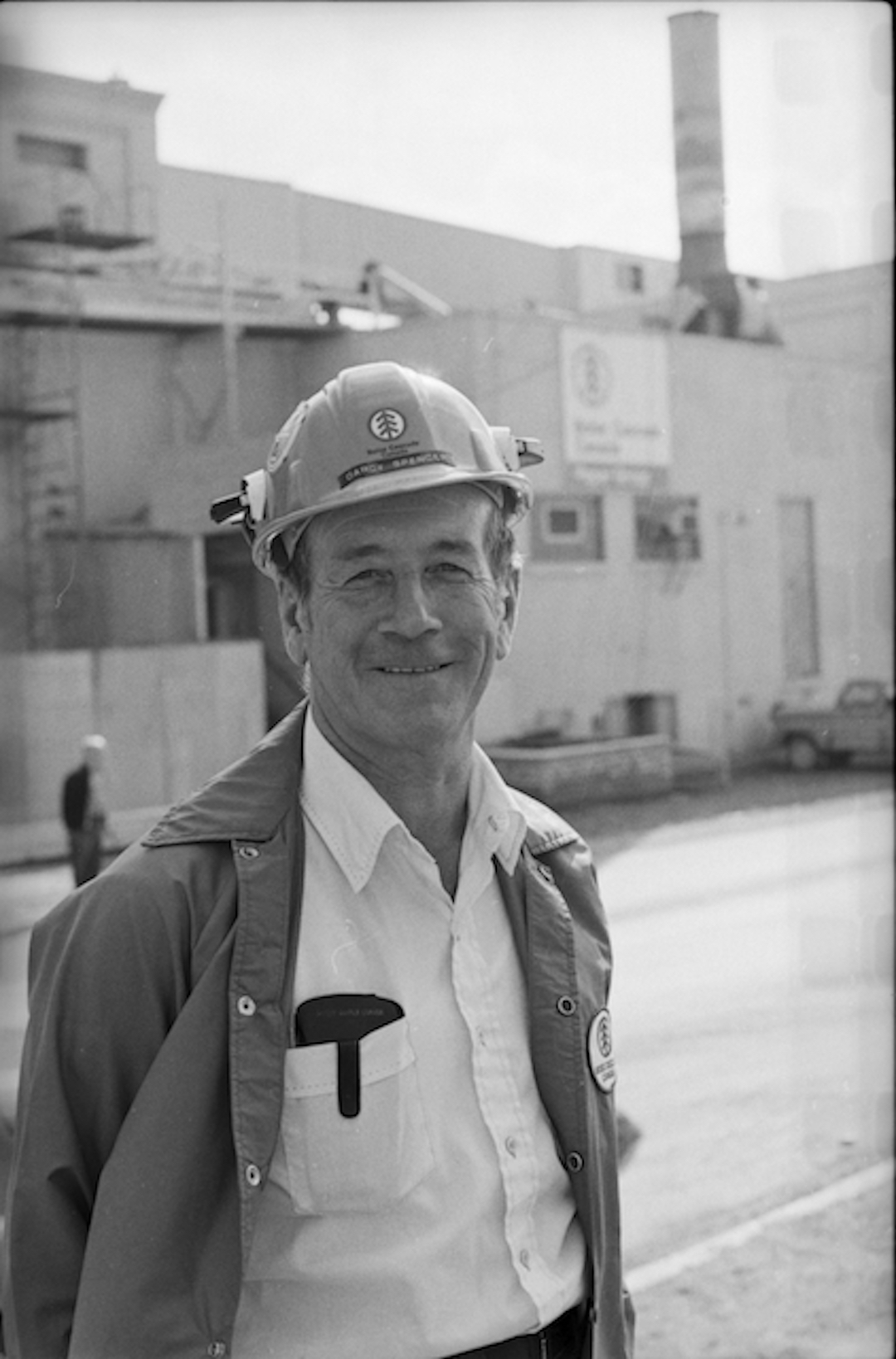
Darcy Spencer, c1980s
Darcy Spencer was born in Kenora, and spent his whole life living here, except for a 6 year stint as a Sergeant-Major in the Royal Canadian Artillery during the Second World War.
Darcy Spencer was the consummate Kenora-man. After his war service he married his sweetheart Dagny, and worked at the paper mill, eventually rising to the position of Mechanical Superintendent. This image is from his final years at the mill.
The two words that describe this image are “confidence” and “warmth”. You can just imagine him saying, “Come on, I’ll show you around.”
Photographer unknown
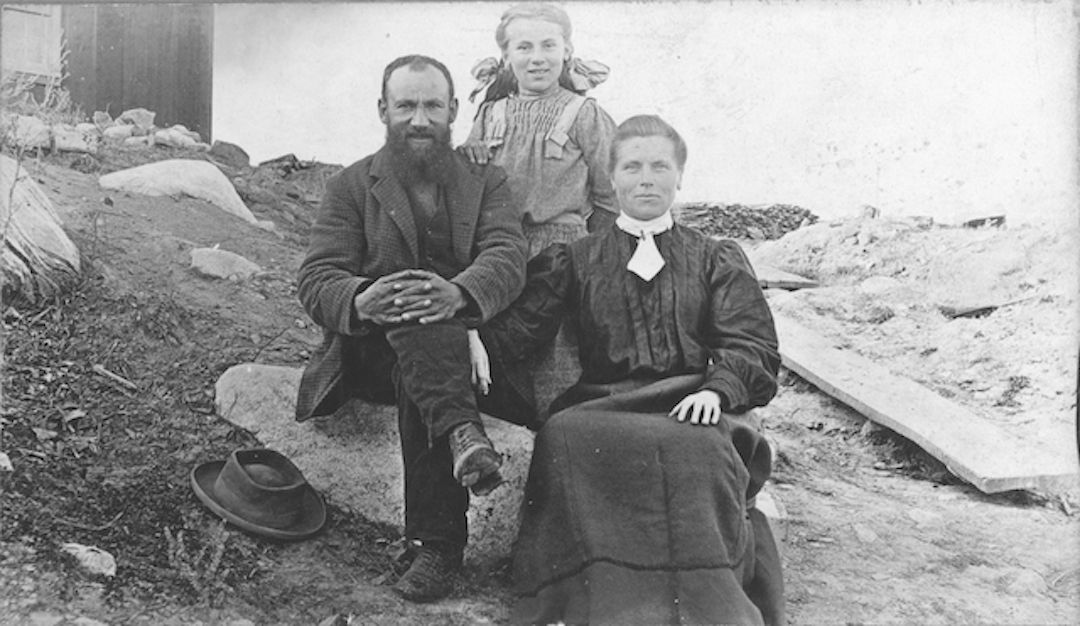
The Hubners, c1910
This image is at once beautiful and heartbreaking.
This is the Hubner Family— Emile and Anna, and their daughter Elnora. The Hubners lived at the Olympia Mine where Emil was the caretaker. In this photo they look happy, with each of them barely concealing a smile.
The heartbreak of this photo is that in May 1916, Elnora and Anna were murdered in their home while Emile was working down the lake on the mine farm site. Their killer was brought to justice, but it was likely cold comfort for Emile who lost the two people he loved the most in the world.
But in the moment this picture was taken that had not yet come to be, and instead we at least have this lasting image of a loving, happy family.
Photographer unknown
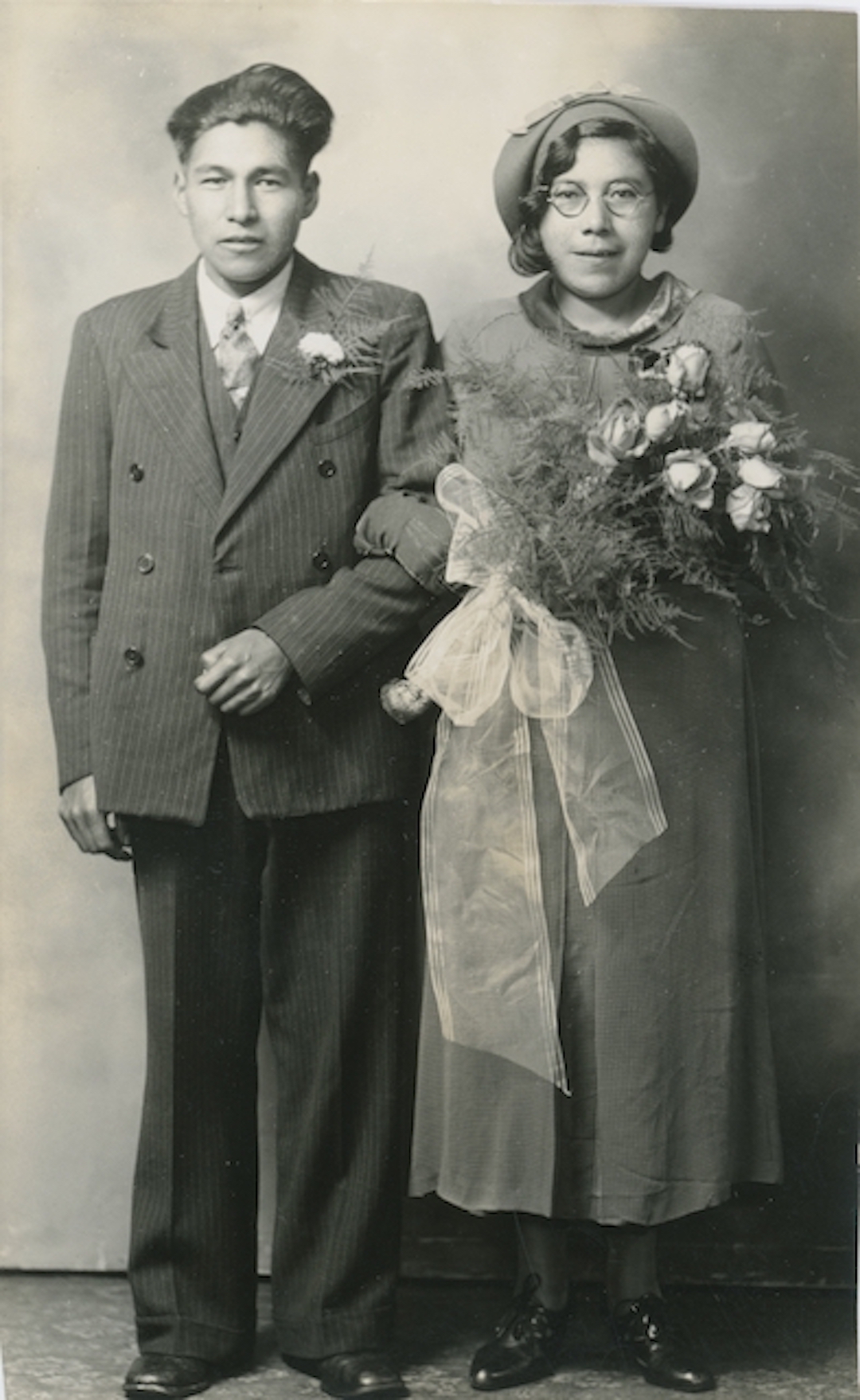
Eddie Williams and May Everson, c1940s
Other than their names, we know very little about this beaming bride and groom. Eddie Williams and May Everson met doing summer work on Allan’s Island. Clearly one thing lead to another, and they were married.
This photo does tell us a lot about the time they were living in, however, and is immediately recognizable as a war time wedding photo. During the Second World War there were shortages of many materials, including silk and satin. These materials were seized by the government for the war effort. As a result, white wedding dresses became extremely uncommon during the war years. In fact, it became in vogue for women to “support the war effort” by getting married in formal clothing they already owned. In this case, Ms. Everson is wearing a simple, but elegant, waffle weave cotton dress, felt cloche hat, gloves, and a bouquet wrapped up in white tulle.
For his part, Eddie Williams is wearing a wool three-piece double breasted pinstripe suit, with a carnation boutonniere— a classic 1940s combination that would have been a popular look anywhere in North America.
Photographer unknown
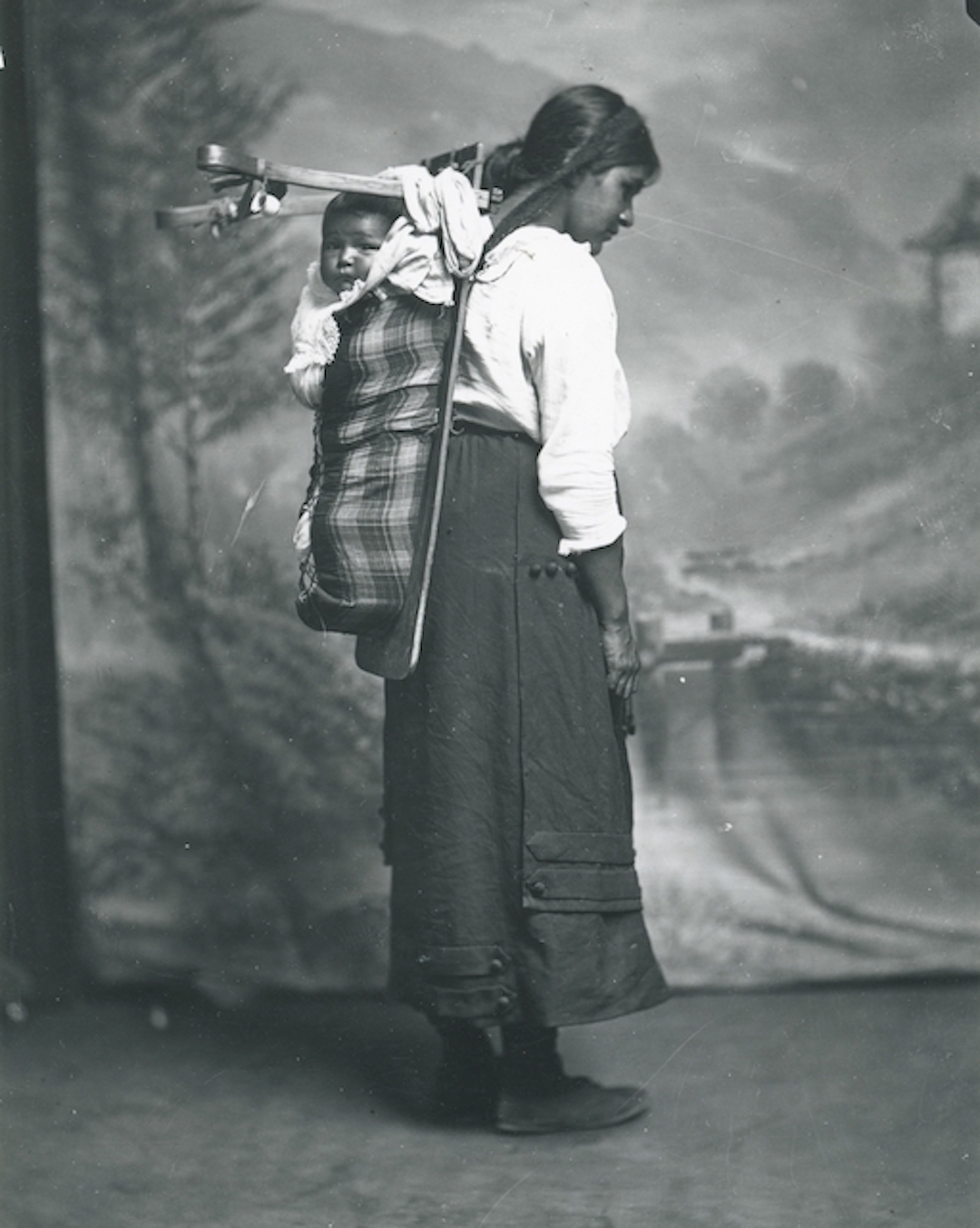
Mrs. Redsky with Tikinagan, c1920
This is an image of Mrs. Redsky of Shoal Lake, Ontario. Her first name is not recorded.
This photograph was taken in Carl Linde’s professional studio in Kenora some time around 1920. There is a second photo from this same session that is owned by the Minnesota Historical Society that shows Mrs. Redsky looking the other way. Both images have the baby in the tikinagan at the centre of the photo.
We believe this photograph is meant to show the cradleboard or tikinagan that Mrs. Redsky is wearing. The tikinagan is the traditional way for Anishinaabe women to carry/swaddle their babies, and was a favourite subject of Carl Linde.
Photographer: Carl G. Linde
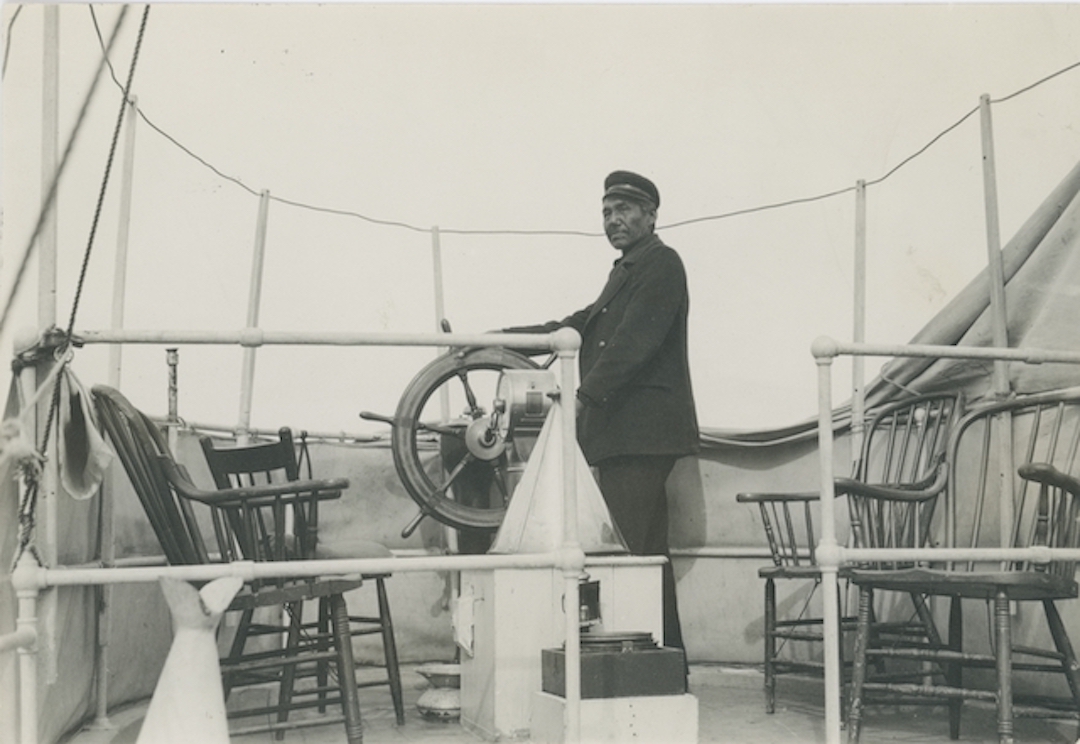
Muctavius, 1914
The SS Keenora operated on Lake of the Woods from 1897 – 1917. For the majority of the time on the lake it teamed up with the SS Agwinde to bring passengers and cargo from Rat Portage/Kenora to Fort Frances. While the flat bottomed SS Agwinde made the run down the Rainy River, the SS Keenora plied the big water on the Lake of the Woods.
For many of the 20 years the SS Keenora spent on Lake of the Woods, she was piloted by Muctavius, pictured here. This is a view of Muctavius at the helm in the pilothouse of the SS Keenora. Before it was rebuilt for use on the Red River and Lake Winnipeg, the pilothouse of the SS Keenora was exactly what you see before you— protected only by canvass tarps and largely open to the elements. Though there were probably some pretty cold days at the helm, that unencumbered vantage point was necessary for Muctavius to be able to see reefs, rocks, deadhead logs, and other hazards on the Lake.
Photographer: Carl G. Linde
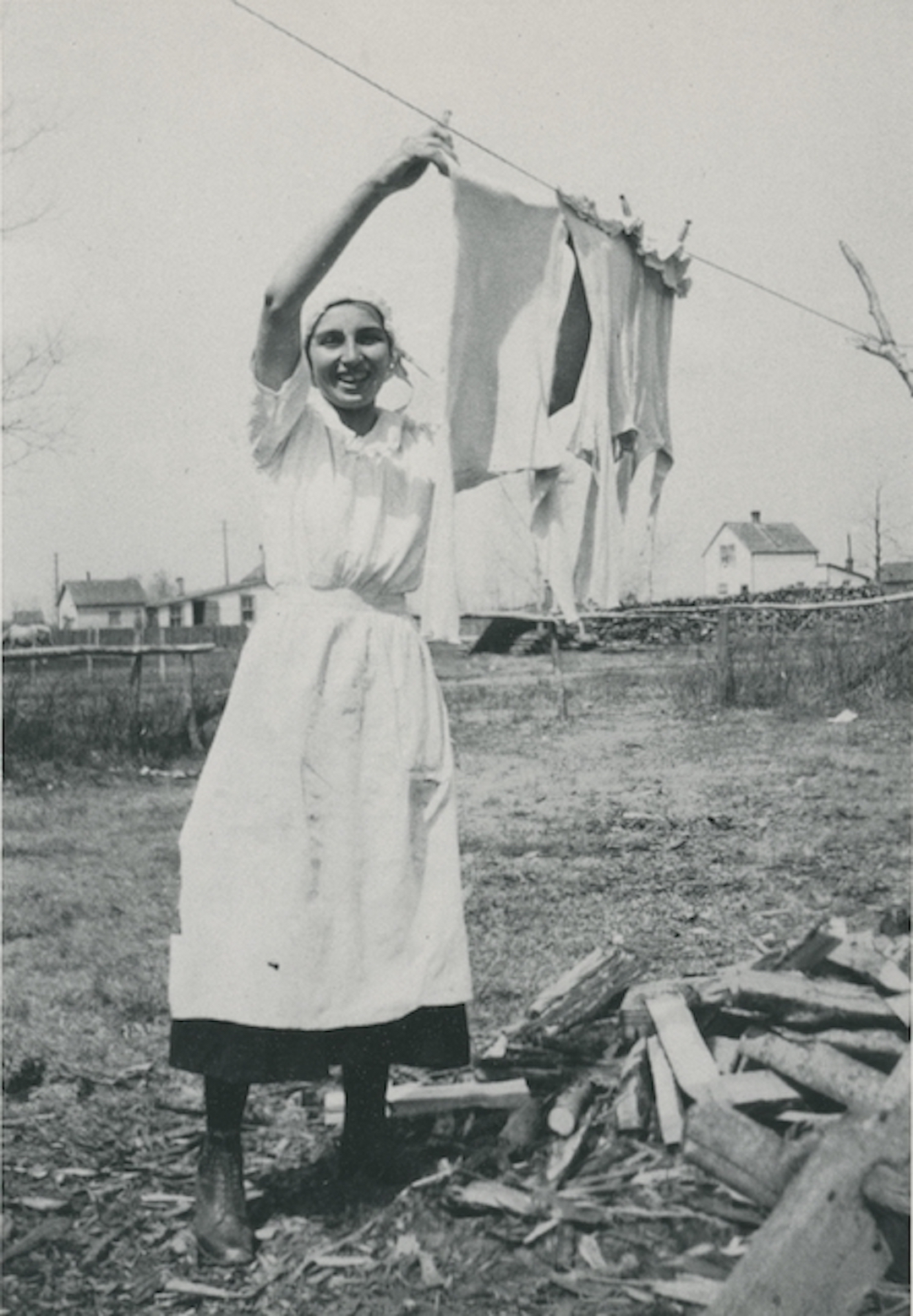
Woman Hanging Clothes, c1905
This photo of an unidentified woman hanging up laundry from what looks like spring time is a great reminder of just how much Kenora has changed in 100 years.
Based on her uniform this young lady appears to be a domestic worker or perhaps an employee of one of the many boarding houses in the downtown. She is hanging up laundry on a makeshift clothes line in an area where someone had been splitting firewood. Perhaps that was also her job. Behind her are lines of hitching posts for horses and several cords of uncut fire wood to her right. The land behind her looks quite barren because for the first 30 years of Kenora being a town there were very few trees in town limits. When people started moving here en masse in the 1880s one of the first things they did was cut down all the trees for both firewood and to build shelters. As a result Rat Portage/Kenora was a barren treeless landscape until well into the 1920s.
This young lady’s clothes tell a story too. She is wearing ankle boots, wool hose, and a black petticoat. This would have kept her warm, but also helped to deal with the mud that would have been everywhere in town at the time. This was before local roads were paved or even finished with crushed rock, so the streets, back lanes, and even many yards were muddy for much of the year. The boots would protect her feet and dark colours would conceal the dirt much better than her white work dress.
Photographer unknown
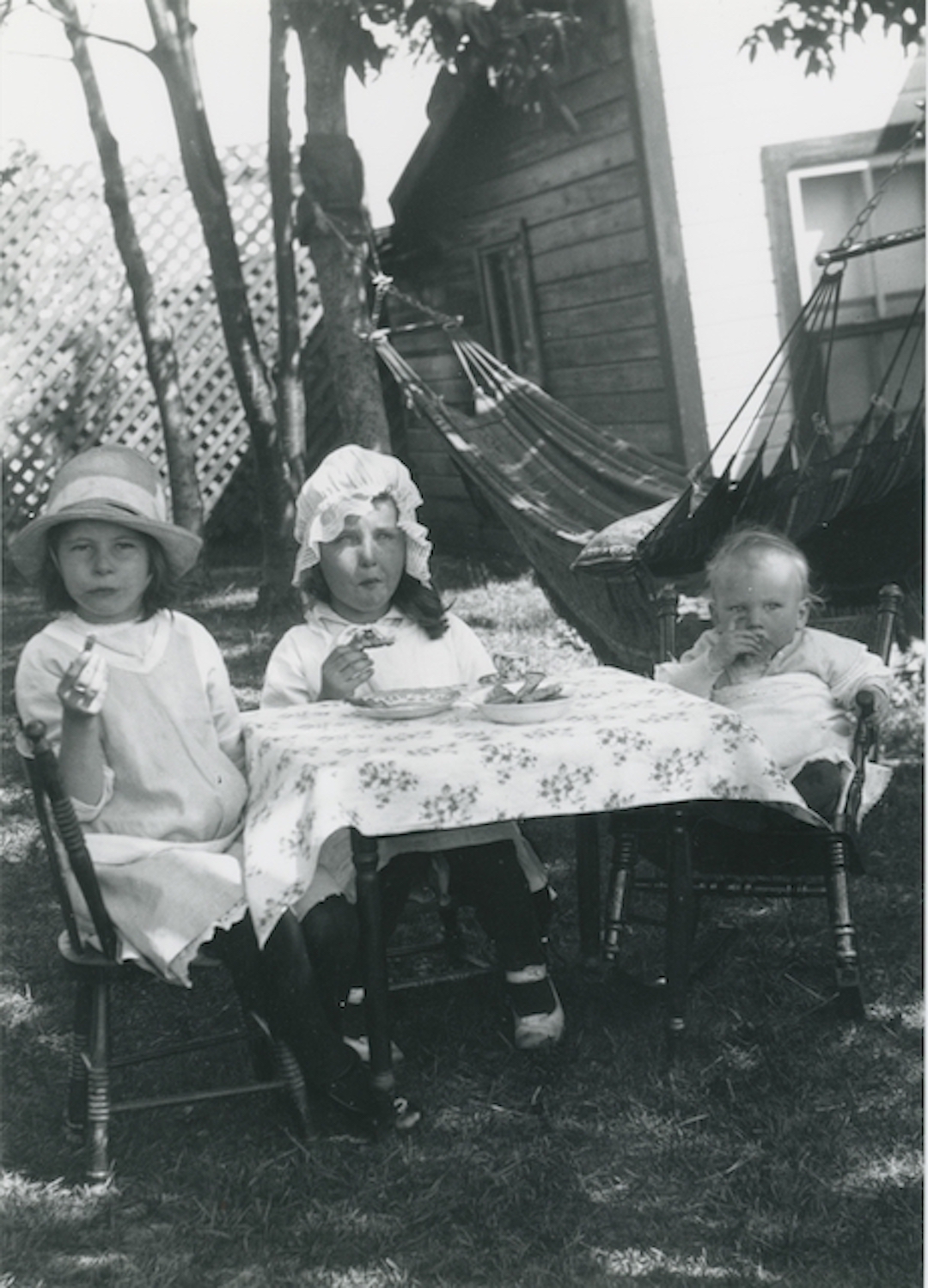
Tea Party, c1915
What better way to spend a summer afternoon than having a tea party with your pals.
Grace Linde (centre) in her white bonnet was having a grand time playing host to her friends in this 1915 photo. Despite taking place over 100 years ago, this scene could just as easily be played out today.
And if the tea party doesn’t get you where you need to be, then maybe a snooze in the huge and comfy looking hammock directly behind them would!
Photographer: Carl G. Linde
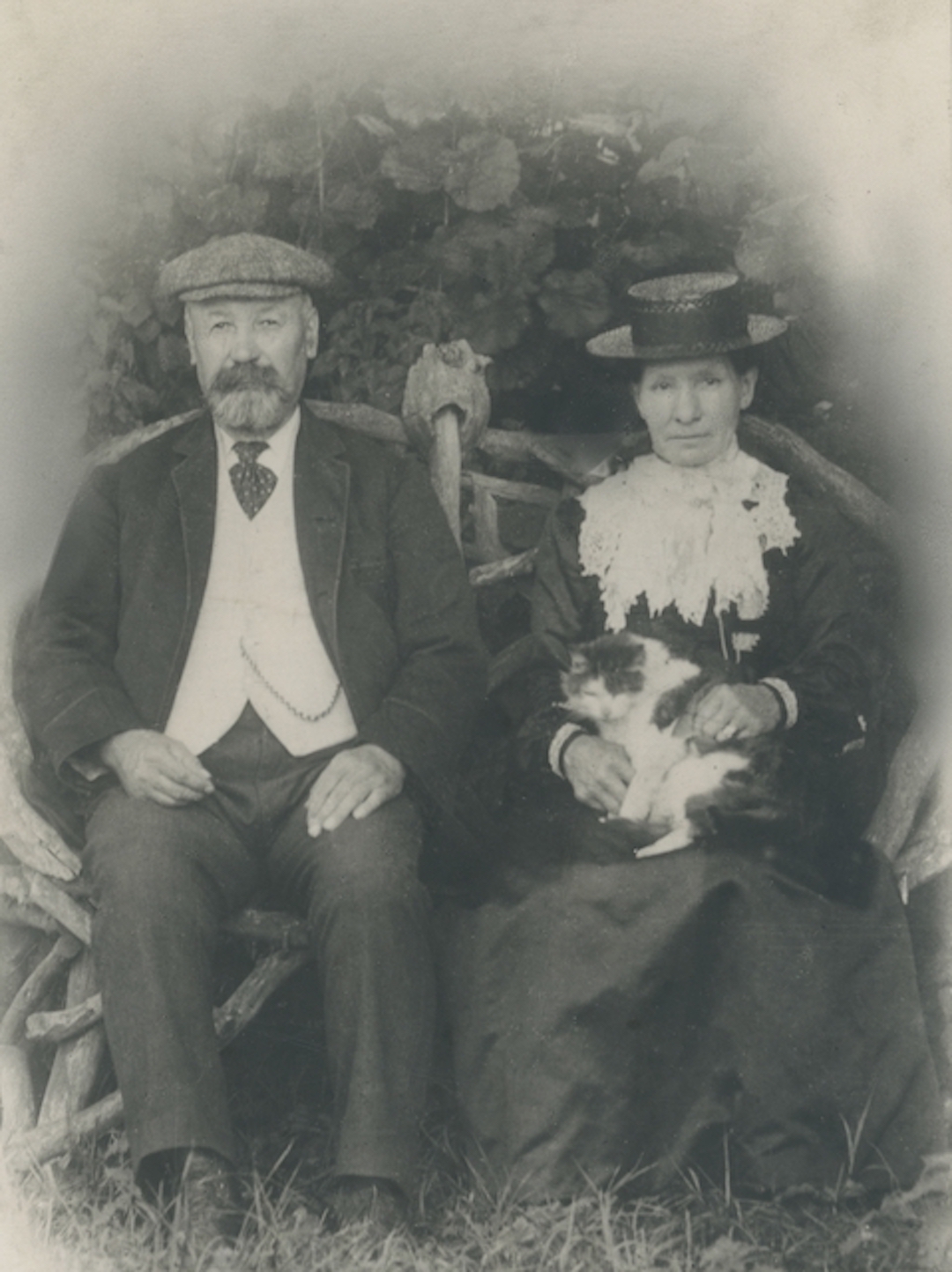
Family Portrait, c1915
This photo is interesting for several reasons—
The first is that it is a cute family photo with mum, dad, and the kitty. Anyone with a pet knows that they are part of the family, and even though we don’t know who these people are or really anything about them we have a pretty good idea that they loved their little kitty.
Secondly, around the turn of the 20th century and even into the 1920s it was very common for people to wear dark colours with lighter accent pieces. These dark coloured clothes hid dirt better, and did not show stains from mud, coal dust, or smoke. But while they hide coal stains, this couple must have been brushing white cat hair off of their clothing constantly!
Lastly, this photo is a very good example of an early kind of photo finishing. This was Photoshop before Photoshop. Take a look at the eyes of the couple. Notice how they really stand out in the image? That is because they have been touched up via “handwork” on the negative itself. An etching knife would have been used on the negative to remove some emulsion and make certain parts of the photo look darker. In a small print that most people had this would not be noticeable, but when you blow it up as we have you can see the touch ups on the eyes, and on the nose and mouth of the women.
Photographer unknown
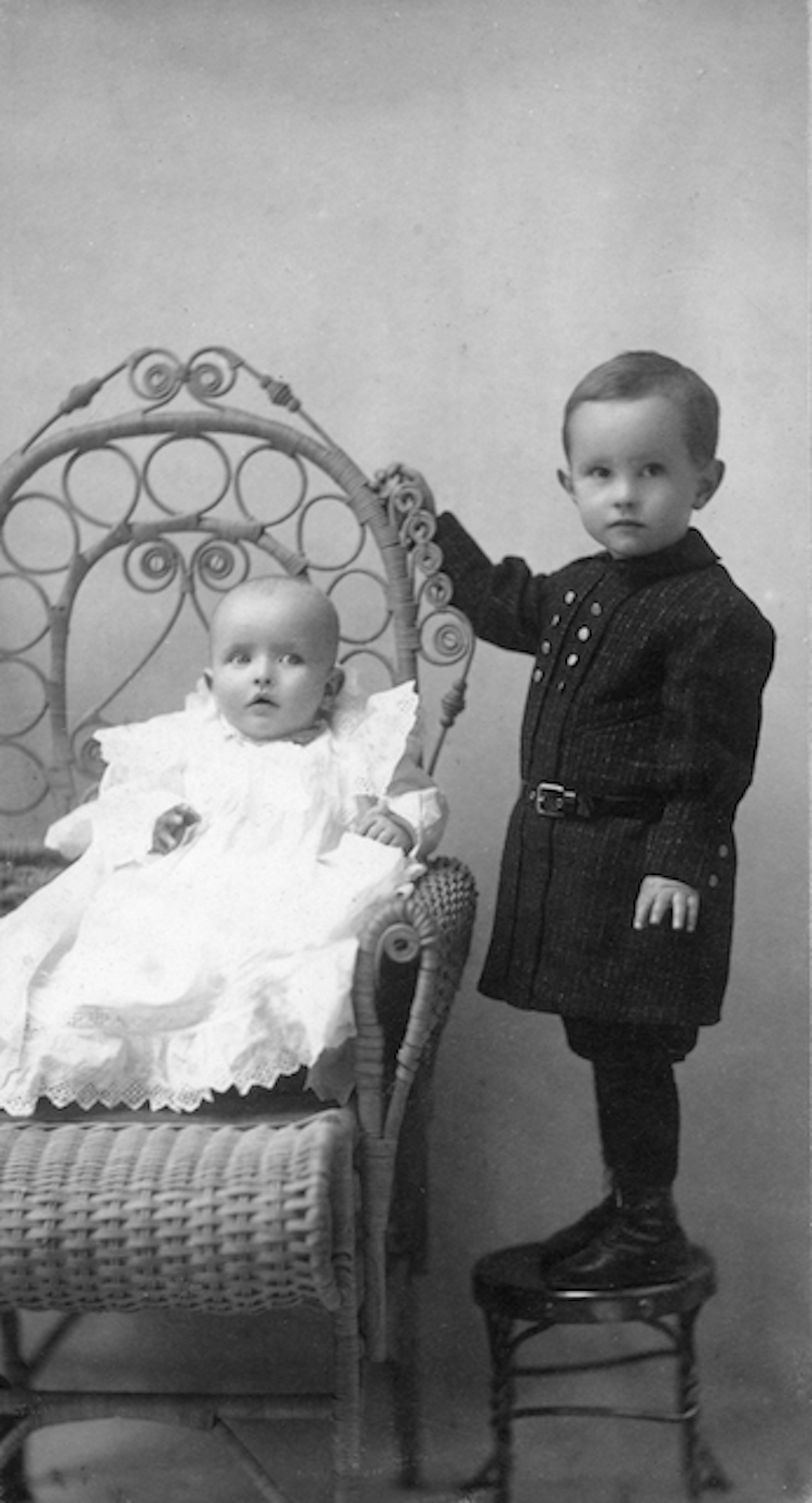
Art and Fred Seegmiller, 1906
These two young lads were the children of Melvin and Mary Seegmiller, early settlers of Rat Portage. Melvin, at age 18, arrived in the rough town of Rat Portage in 1886, just after the completion of the Canadian Pacific Railway. His first employment was at the log school house on Hennipen Lane where he shared the responsibility with one other teacher of teaching 70 students! Not surprisingly he changed professions and opened an insurance and real estate business.
In 1900 he married Mary Campbell and two sons were born to them – Fred in 1904 and Art in 1906. Sadly Fred died at the young age of 19. Art became an avid ski jumper, making good use of the Lakeside ski jump. He later enlisted with the Kenora Light Infantry. He, too, died at the relatively young age of 44.
Photographer: G.E. Whiten. Whiten was an award-winning professional photographer who lived and worked in Kenora from September 1905 until August 1909.
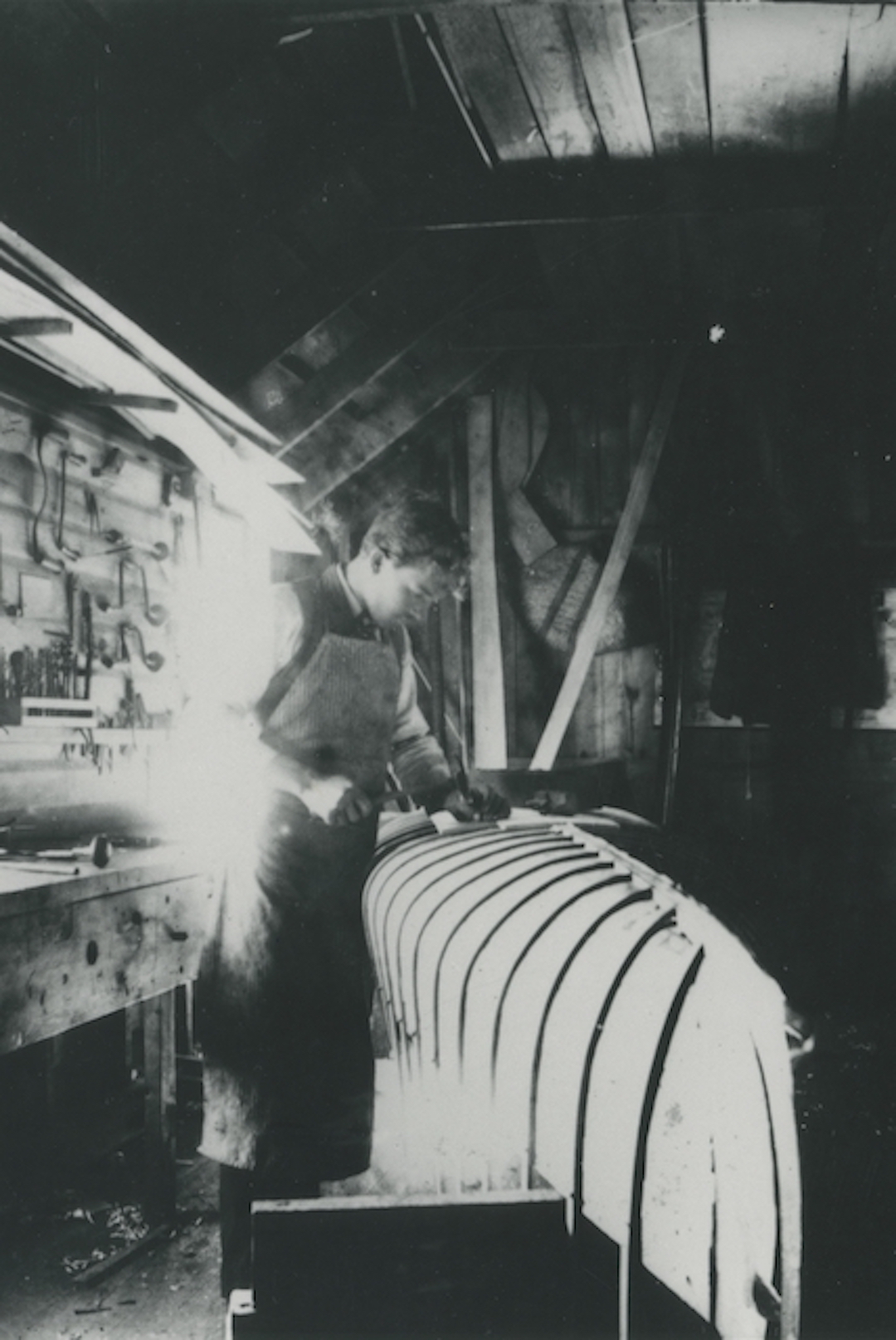
John W. Stone, 1901
John (Jack) William Stone was born in Barrie, Ontario in 1875 and it was there that he learned his trade as a skiff builder. Seeing the potential for someone in his line of work in the west, particularly in the lake-strewn land of northwestern Ontario, Jack Stone made the move in 1897. The enterprising 22-year old brought a number of skiffs with him, settled in Rat Portage and set up a thriving boat livery business. So successful was his venture that he eventually included boat building in his services.
Here, he is pictured in his first boathouse which was at the foot of First Street South. Initially he worked primarily on his own, building everything from canoes to iceboats. As his business, the J.W. Stone Boat Manufacturing Company, grew, so did his staff and his premises when he re-located to the foot to Main Street. They built sailboats, skiffs, gasoline launches, barges and punts.
Photographer unknown
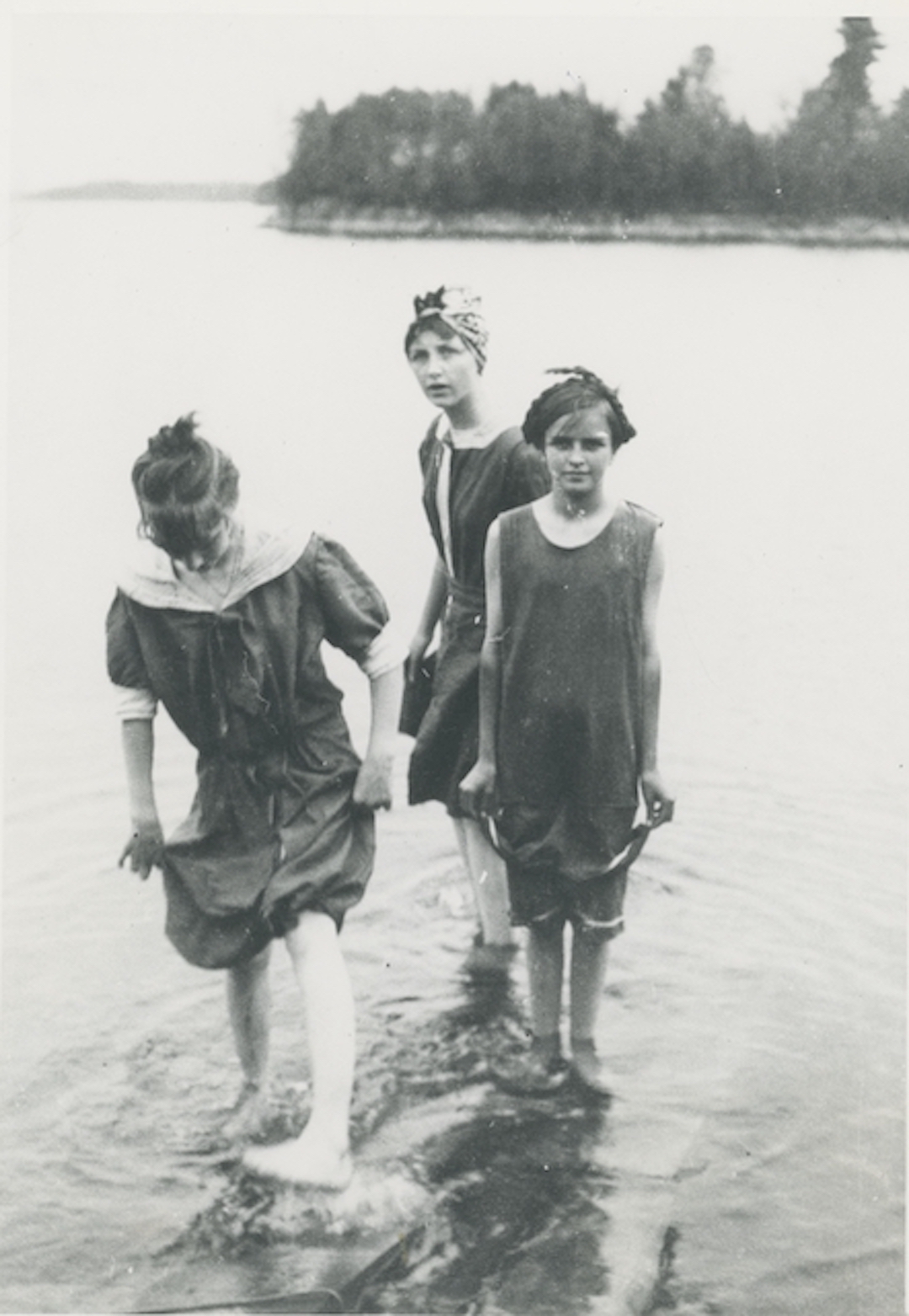
Kay Persse and Friends, c1910
Summers at Lake of the Woods look a little bit different these days. Then swimming outfits were modest affairs that included knee-length knickers, woollen bathing suits and swim caps.
These young ladies, Doris, Marion and Kathleen, were caught in a candid moment as they waded into the water on the south side of Coney Island.
Kathleen Persse, known more familiarly as Kay, was the daughter of John and Margaret Persse. She was the youngest of the five siblings. She eventually married Geoffrey Macdonald. Her sister Marjorie married Harold Gooderham; her sister Lorna married Louis Redmond. The family summer place became known as the “Persse-Gooderham-Redmond” camp.
Photographer unknown
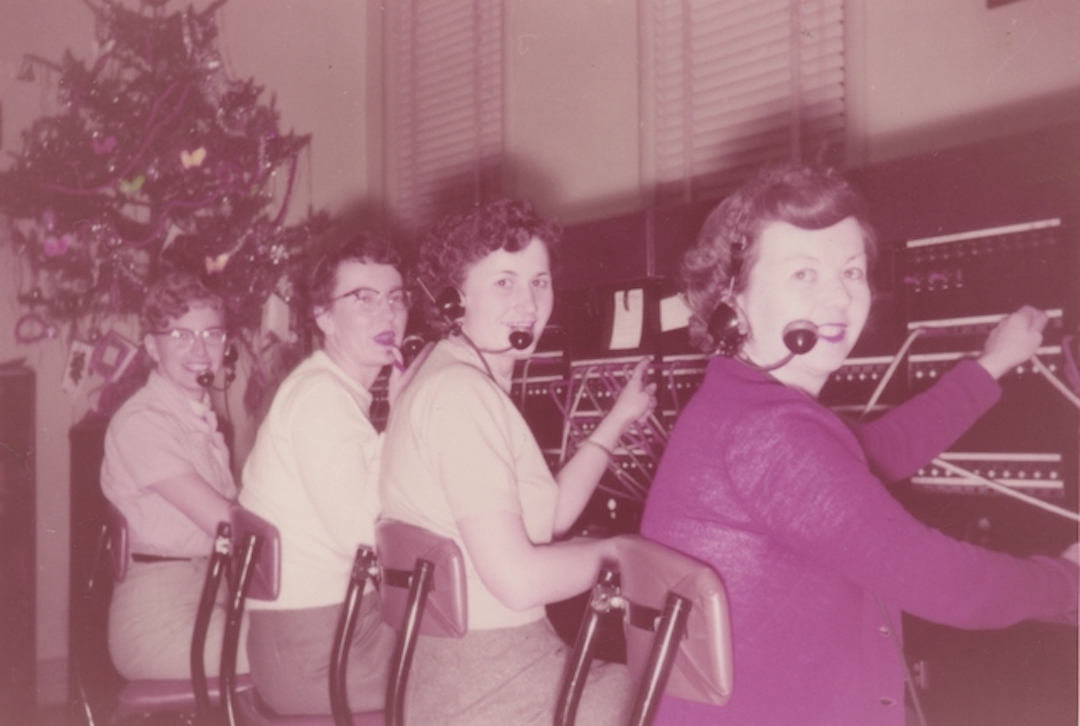
Switchboard Operators at the Kenora Telephone Exchange, 1957
Jocelyn Koeneg, Lee Caron, Agnes Berchaminski and Ethel Stokes (from left to right) were Kenora telephone operators.
In those earlier days of telephoning, manual switchboards were used and operators connected calls by inserting a pair of phone plugs into the appropriate jacks, thereby connecting the necessary circuits. The job involved some of the most technical tasks that women could perform in the workforce at that time. Not only were they required to be accurate and dexterous, the operators had to ensure that their voices were melodious and soft and they were trained to use only certain phrases like “Number please” and “Thank you.”
Photographer unknown
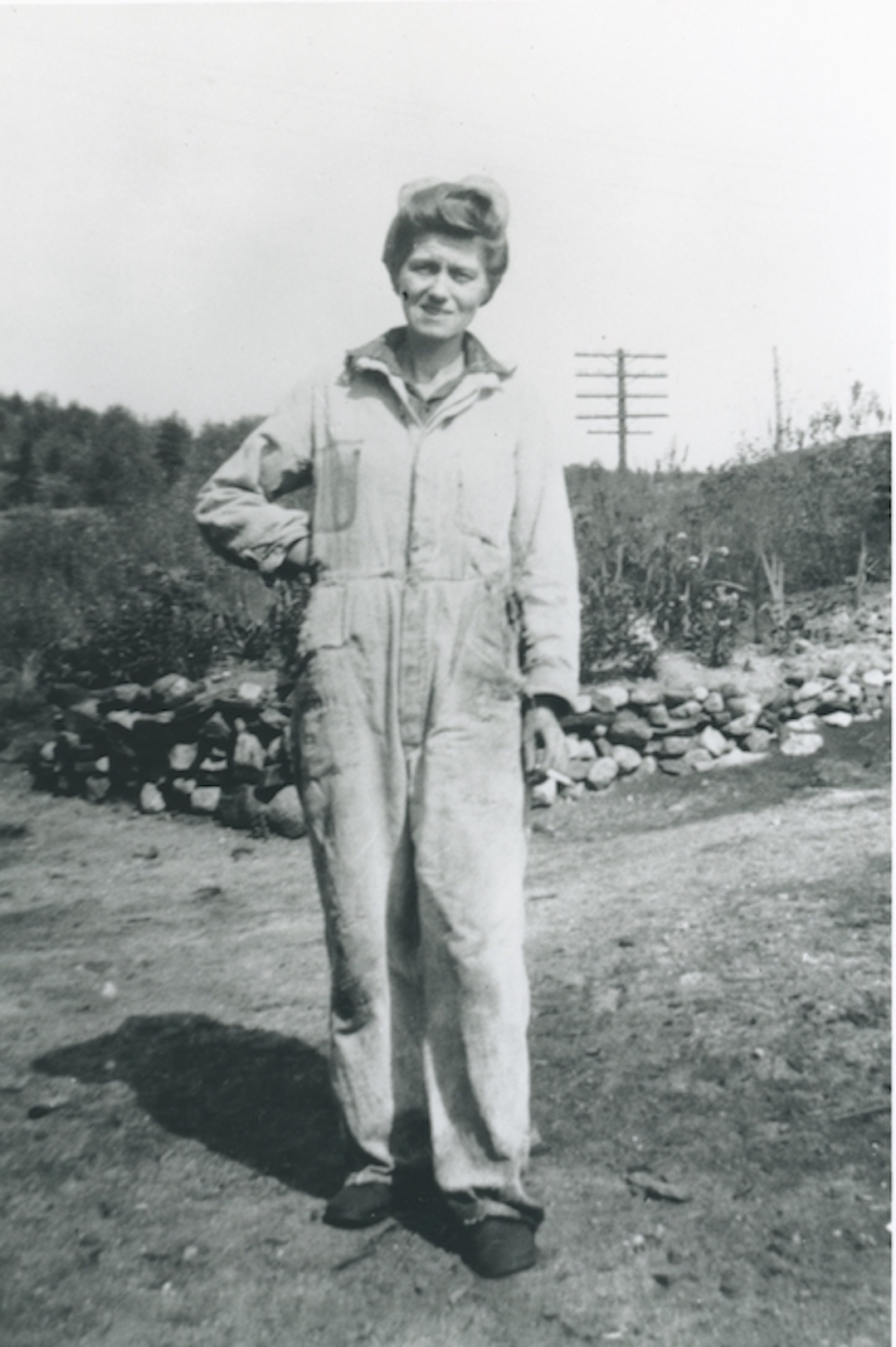
Barbara Graeper, c1940
Barbara Graeper was the first local wartime railway employee. She worked in the shops.
The Graeper family were not strangers to the railway life. They lived in one of the CPR company houses, situated west of the former roundhouse. On that site were the CPR greenhouses which were under the care of Bill Graeper, Barbara’s husband. He also was the gardener for the beautiful gardens that enhanced the grounds at the Kenora train station.
During World War II, with the shortage of men in the workforce, women stepped in. Even the male-dominated railway industry offered jobs to women who donned the traditional blue overalls to work alongside men. Barbara Graeper was one of those women.
The Graepers left Kenora in 1944.
Photographer unknown
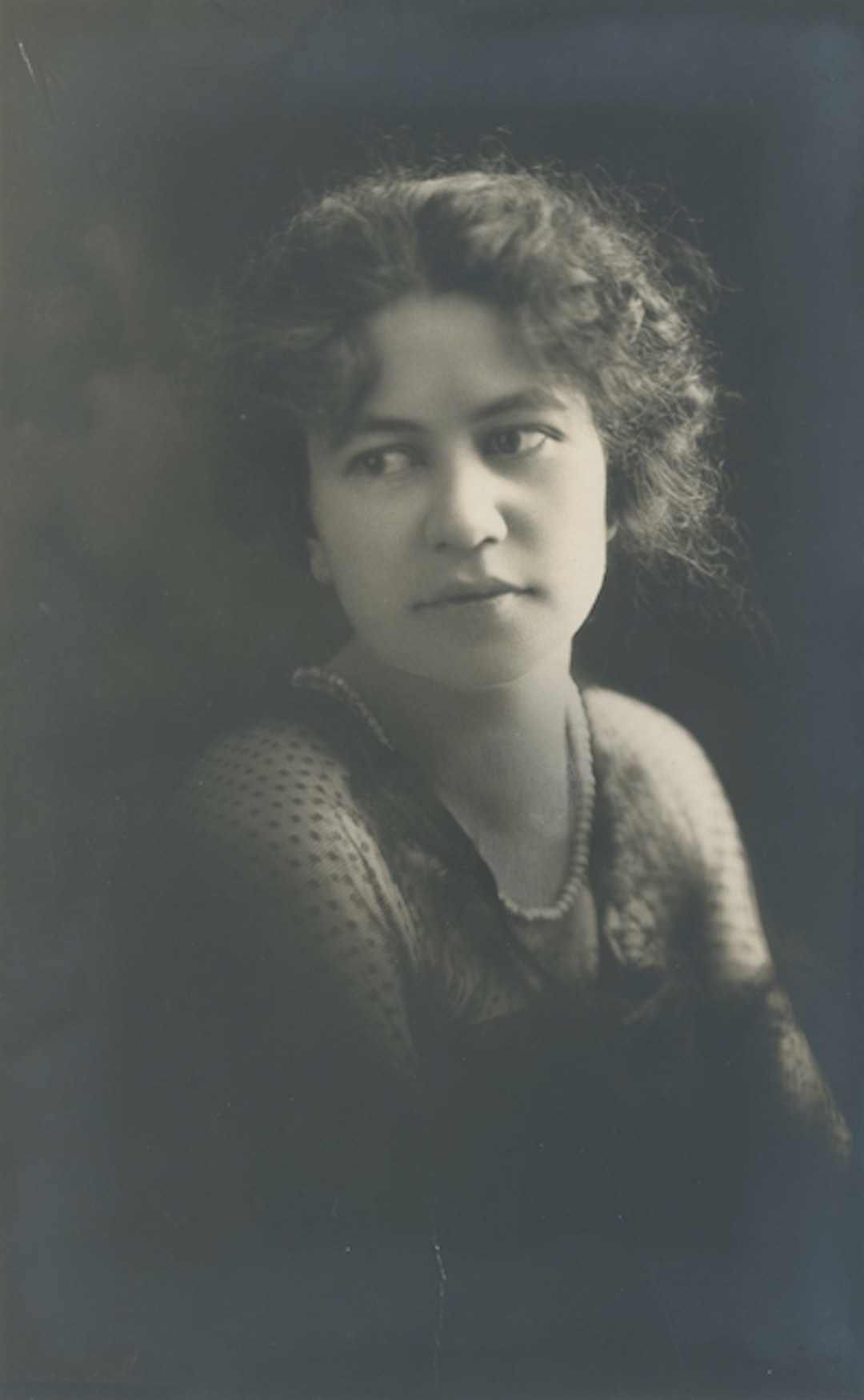
Florence Humble, c1910
Born in December 1889 in Rat Portage, Florence Humble lived most of her 85 years in this community. After completing high school she left Kenora for a few years to pursue her education in Winnipeg and in New York.
Education and social welfare were particular passions of Miss Humble who worked as a high school teacher and social worker and volunteered her time with the first branch of the Children’s Aid Society, the Women’s Institute, the Kenora Public Library Board and the Lake of the Woods Museum Board.
It was said of her:
“A firm believer in equal opportunities for women in advancement of their careers, their involvement in public life and an opponent of discriminatory practices, she was a fervent admirer of the late Nellie McClung…But in spite of the strength of her convictions, a keen sense of humour saved her from narrow-mindedness, heated discussions and often eased solutions to complicated problems, while her inconspicuous generosity made possible the education which launched several young people upon successful careers.”
Photographer unknown
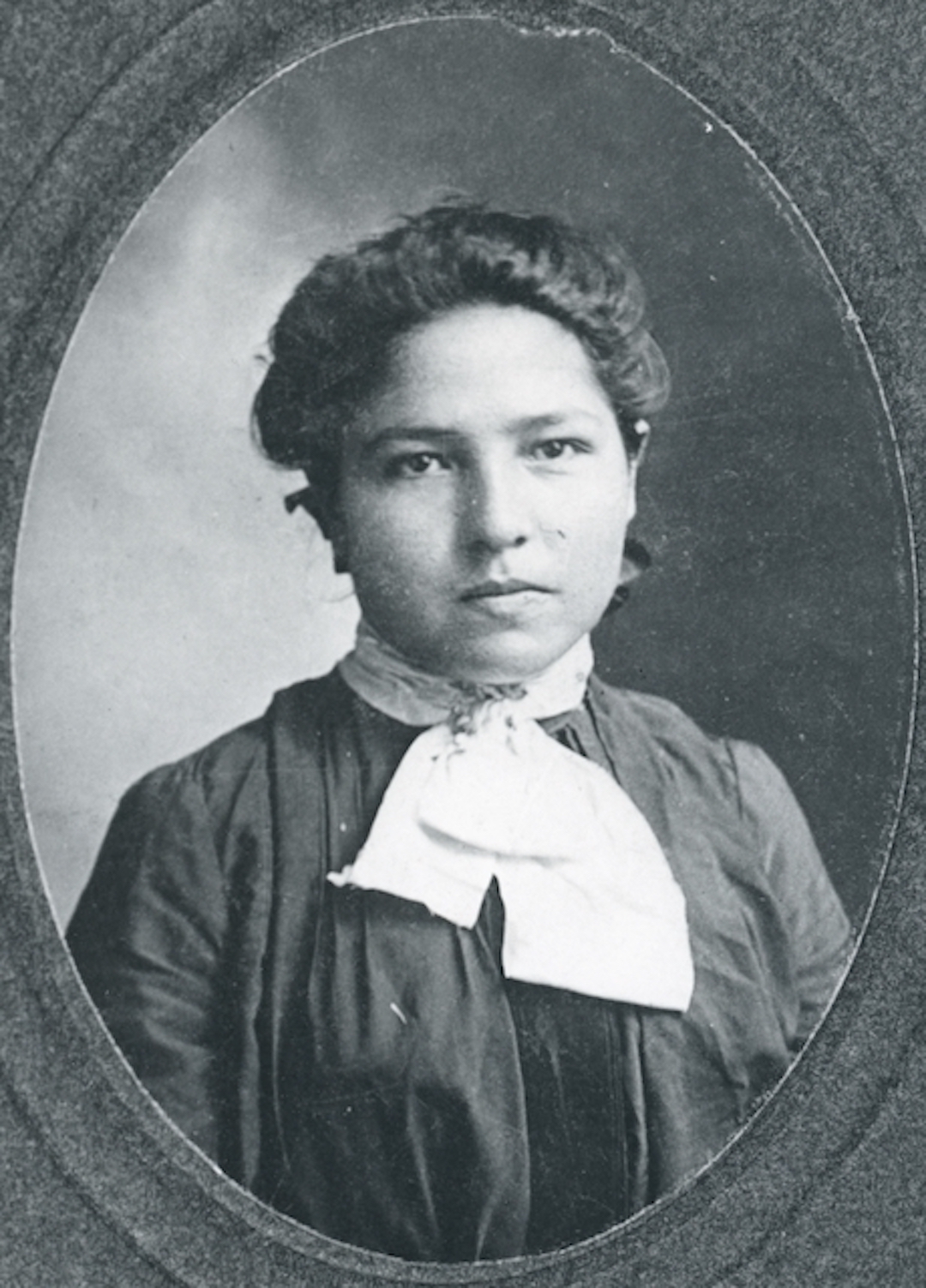
Ogimaamaashiik | Matilda Martin, 1904
On April 29, 1885, a baby was born to Mary Lindsay of the Dalles Reserve (now Niisaachewan Anishinabe Nation) and Benjamin Lavergne. The baby, Ogimaamaashiik, was only an infant when her mother died and so she was left in the care of her grandparents, Chief Thomas Lindsay and Jane Lindsay.
At age 19 she married John Kipling, a mixed blood missionary, who had been hired to teach at the federally-funded day school on the reserve. She worked alongside her husband at the day school until his early death from pneumonia when their son John was only one year old. A couple of years later, she remarried, taking Edward Martin as her husband. They had six children. Matilda Martin also cared for foster children, giving a home to 11 of them over the years.
Photographer unknown
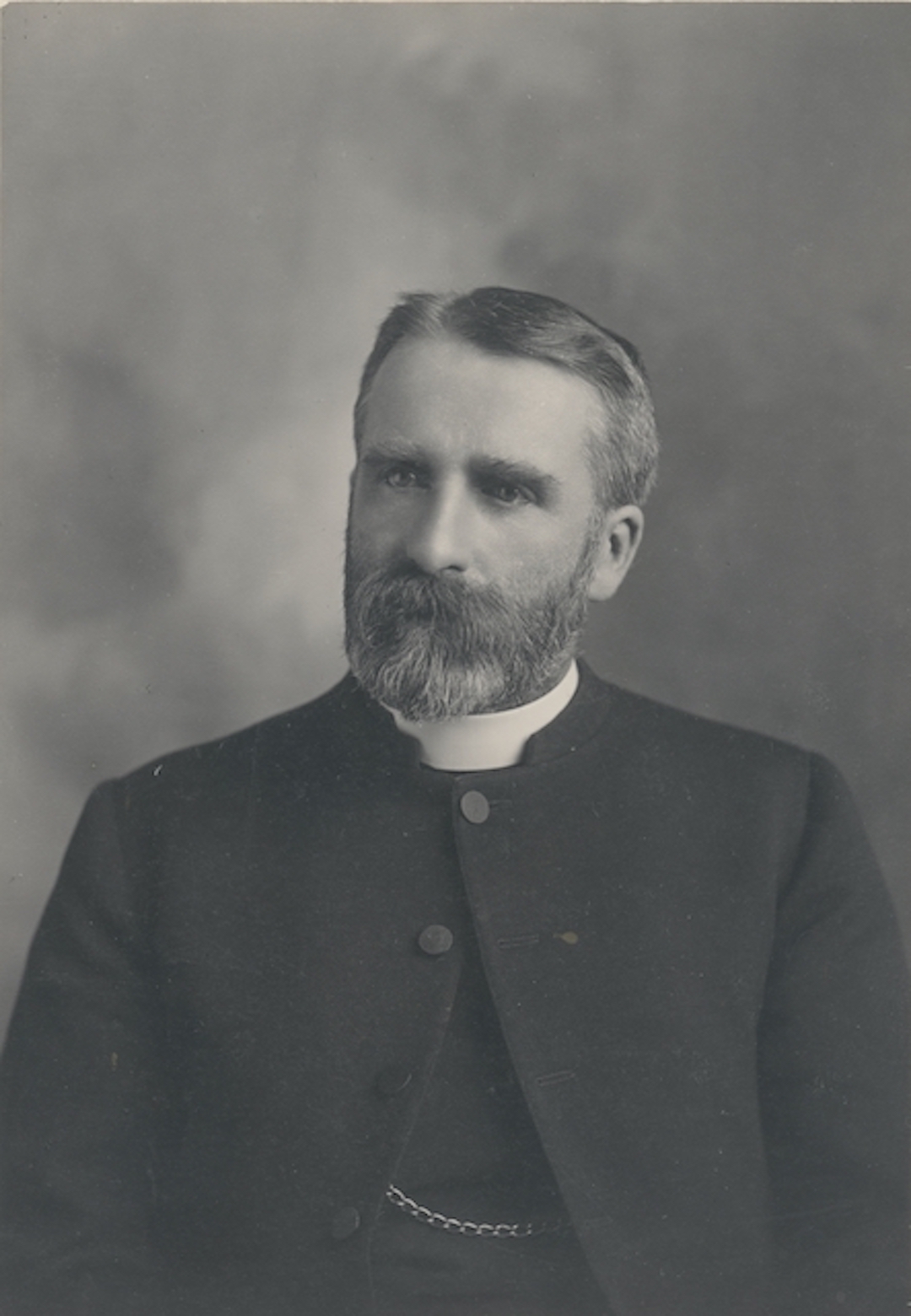
Bishop Joseph Lofthouse, c1906
Joseph Lofthouse was born in Yorkshire, England. He came to Canada in 1882 at the age of 27 and within a year was ordained and working as a missionary at York Factory on Hudson’s Bay.
To give an idea of the challenges of life in the north, consider the story of Lofthouse’s eventual marriage to Betsy Fallding who came from England. On his first attempt, he and his guide walked eight days from York Factory to Churchill where Betsy was to land. However, because Betsy was travelling as a single woman and the ship had no proper accommodations for her, she was refused passage. With winter approaching there were to be no further ships that year so young Joseph had to wait another year. He made the eight day walk once again to meet Betsy, but discovered that he was the only preacher around and being that he couldn’t conduct his own marriage ceremony, it was decided that his fiancé would have to go back to England. As luck would have it, the captain of a Canadian government ship which was in port, was a magistrate and he was able to conduct the ceremony.
Joseph and Betsy eventually settled in Kenora when he was appointed the first Bishop of Keewatin in 1902.
Photographer: G.E. Whiten. Whiten was an award-winning professional photographer who lived and worked in Kenora from September 1905 until August 1909.
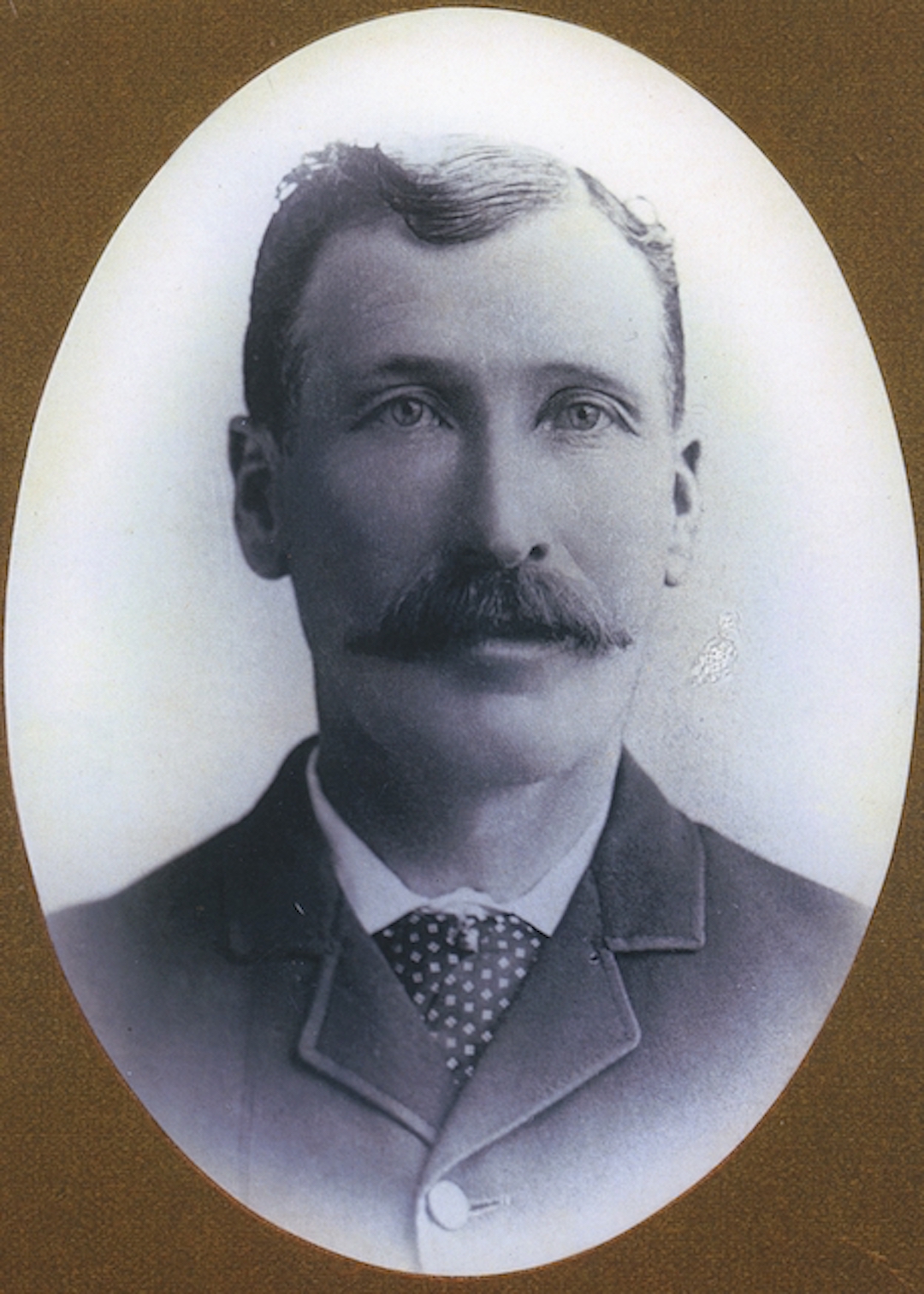
Frank Gardner, c1895
Frank Gardner is generally acknowledged as the first permanent white settler in the area, arriving in what became known as Keewatin in 1876. He was born in southern Ontario in 1848, raised on the family farm and came west when he was in his mid 20s. He set up his business almost immediately, engaging in buying furs but eventually transitioned to general merchandising. By 1879 he was operating his business in Rat Portage on the northwest corner of Main and Second Streets. Through the years it was known as both Gardner and Company and Gardner, Rice and McLeod.
Frank Gardner passed away in 1937.
Photographer unknown
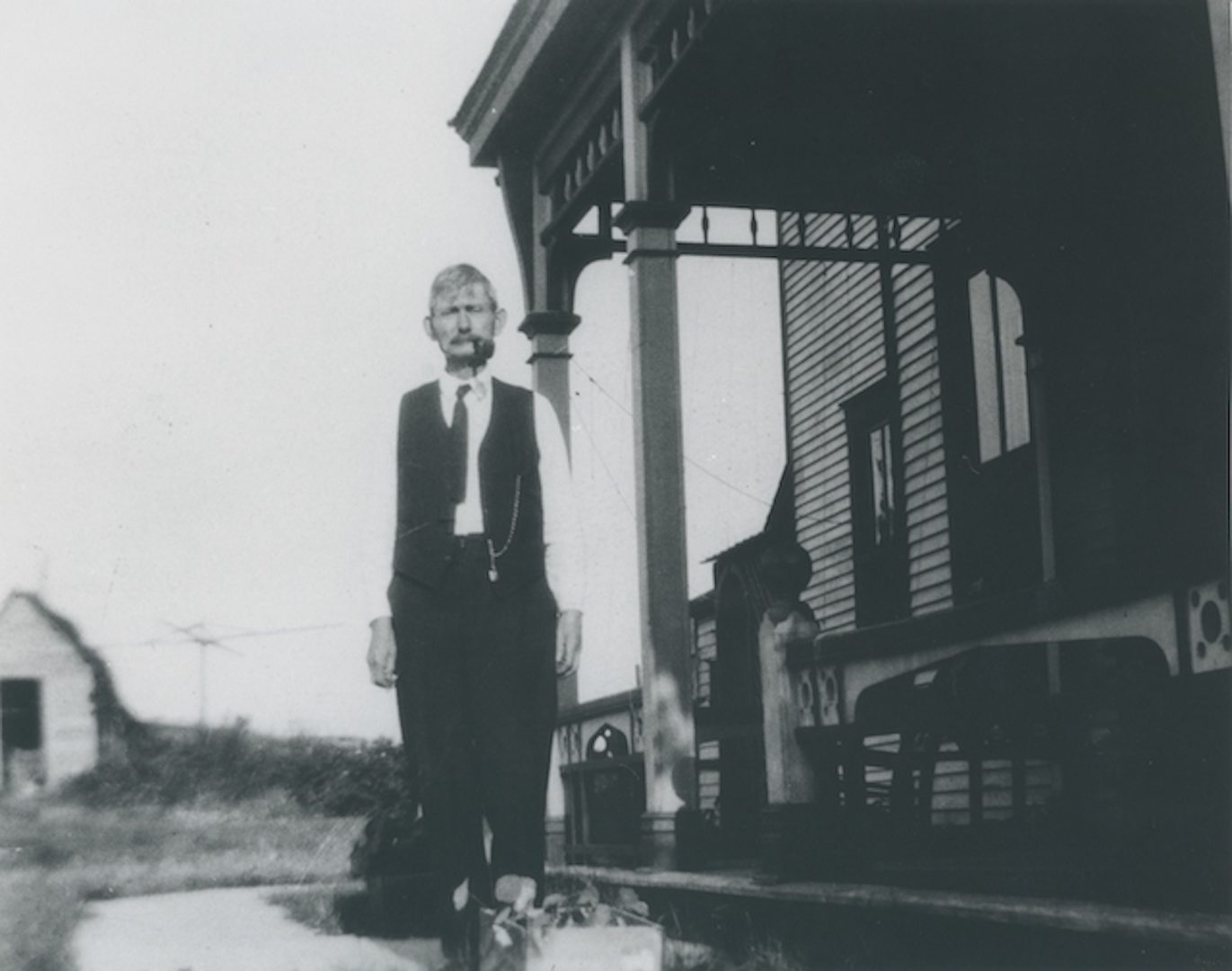
John Walls, c1920
John Walls, foreman of the Keewatin Lumber and Manufacturing Company, was the “Walls” of the current “Mather-Walls House” in Keewatin. He purchased the house in 1906 from John Mather who had had the house built in 1889. One of his daughters, Edna, was the last resident of the home. She resided there until it was purchased in 1975 by the Ontario Heritage Trust. Here, he is pictured standing outside the house.
John Walls was from Bathurst, New Brunswick. He was working in the mill there when he decided to move to Keewatin in 1883 and take up work for the Mather family. He worked his way up to general manager of the company. He and his wife Catherine had four children – George, Jean, Edna and John.
Photographer unknown
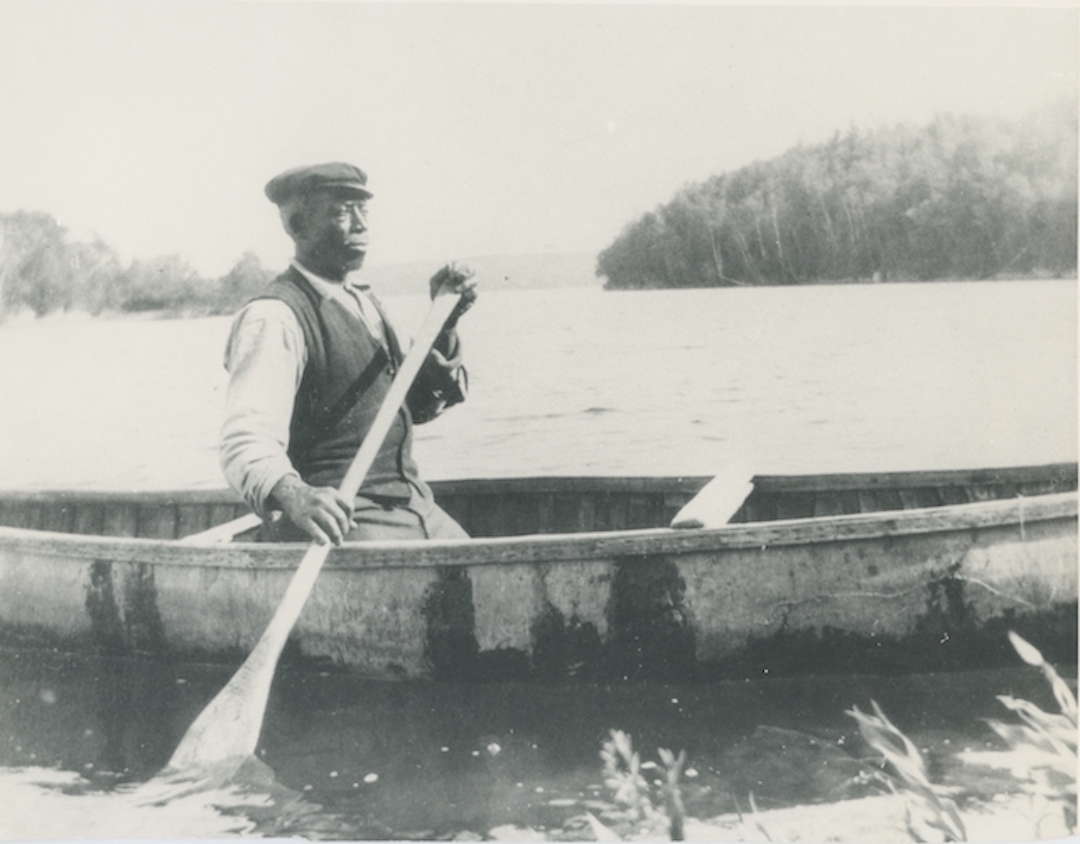
Billy Ross, c1910
Billy Ross always claimed that he was “the first white man to cross Lake of the Woods”, a reference to the fact that when he passed through here the first time the area was only inhabited by the Anishinaabeg.
He came west, at age 23, with the Wolseley Expedition which had been dispatched to quell the Red River Resistance led by Louis Riel and the Métis in 1870. It was then that he first saw Lake of the Woods. He returned and settled eventually in the Rush Bay area where he built a small camp. He farmed, trapped and did work for people on the lake. He and his wife Mary had at least four children – Elizabeth, Mariah, Margaret and William.
Billy Ross was in his early 80s when he passed away in 1931.
Photographer unknown
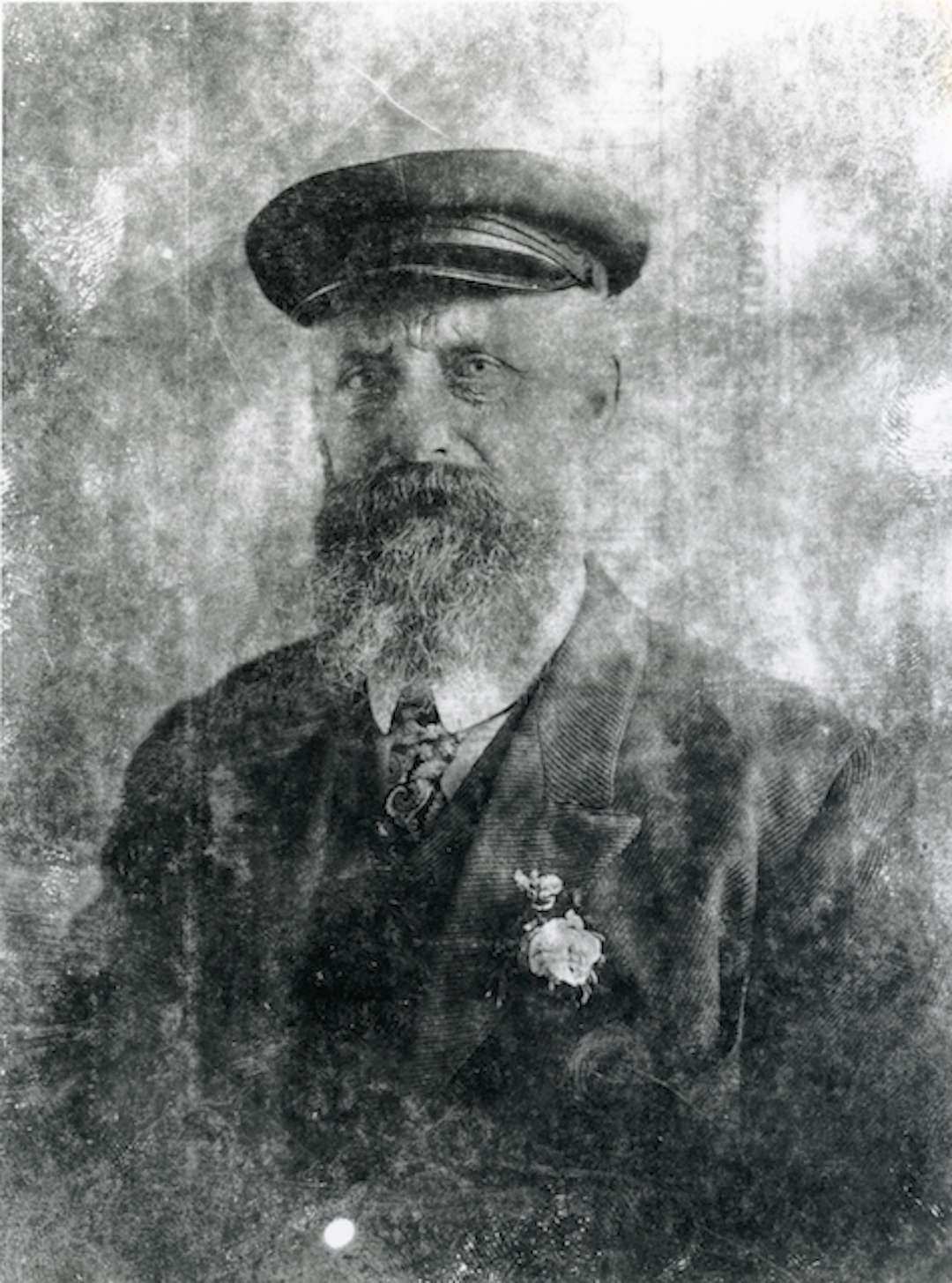
Captain Clifford Lewis, c1907
From the late 1870s until the early 1960s, steamboat travel on Lake of the Woods supported many industries – mining, lumbering, commercial fishing – and was also an important means for the transport of passengers. Steamboat captains commanded a great deal of respect for their knowledge of the lake and their ability to navigate their large vessels through the channels and bays of the lake.
Captain Clifford Lewis was among them. Although coming, with his wife Mary, from the agricultural community of Lucan, Ontario he took to the water well and by the 1890s he owned several steamboats which he operated on Lake of the Woods. Among them were the Swallow, a 92-foot stern-wheeler, the Shamrock, the Kenina and the Highland Maid. All were passenger vessels.
Photographer: G.E. Whiten. Whiten was an award-winning professional photographer who lived and worked in Kenora from September 1905 until August 1909.
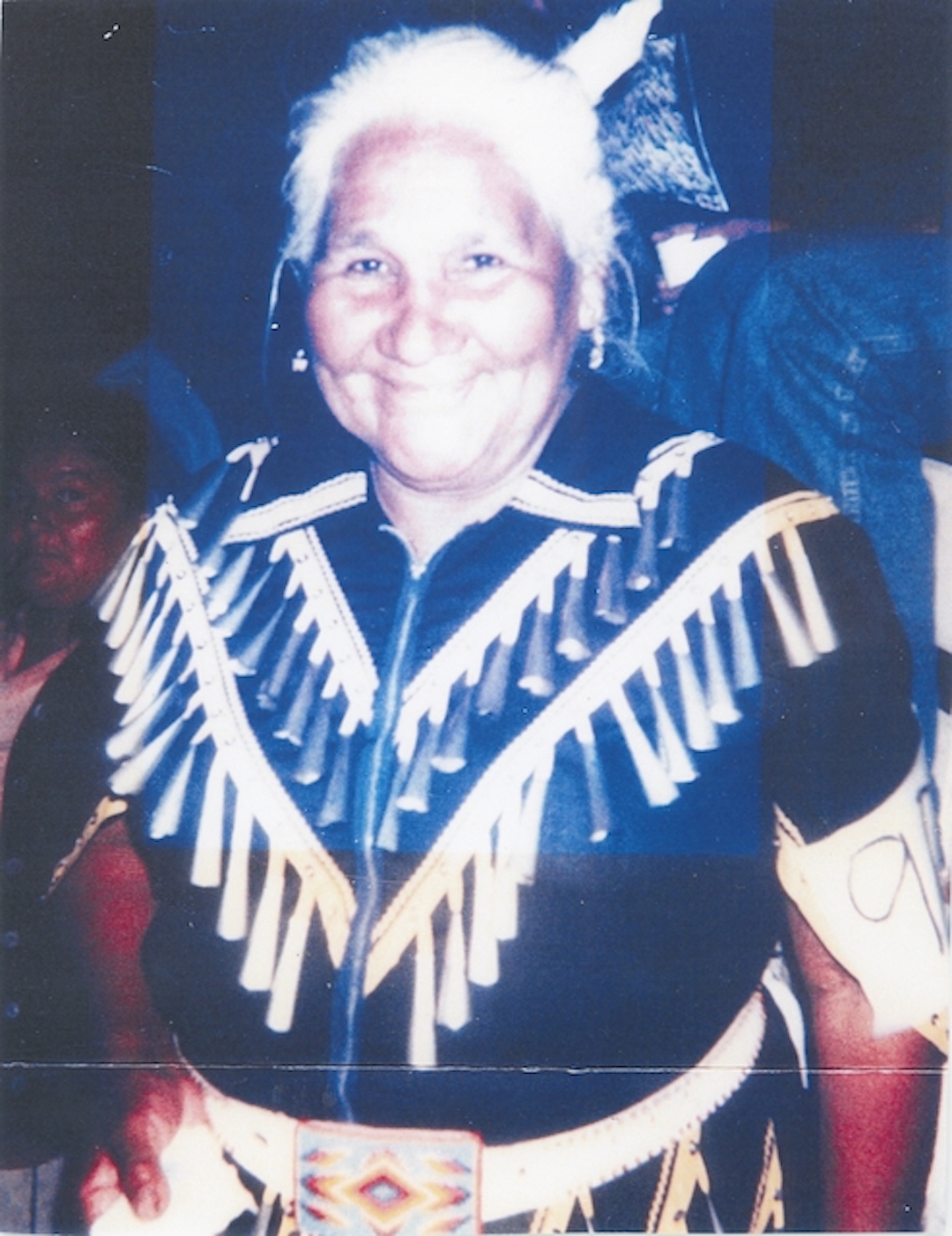
Maggie White, c1980s
The story of the origin of the Anishinabe jingle dress is the story of Maggie White of Naotkamegwanning First Nation (formerly known as Whitefish Bay First Nation).
When I was a small girl, I was born sickly. I was always ill as a child, then when I was eight years old I was given this dress. This dress, I was told, was special and it was made for me. I was given this dress by my grandfather. After this dress was given to me I began to feel better. I wasn’t sickly anymore…
(Translated by Rhonda White)
It was Maggie grandfather, Pinasse, who made the dress for her. Throughout his life, he had had a vision of a dress decorated with shiny cones that made a distinctive sound. Songs, dances and ceremony also came with the dress through this vision.
The jingle dress is a healing dress and continues to be made and worn by women today, not just in the Lake of the Woods area but all across North America.
Photographer unknown
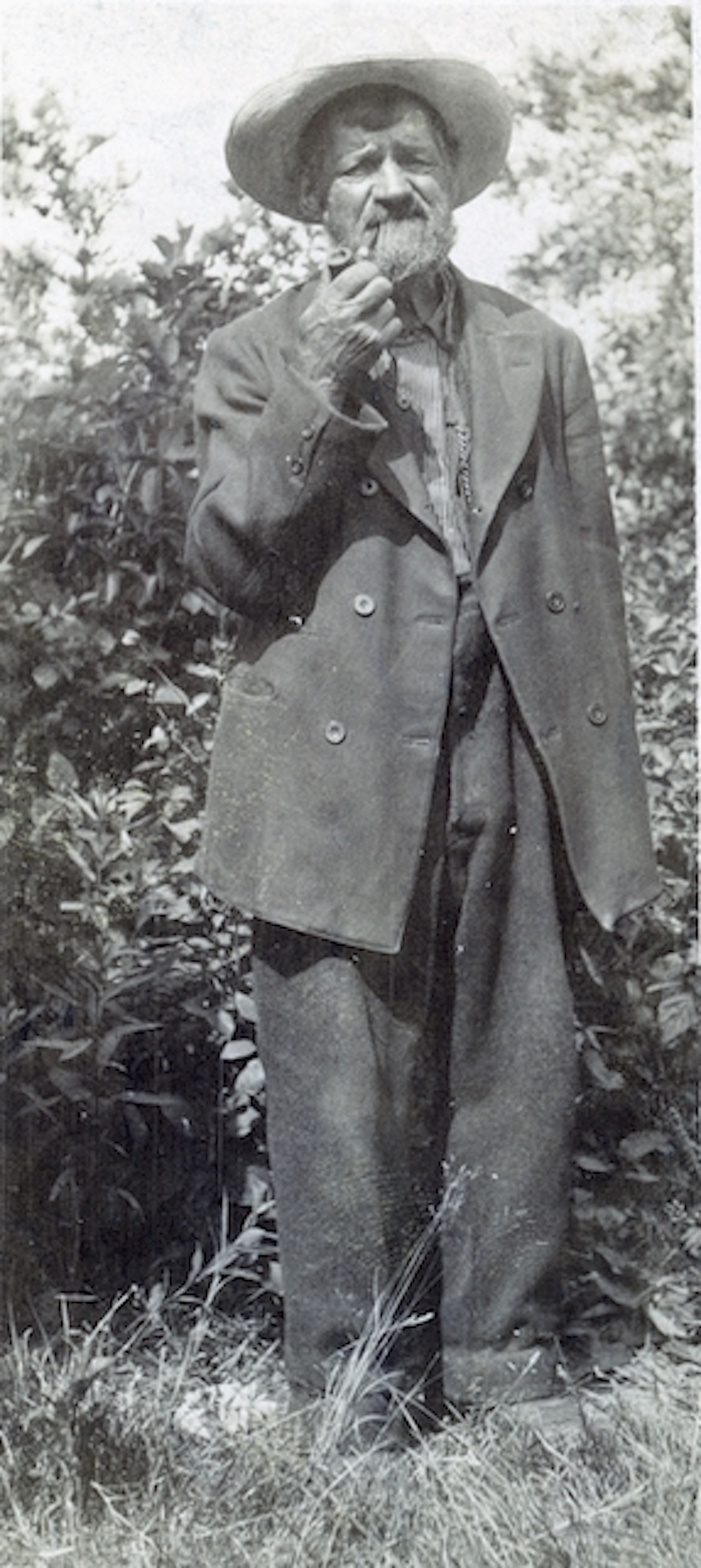
John “Scotty” Pattison, c1910
This is the Scotty of Scotty’s Island.
Born in Edinburgh, Scotland around 1840, Scotty, as he came to be known, came to Canada as a young man. He settled on an island on Lake of the Woods that now bears his name around 1880. He built a log cabin, cleared several acres for a garden, and lived alone except for the company of his cat. The occasional visits from folks from town or men coming to and from the lumber camps was enough company for him.
When Scotty passed away at Ernest Lalonde’s stopping place at French Narrows in April of 1922, it was said of him: “Perhaps, after all, he secured more out of life than those of us who live in the hustle and worry of the towns and cities.” He lived to the good age of 82 and is buried in the Lake of the Woods Cemetery.
Photographer unknown
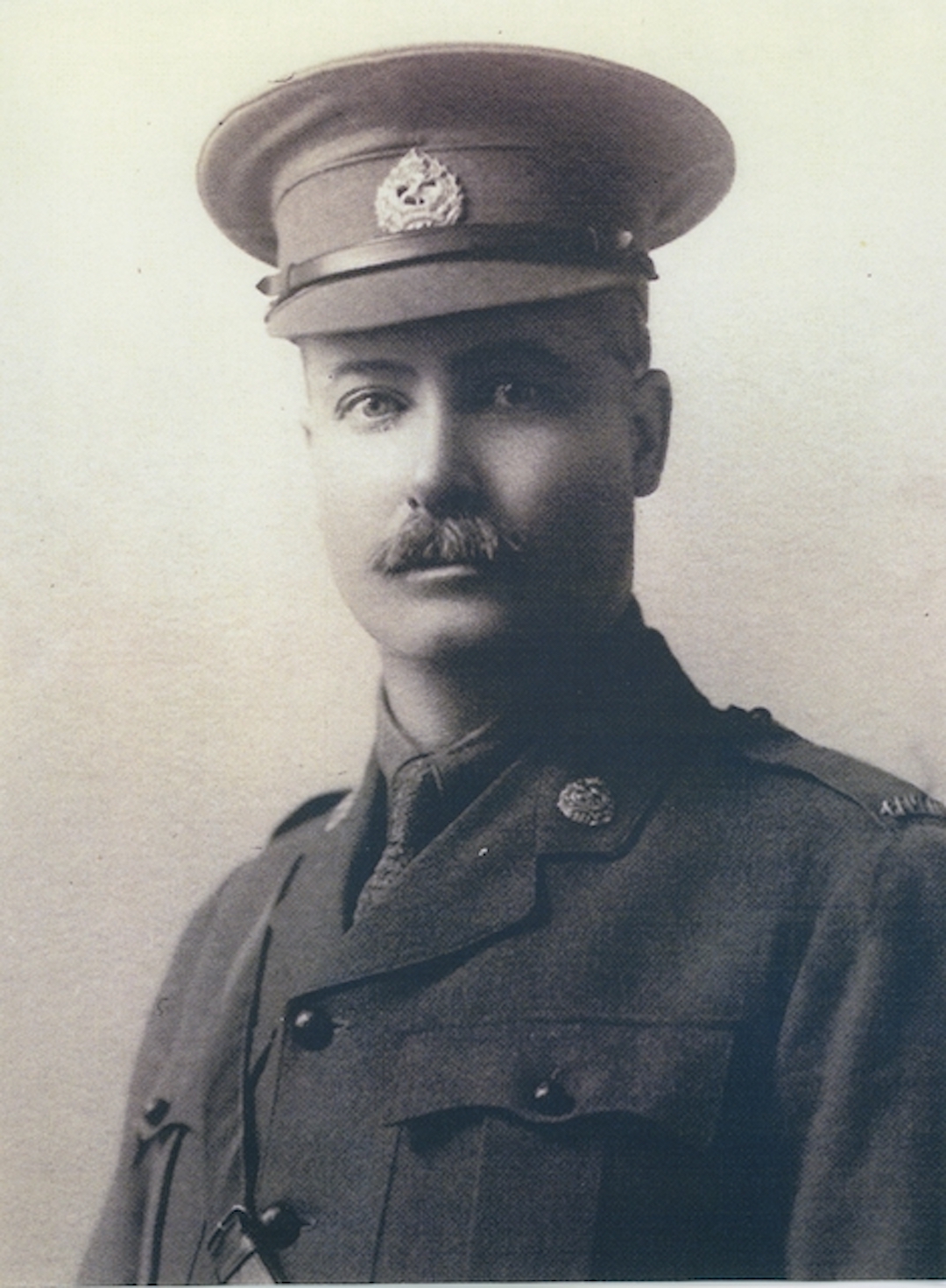
Colonel Ashton T. Fife, c1921
Lieutenant-Colonel Ashton Thomas Fife served in the Canadian Forestry Corps during the First World War. He enlisted with the 141st “Bull Moose” Battalion and he is shown in uniform here with the cap badge of that Battalion visible.
Fife was an officer in the pre-war militia and continued to serve after the war, eventually commanding the Kenora Light Infantry, Kenora’s former militia unit. In addition to his militia duties, Fife owned and operated Fife’s Hardware on Main Street and was Mayor of Kenora from 1926-1927.
Photographer unknown
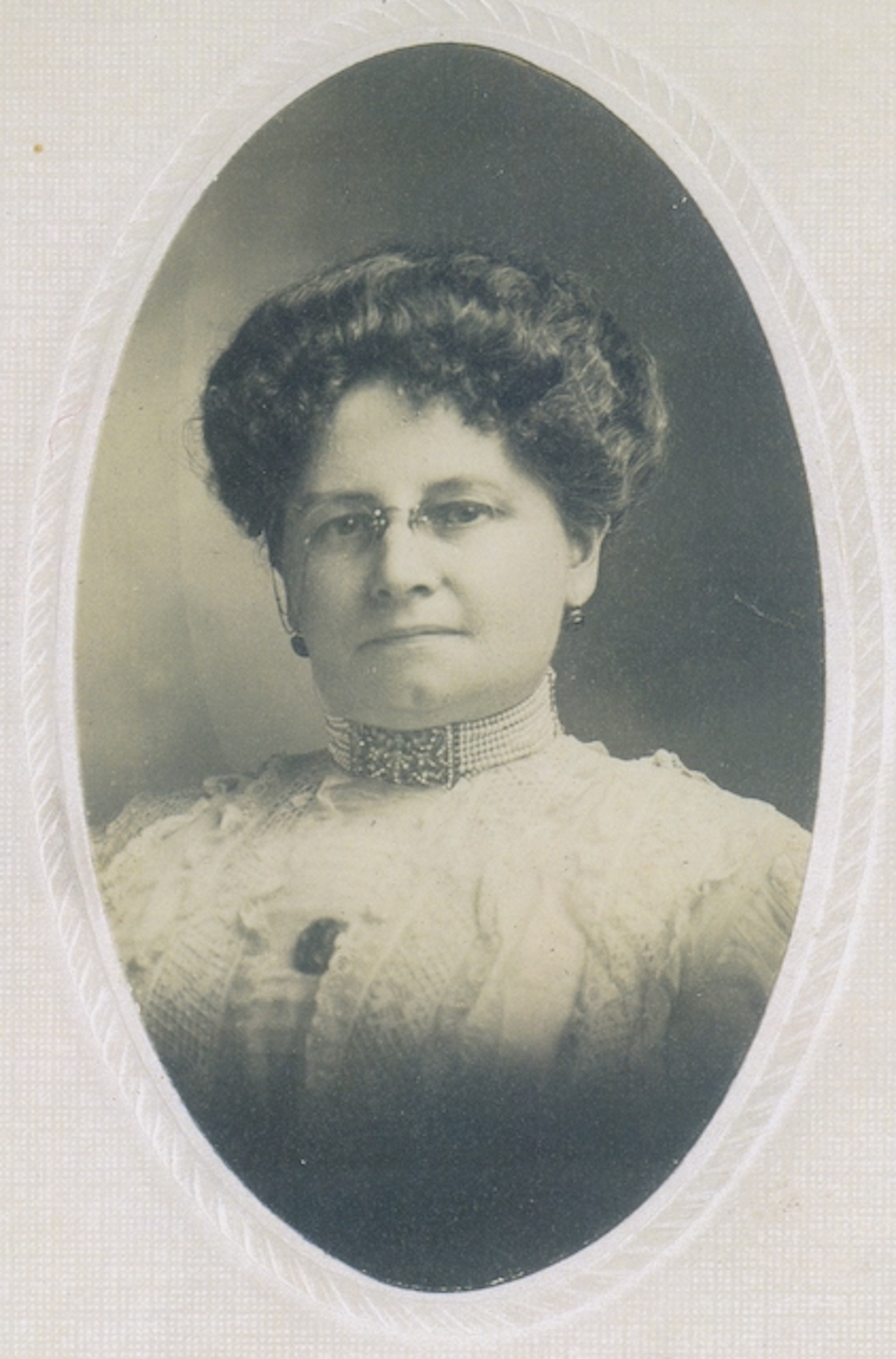
Emma Sharpe, 1909
Emma Sharpe was one of Kenora’s early businesswomen.
She was born in Hamburg, Germany and by a circuitous set of circumstances, found her way to Rat Portage with Ernest Sharpe who she had married in 1882. Within a couple of years she was running the Bismarck House, a boarding house on the southeast corner of Second Street and Hennepin Lake. Her main clientele were young working men. The 1901 census indicates that among her boarders were: two farmers, a factory labourer, gold miner, carpenter, railway foreman and labourer, stone cutter and a painter/decorator. She sold the boarding house in 1916.
She wisely invested in several strategic properties in town, owning at least six rental houses and building the Sharpe Block on Second Street that housed retail shops and offices.
In 1929 she bought a McLaughlin Buick and learned to drive. She was 76 years old.
Photographer: H.E. Peagam of Toronto.
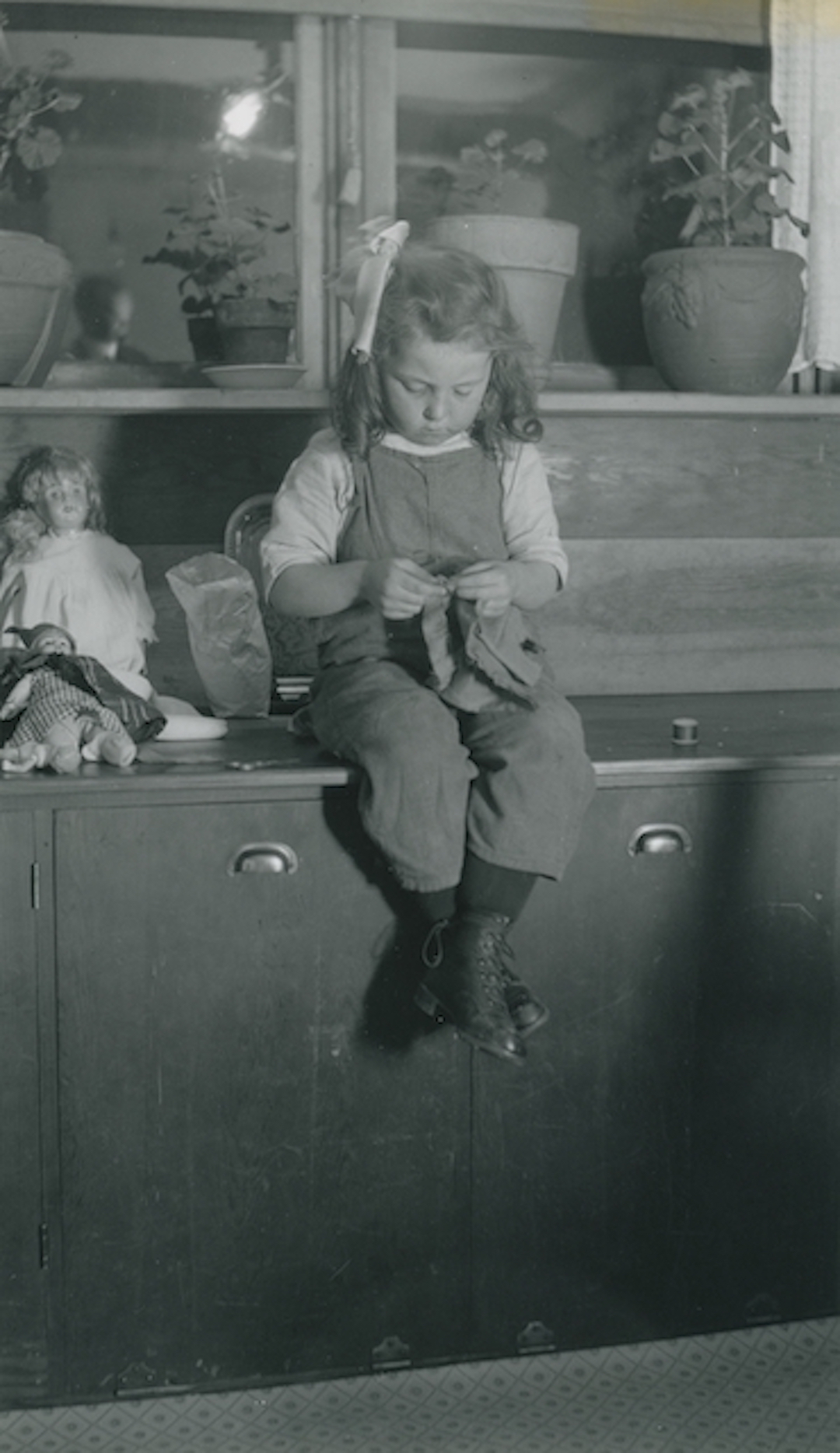
Grace Linde, c1918
Grace Irene Linde was born in Kenora to Margaret and Carl Linde on March 17, 1911. She and her brother Myron were often the subjects of their father’s photographs and here she is pictured doing a bit of sewing while sitting on the counter in their home on Fourth Avenue South (Safeway Hill).
The Lindes had family connections in the Massachusetts area and Grace eventually left Kenora to pursue a career as a nurse there. Sadly she died in Boston in 1933 of complications following an operation. She was only 22 years old.
Photographer: Carl G. Linde of Kenora. Carl Linde lived and worked in Kenora from c1905 to the early 1940s.
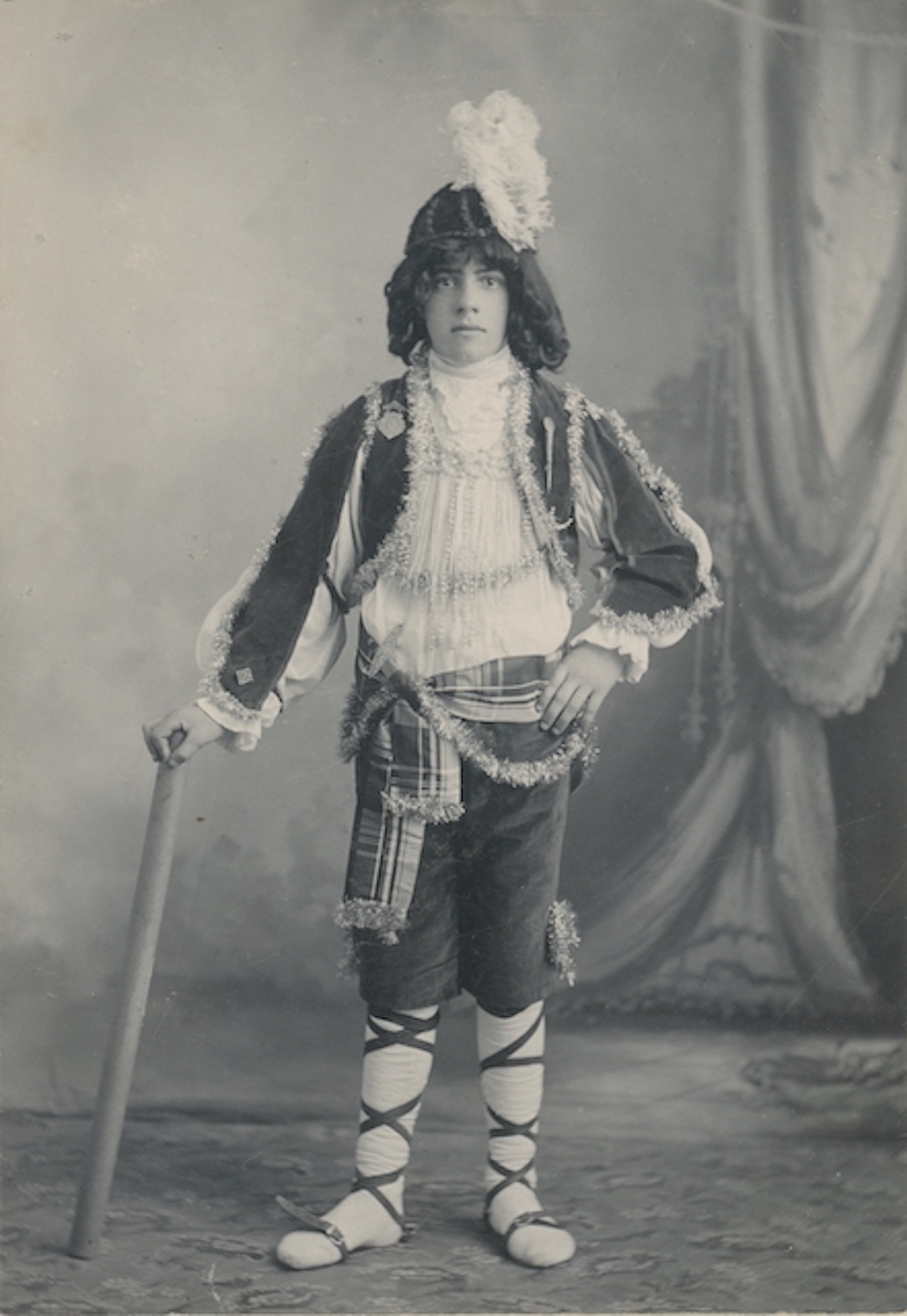
Harold Edward Sigurdson, 1907
This wasn’t the everyday, walk-about clothes of Edward Sigurdson. It was his prize-winning costume for the Royal Jubilee Hospital’s annual Carnival in January 1907. Taking first place in the Boys under 16 category was Edward in his elaborate page outfit. Several years earlier he had taken first prize for his archer costume.
He recounts in a short memoir:
My first job started on Mar. 1st, 1902 in the box factory the pay at the time was 60¢ per day 10 hrs a day. We received our pay once a month….
He mentions the other boys he worked with and a boy he must have been. If he was even 15 years old when this photo was taken in 1907, he would have been around 10 years old when he got the job at the box factory. He worked there for 10 years before moving to the marine slip where he worked until 1940. He spent his latter years working for the Keewatin Lumber Co. at the sluice and the Lakeside warehouse.
Photographer: G.E. Whiten. Whiten was an award-winning professional photographer who lived and worked in Kenora from September 1905 until August 1909.
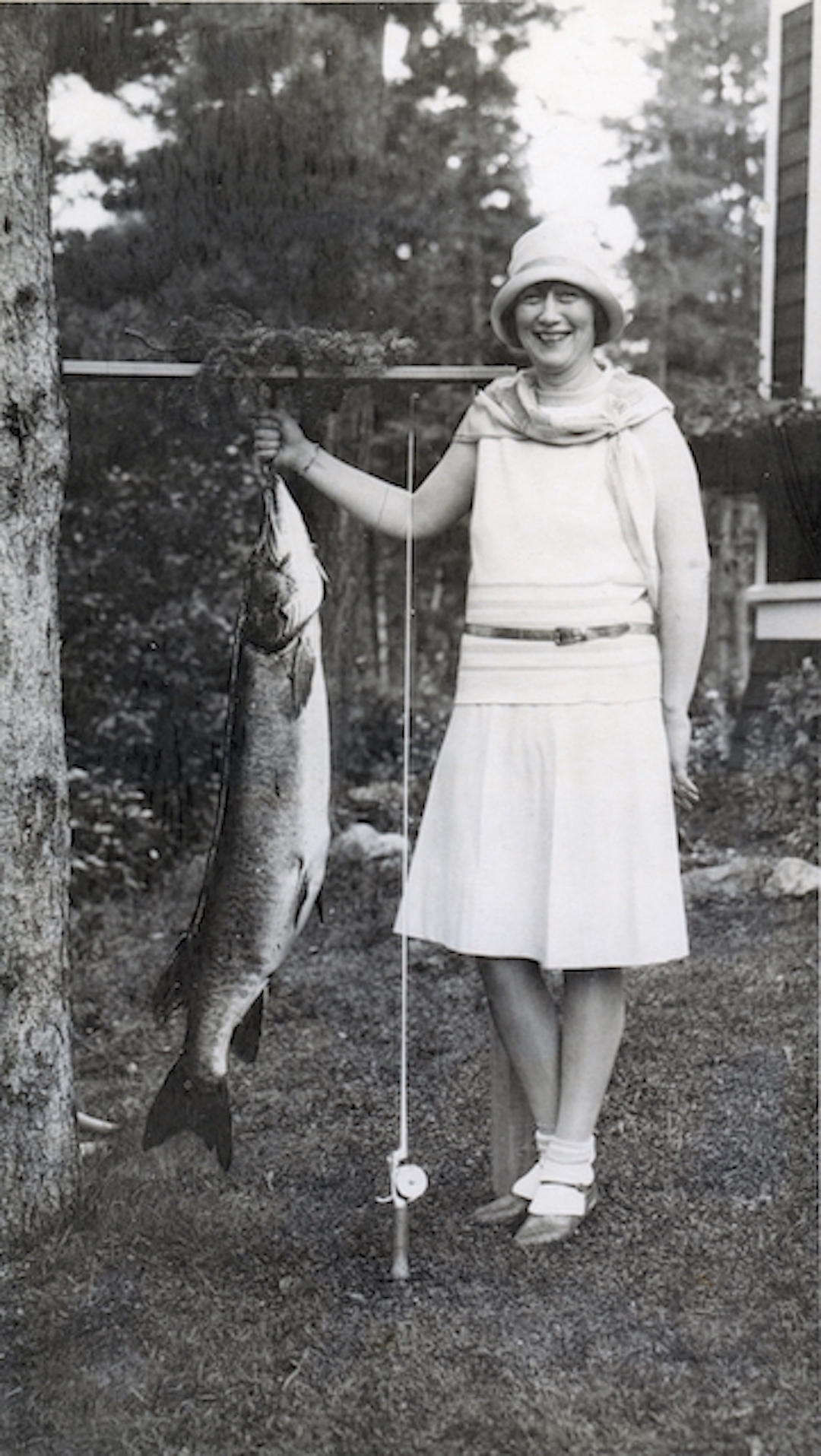
Esther Leistikow, 1928
Esther Lestikow was born in Canada around 1888 but spent most of her life in Los Angeles where she lived with her husband Fred and their daughters. They spent many of their summers, however, on Lake of the Woods.
In 1928, they purchased the former camp of Willam R. Allan on the southeast side of Treaty Island. For 26 years, the blue mansion on the hill, Pukwana, was theirs. Boasting a tennis court, several small cabins, a huge boathouse, and a number of gasoline launches, the camp was maintained by staff while the family enjoyed the summer pursuits of life on the lake, including fishing.
On July 6, 1928, Esther Lestikow snagged this 31-pound muskie. It was 49-3/4 inches long and had a girth of 22 inches.
Photographer unknown
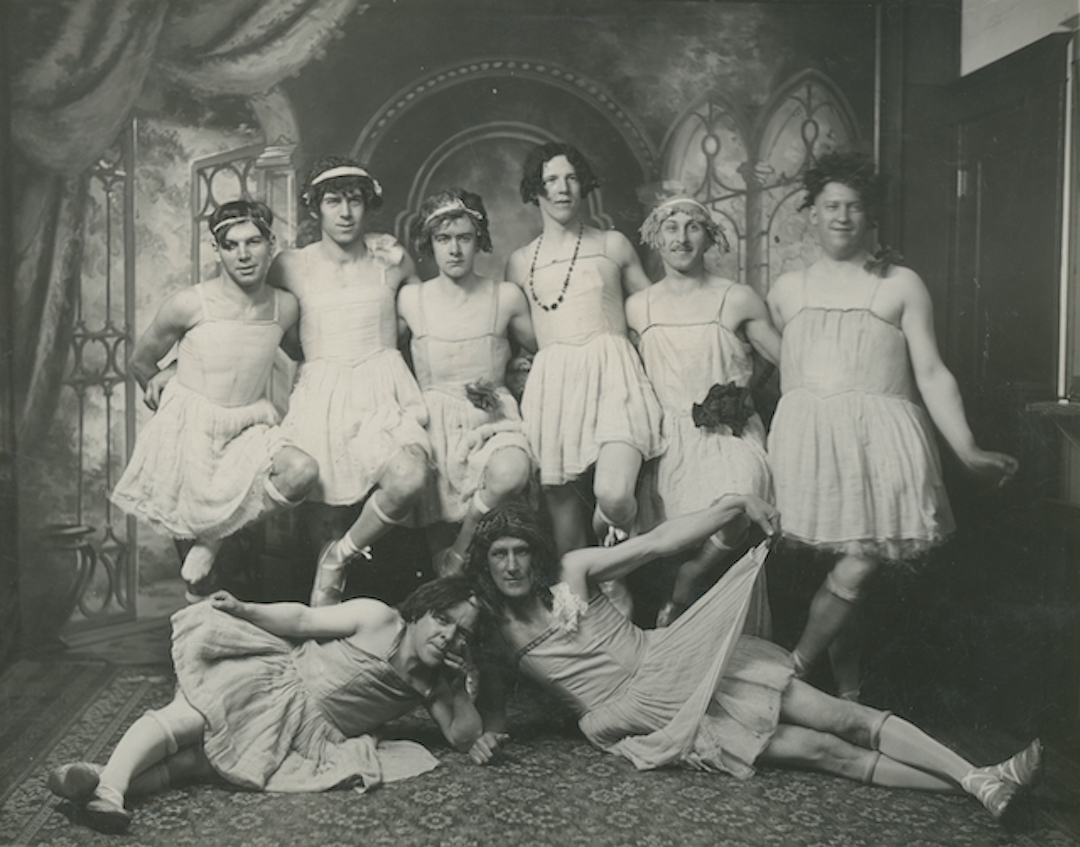
Local Talent Show, c1920
Shenanigans was what this octet of beauties was up to! Posing in a local photographer’s studio was “the talent” in a local talent show which had been hosted at Derry’s Palace Theatre.
The “girls” are identified as:
Back Row (left to right): Keith Hook, J. Fortier, Phil McDonald, H.E. Olson, Leo Vineburg, Bill MacLeod.
Front Row (left to right): Dody Louttit and Bill Mitchell.
Photographer unknown
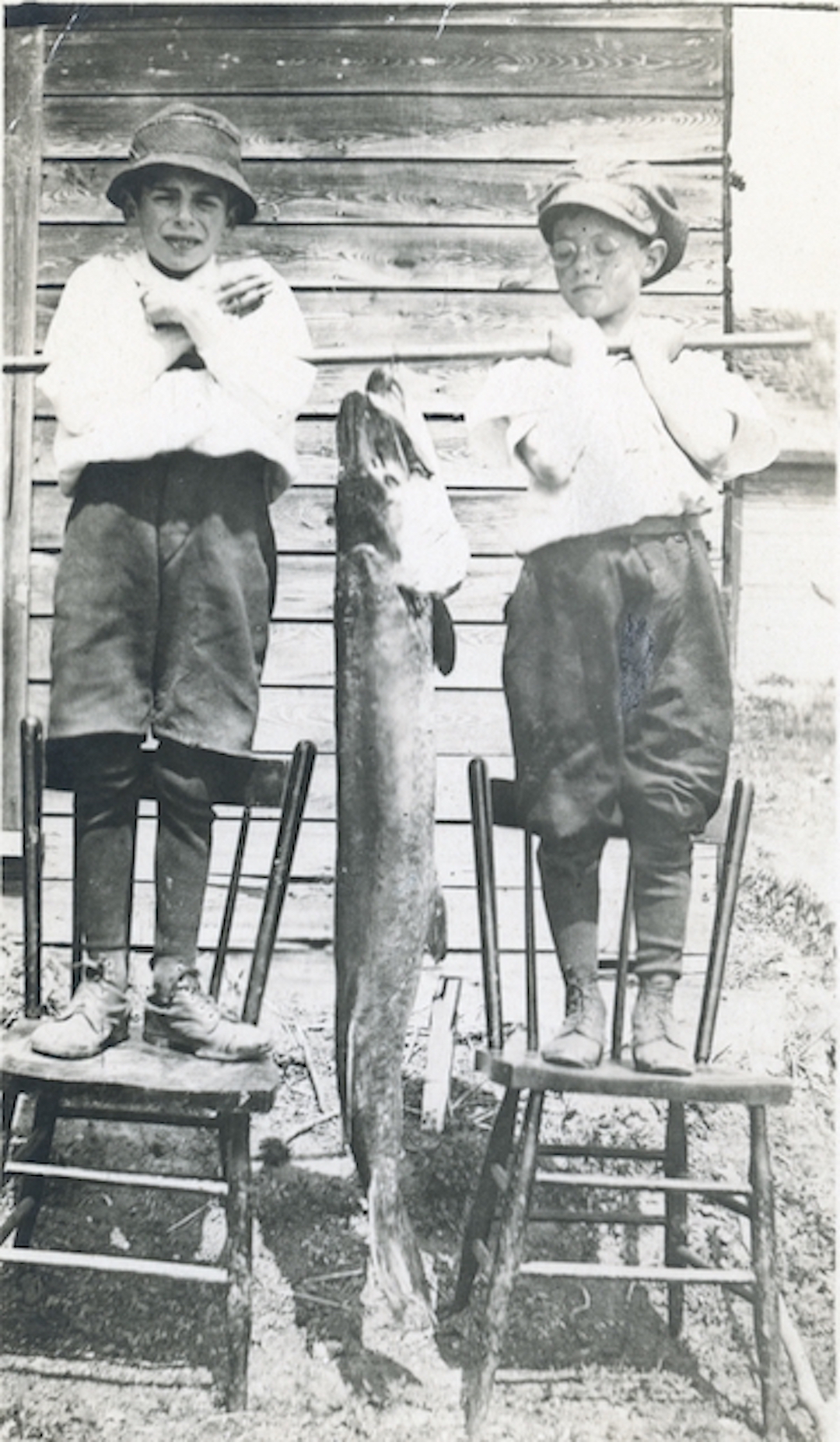
George Beatty and Friend, c1905
These two youngsters had to get creative when holding up “the BIG one” for a photograph.
The boy on the right is George Beatty. George served with the Royal Air Force as a mechanic during the First World War, and returned home to work at his father’s clothing store, George Beatty and Son Ltd. Beatty’s love of Kenora shone through in his involvement with winter and summer carnivals, jamborees, and parades.
Photographer unknown
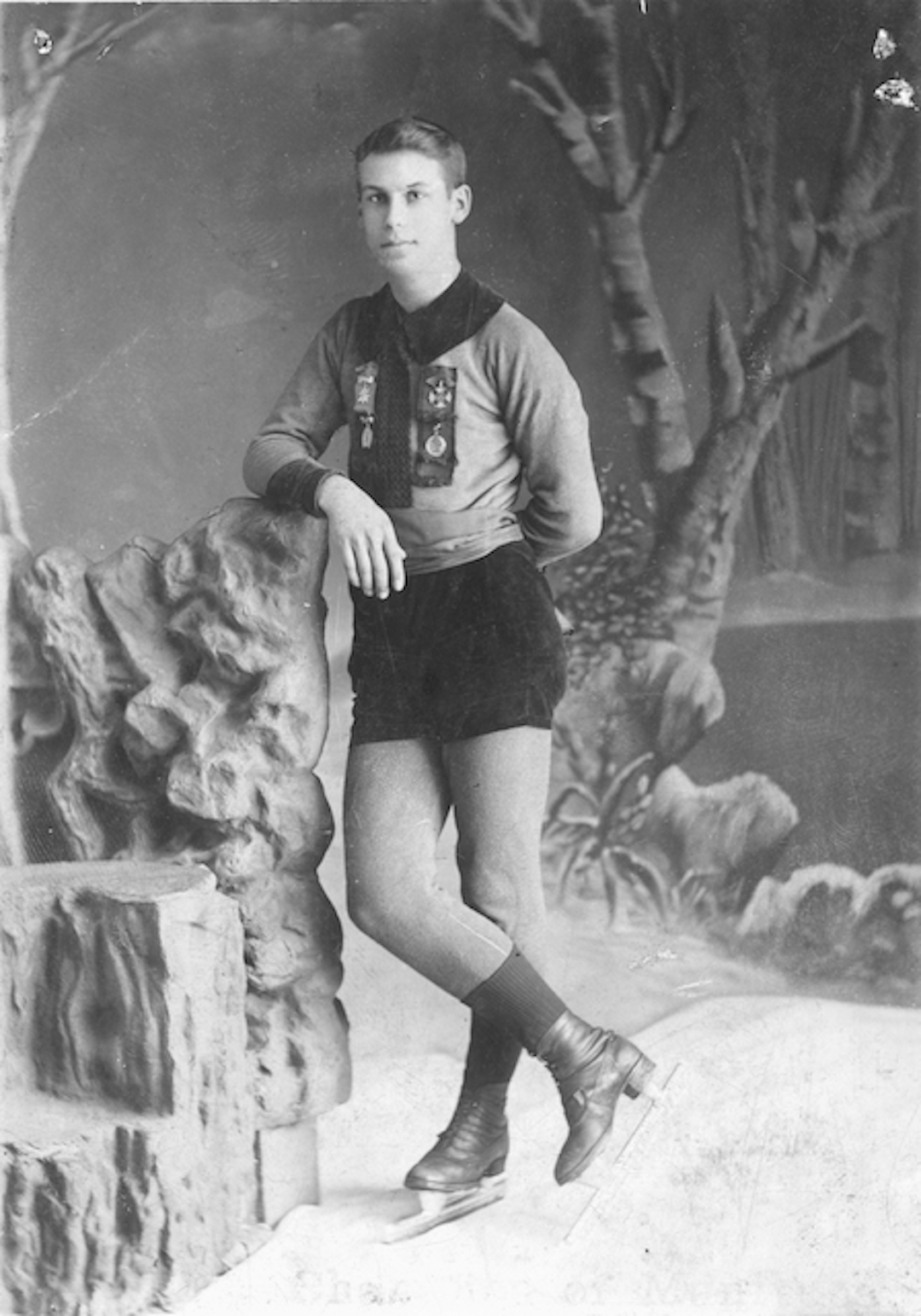
Joseph Derry, 1894
As a young man, Joseph Derry was an accomplished speed skater, winning the one-, three-, and five-mile races at the 1894 Manitoba skating championship. In this photo, the wintery props at Wright’s studio complement Derry’s streamlined racing outfit.
Joseph Derry was well-known locally as the man who opened the Bijou, Palace, and Paramount Theatres. He served on Town Council in 1912, and was part of the syndicate that built the Tourist Hotel, now the Kenricia, in 1907.
Photographer: Harry Wright
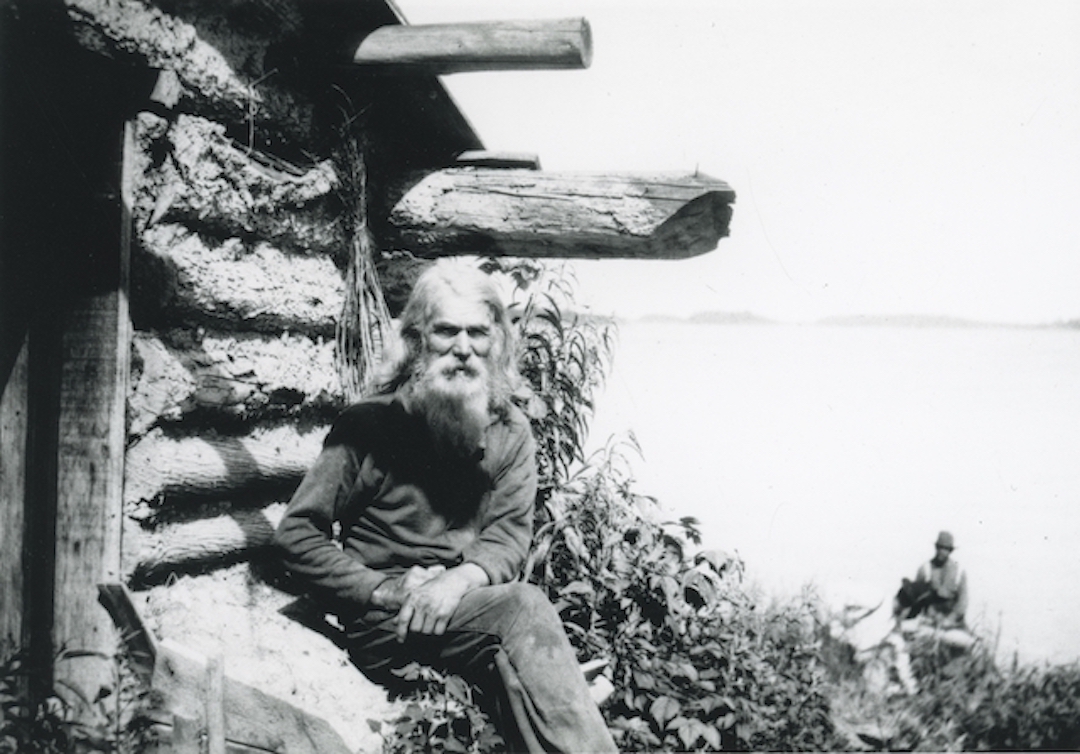
John Lapine, c1905
John Lapine was born in 1830, and travelled to Canada in 1856 with Sir George Simpson, the Governor of the Hudson’s Bay Company. He spent many years hunting, trapping, and prospecting across Rupert’s Land before settling on Lake of the Woods at Corkscrew Island.
In 1896, Lapine was described by The Colonist, a promotional magazine of the time, as the district’s “oldest inhabitant, first pioneer and prospector, and most widely experienced explorer, all in one.”
Photographer unknown
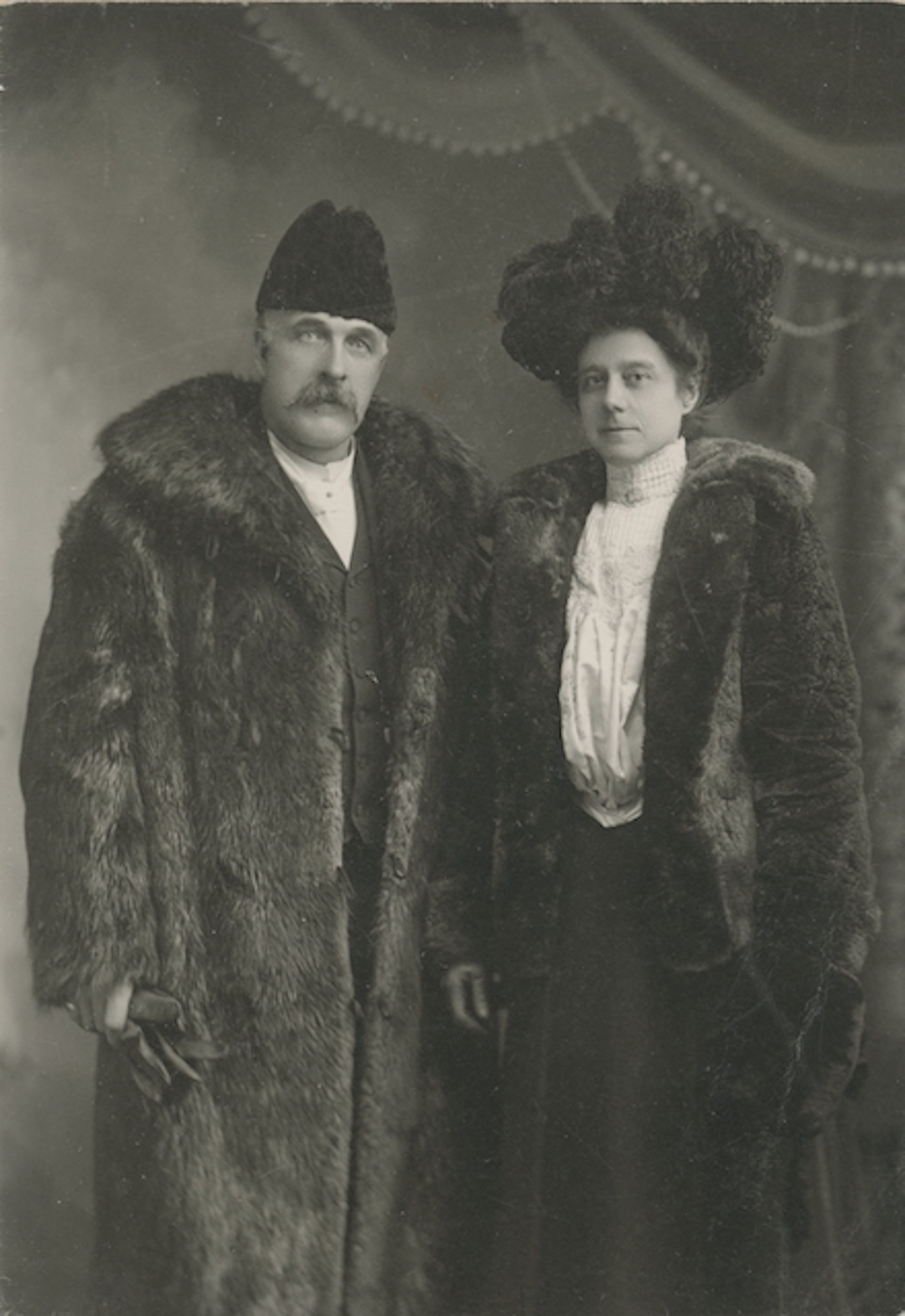
George and Winona Phillips, March 1903
George P. Phillips operated a dry dock in Rat Portage (later Kenora) where he oversaw the construction and repair of many of the steamboats that cruised Lake of the Woods. Winona Phillips (née Machin) was the sister of Col. Harold Machin, to whom this photo was originally addressed.
In this image, George and Winona resemble Eaton’s Catalogue drawings, displaying some of the finest winter wear available in 1903.
Photographer: J. G. Banks
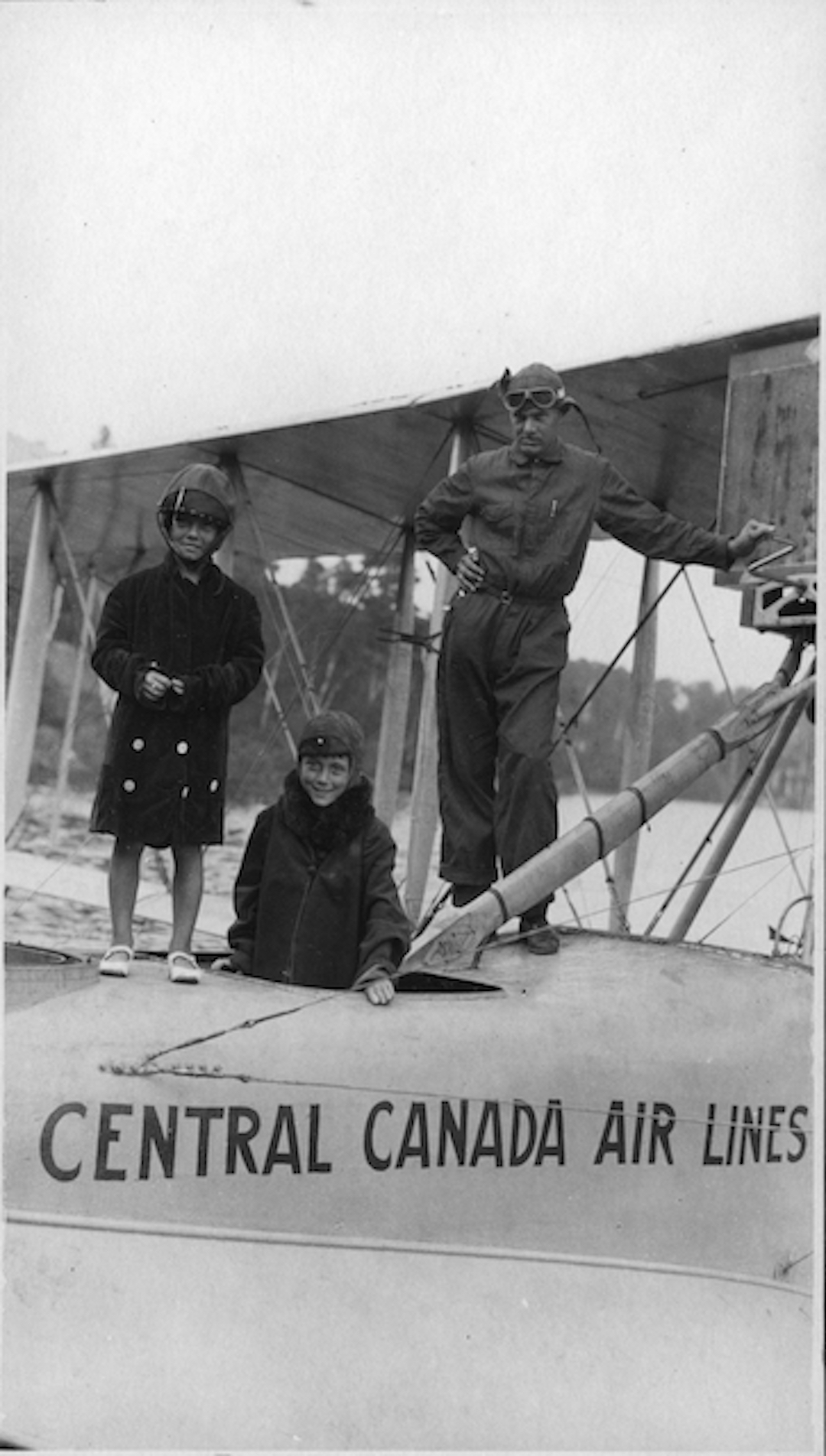
Louie and Patricia Leistikow, 1926
While sitting at their dock on Treaty Island, the Leistikow family was visited by a flying boat. Frederick Leistikow asked the pilot to take his two daughters, Louie and Patricia, for a ride. Here we see the pilot, believed to be W. M. Emery, only too pleased to say yes!
Central Canada Air Lines operated for just six months in 1926. Financed by James A. Richardson of Winnipeg, the company’s single Curtiss HS-2L flying boat transported passengers and supplies around the Kenora and Lake of the Woods region. Later that year, Richardson founded Western Canada Airways.
Photographer unknown
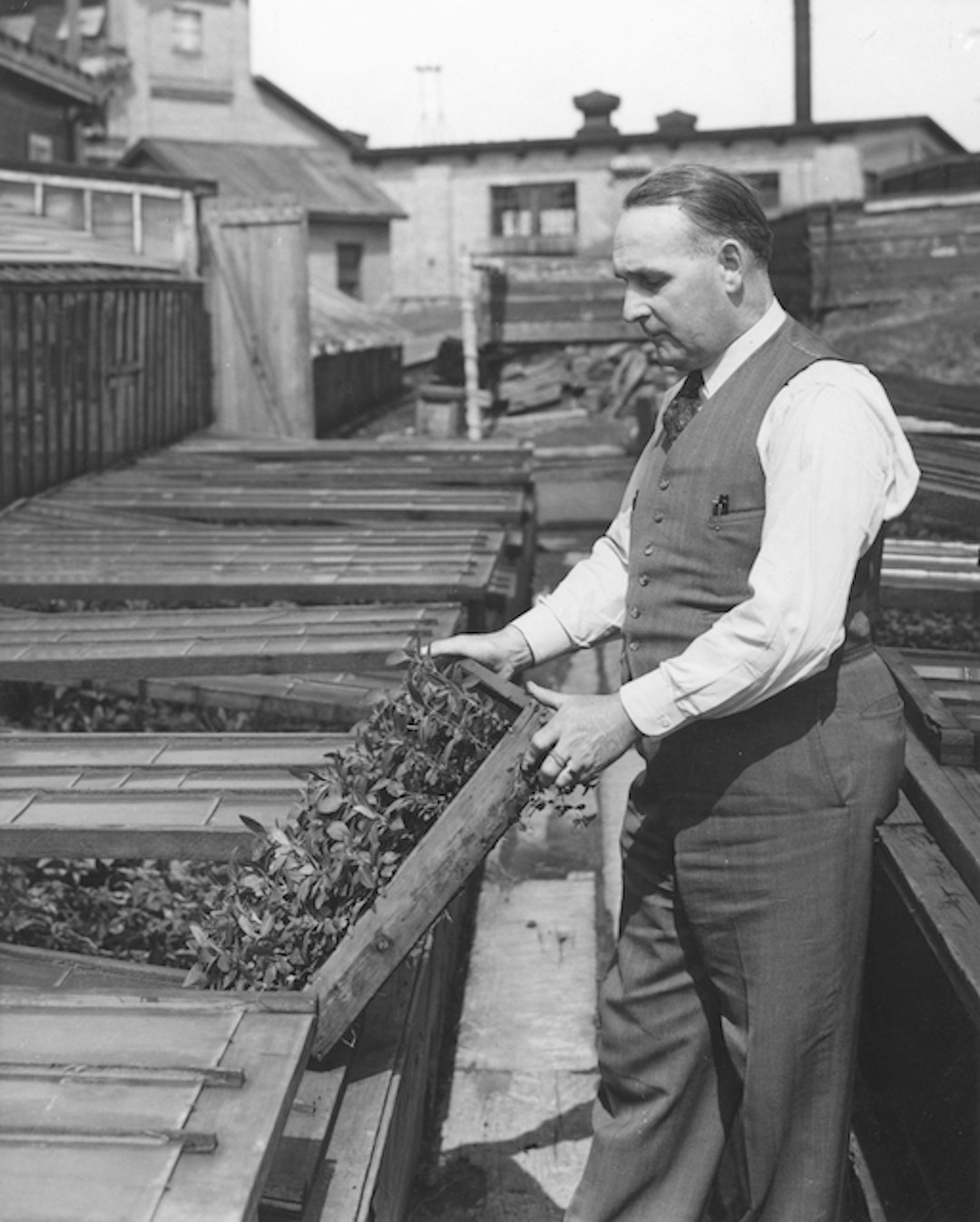
J. R. Almey, c1930s
J. R. Almey was the chief horticulturalist of the Canadian Pacific Railway’s western lines from 1928 to 1946, and retired as general agriculture agent in 1960. Every summer he would travel across western Canada judging station gardens and inspecting greenhouses and nurseries, as he is in this visit to Kenora.
Station gardens provided a beautiful first impression for visitors, and helped advertise the community’s fertile soil. At the height of the gardening craze, stations would compete against each other for accolades and company-sponsored prizes. Station gardens became less prominent after the Second World War, and all but vanished by the 1960s.
Photographer unknown
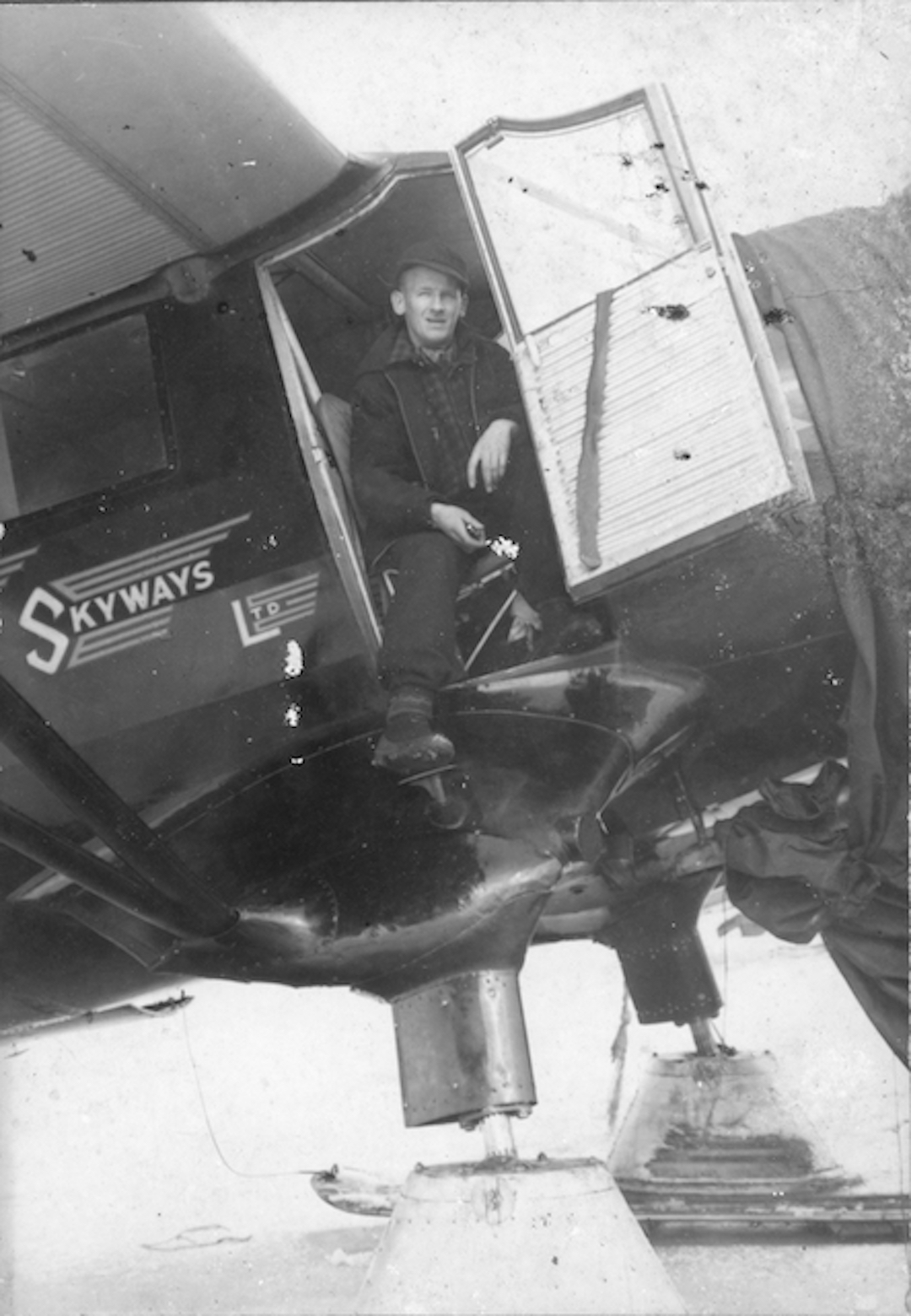
Gord Hollinsworth, c1936
Gord Hollinsworth was a celebrated bush pilot who flew for many outfits across Ontario and Quebec. He was well-known locally for his work with Ontario Central Airlines, which he co-founded in 1947 with fellow pilot, Rex Kiteley.
This particular aircraft, Dominion Skyways’ CF-AYO, was the first of the fabled Noorduyn Norseman ever constructed. This very plane would later take on a starring role alongside James Cagney in 1942’s Captains of the Clouds, a rousing tale of Canadian bush pilots serving in the Second World War.
Photographer unknown
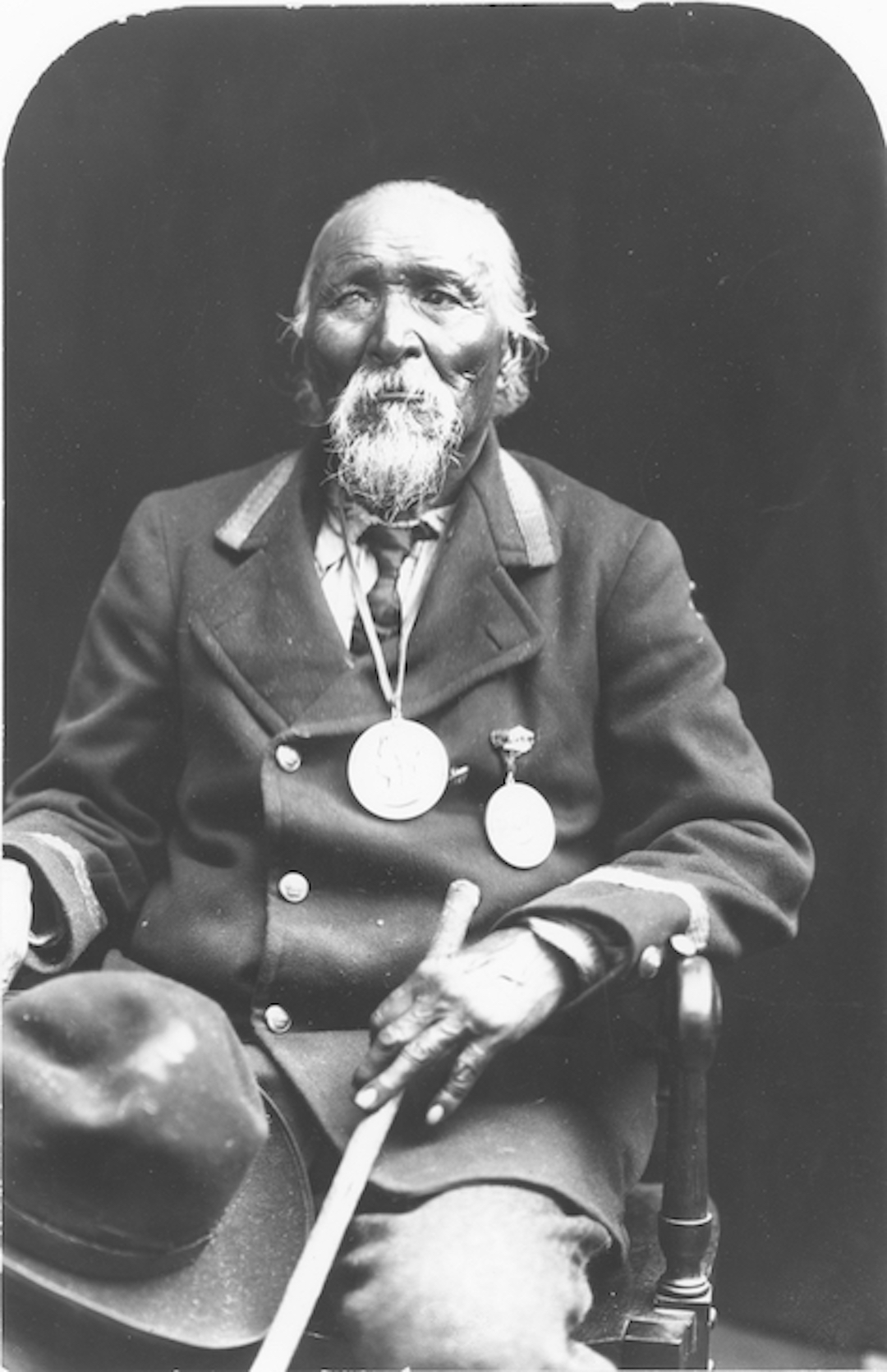
Chief Thomas Lindsay (Katiwasung), c1920
Chief Thomas Lindsay (Katiwasung) of Niisaachewan Anishinaabe Nation, known then as the Dalles, fought to secure education for the youth of his community.
Although Treaty #3 promised a school for any First Nation that requested one, applications were rarely approved. The federal government would only provide funding for a teacher, and Chief Lindsey realized that if he wanted a day school on the reserve, he would have to build it himself.
Chief Lindsey brought the community together to build a schoolhouse using local materials, and from the 1890s to around 1906, the day school at Niisaachewan was able to operate.
When Treaty #3 was signed, each of the territory’s chiefs received a special suit, and a large, silver commemorative medal. Here, the elderly Chief Lindsay can be seen wearing his suit, treaty medal suspended from his neck. The smaller medal pinned to his coat is believed to be from Queen Victoria’s 1897 Diamond Jubilee celebrations.
Photographer unknown

Miss Muncer, c1907
In this photo of Miss Muncer, believed to be the eldest daughter, Connie, we see one of the challenges of using natural lighting for portrait photography: eliminating shadows!
The Muncer family was one of the first to settle at Winnipeg River Crossing, known today as Minaki. The family emigrated from England to Canada in 1906, and shared the log home pictured here with fellow newcomers, the Lodges.
Photographer unknown
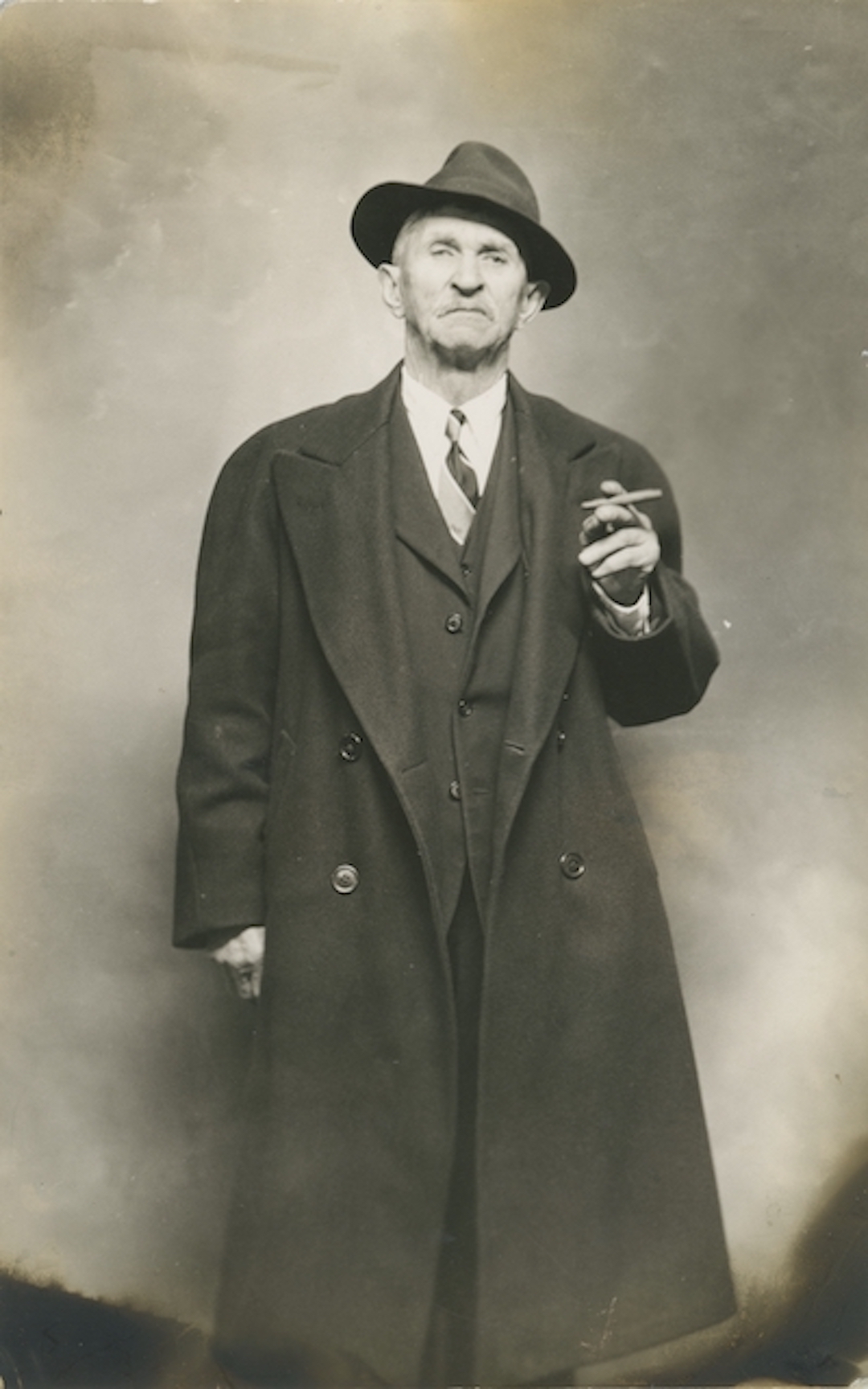
John Neniska, c1930
Sporting a fedora and long overcoat, while casually holding a cigar, John Neniska is the very image of success and confidence in the 1930s.
John Neniska was a well-known boat builder in Kenora. Emigrating from Austria to Canada in 1885, Neniska had a long career with the J. W. Stone Boat Manufacturing Company. He was responsible for the construction of several steamers and launches on Lake of the Woods, including the beautiful Minnie-Wa-Wa, later renamed the Lady Jean.
Photographer unknown
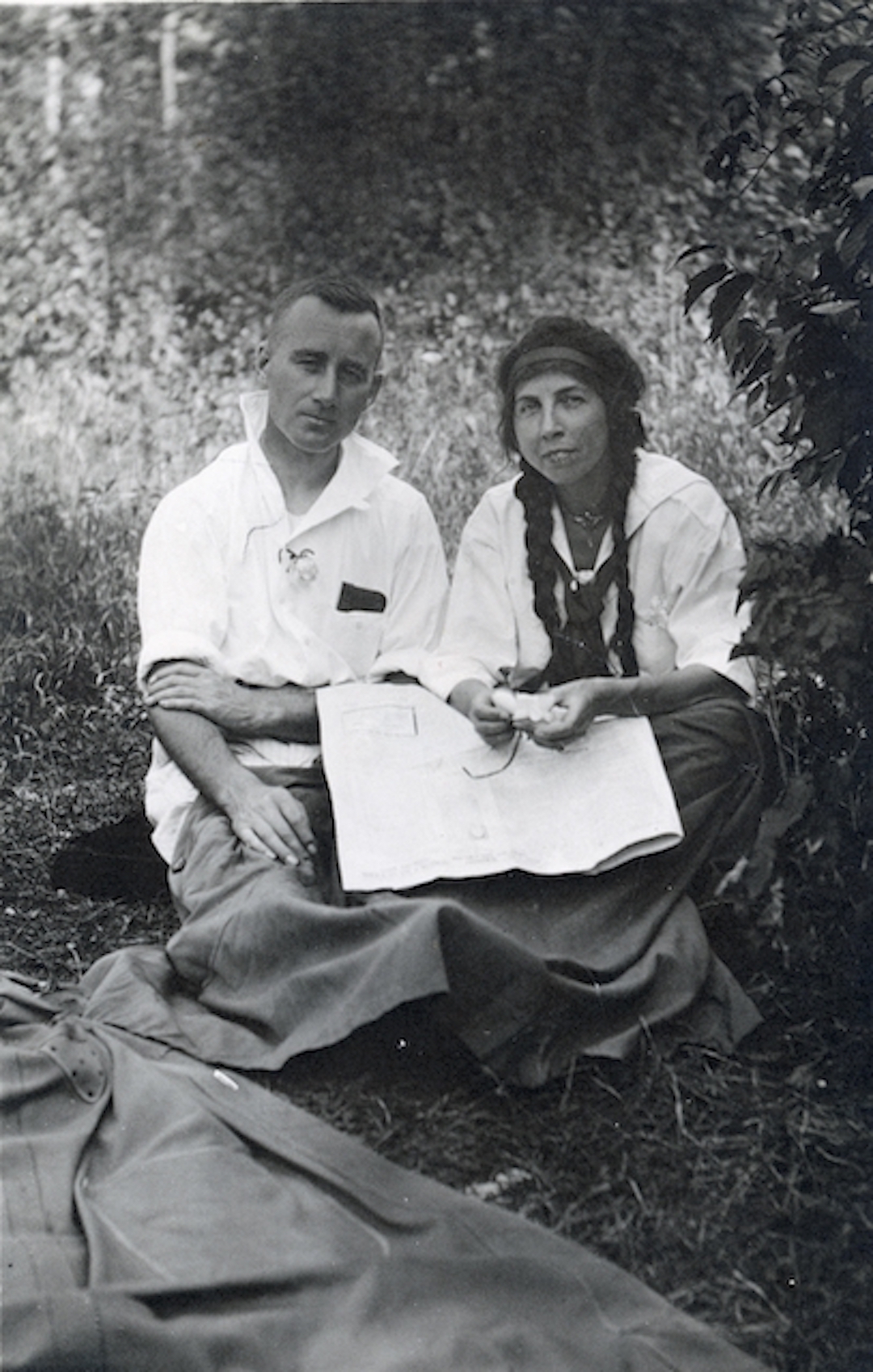
Unknown Man and Woman, c1930s
The rise of the personal camera meant the rise of casual and candid photos of people in their every day life. This photo shows a man and women under what appears to be a coat, perhaps looking at a map. A slice of life captured and unfiltered for our 21st century eyes.
Photographer unknown
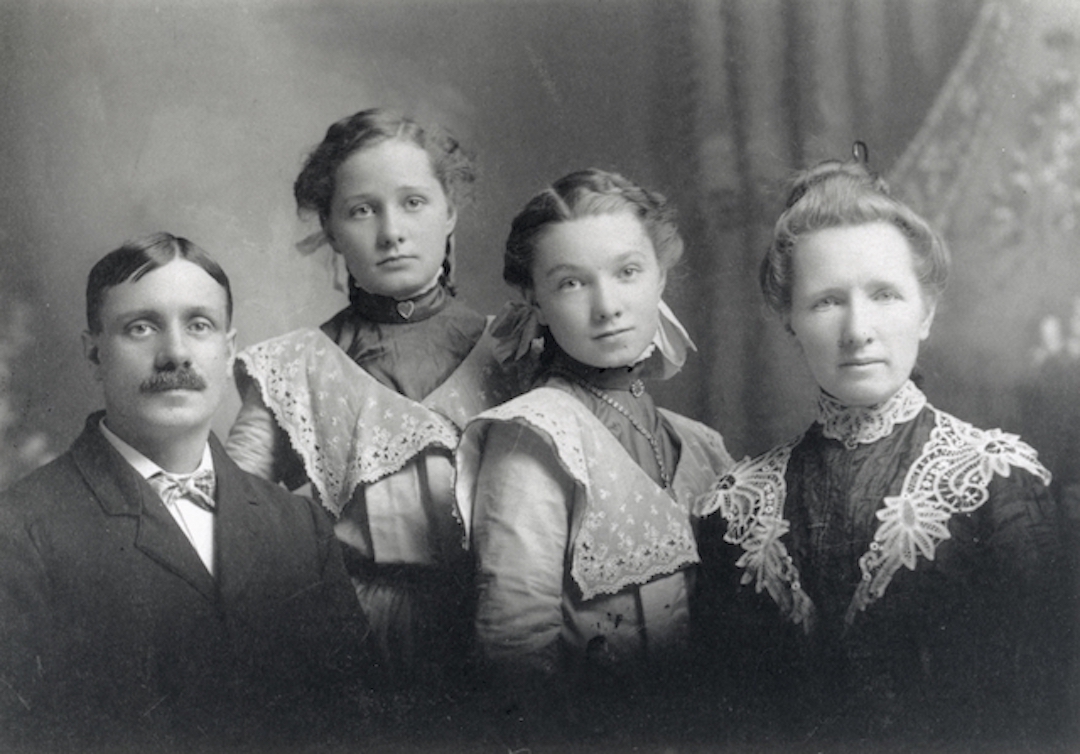
Tilley Family, c1905
This photograph was taken shortly before the Tilley family moved to Rat Portage, now Kenora, around 1905. Pictured here, from left to right, are William Henry, Alice, Ettie, and Elizabeth. This may have been one of the final portraits sent to friends and family before the Tilleys made their journey west.
William, who worked as a fireman for the Grand Trunk Railway, emigrated from England to Canada in 1866, marrying Elizabeth Omerod of Toronto in 1889. Alice married Malcolm Buchanan, and lived in Kenora until her death in 1981. After graduating high school, Ettie worked for the jeweller George M. Rioch in Kenora, and later moved to British Columbia with her husband Charles Pope.
Photographer unknown
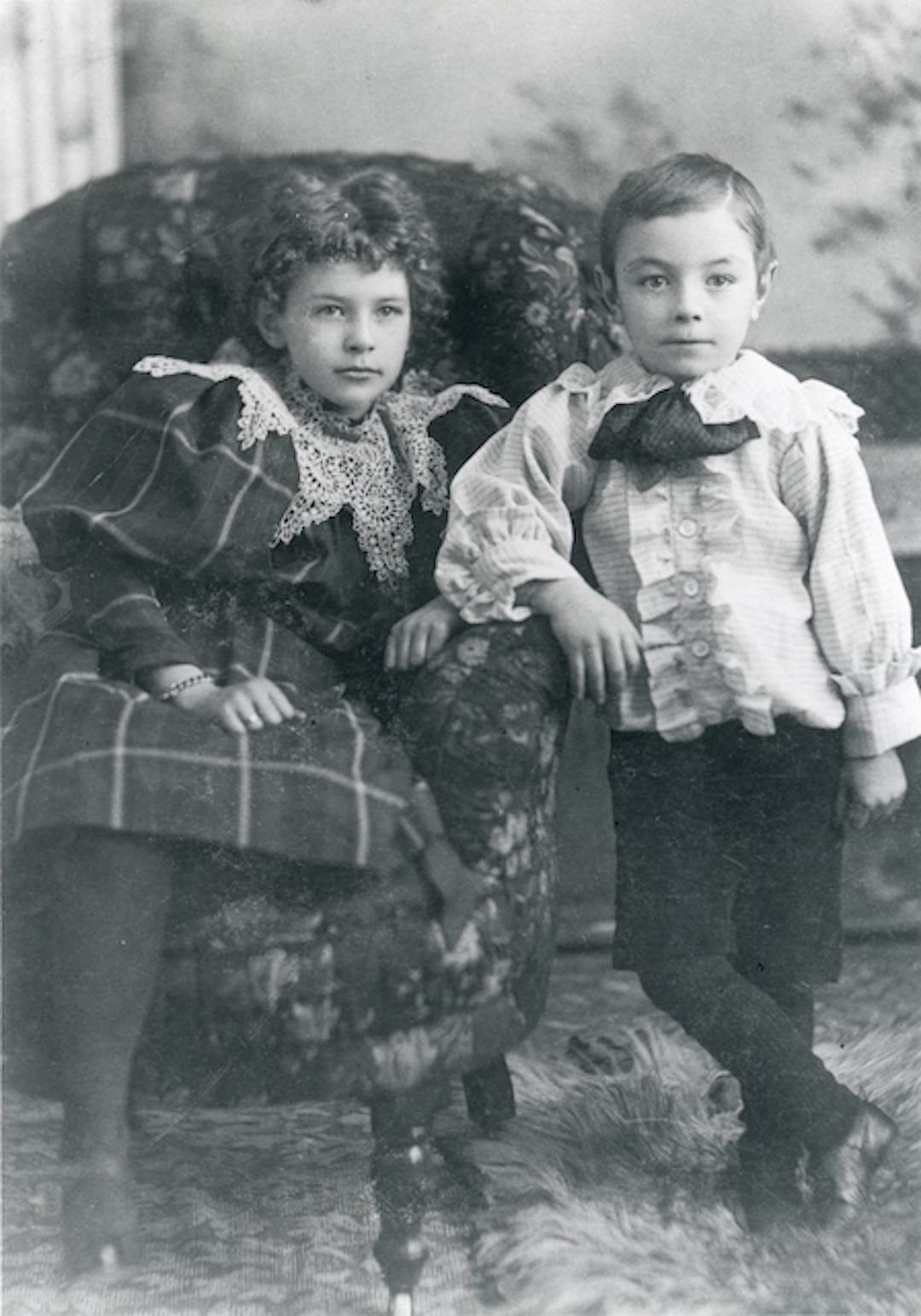
Laura and Harold Hilliard, c1895
Getting your portrait taken was a big deal in 1895. In this image, siblings Laura and Harold Hilliard show us their finest clothes. A photograph like this would let friends and family know that the children are healthy and happy — and that their parents were successful!
Louis Hilliard, Laura and Harold’s father, came to Rat Portage, now Kenora, in 1882. He opened a grand hotel at the site of the current Kenricia in 1885, and an opera house near today’s Century Cinema in 1895.
Photographer: Harry Wright
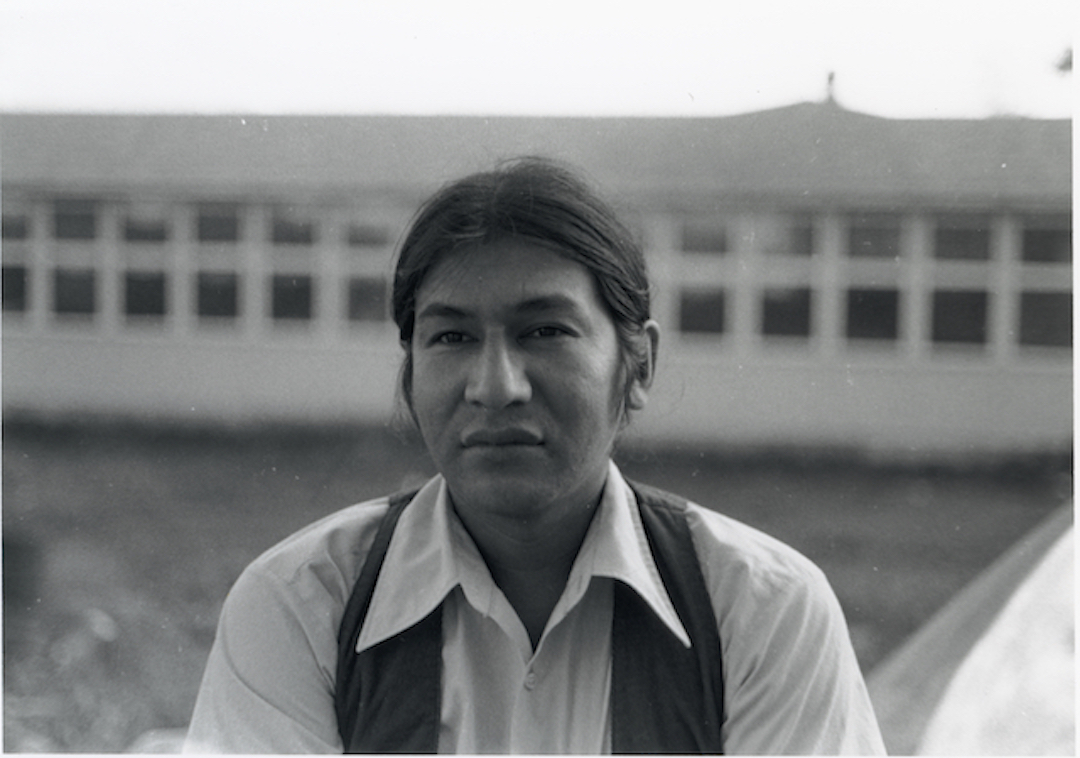
Tom Keesick, August 1975
Tom Keesick, former Chief of Grassy Narrows and member of the Ojibwa Warrior Society, was part of a delegation that visited Japan to study the impacts of mercury poisoning.
Through the 1960s, around 9,000 kilograms of mercury was dumped into the English and Wabigoon river systems by the Reed Paper Company in Dryden. Mercury contamination destroyed the water system’s commercial fishing and tourism industries, and a neurological disorder, known as Minamata Disease, continues to affect many residents of Grassy Narrows.
At the time of this photo, the region’s mercury contamination had garnered both national and international attention. In the spring of 1975, a team of scientists from Japan, led by Dr. Masazumi Harada, visited Grassy Narrows to investigate the crisis.
Photographer: Stephen Riley
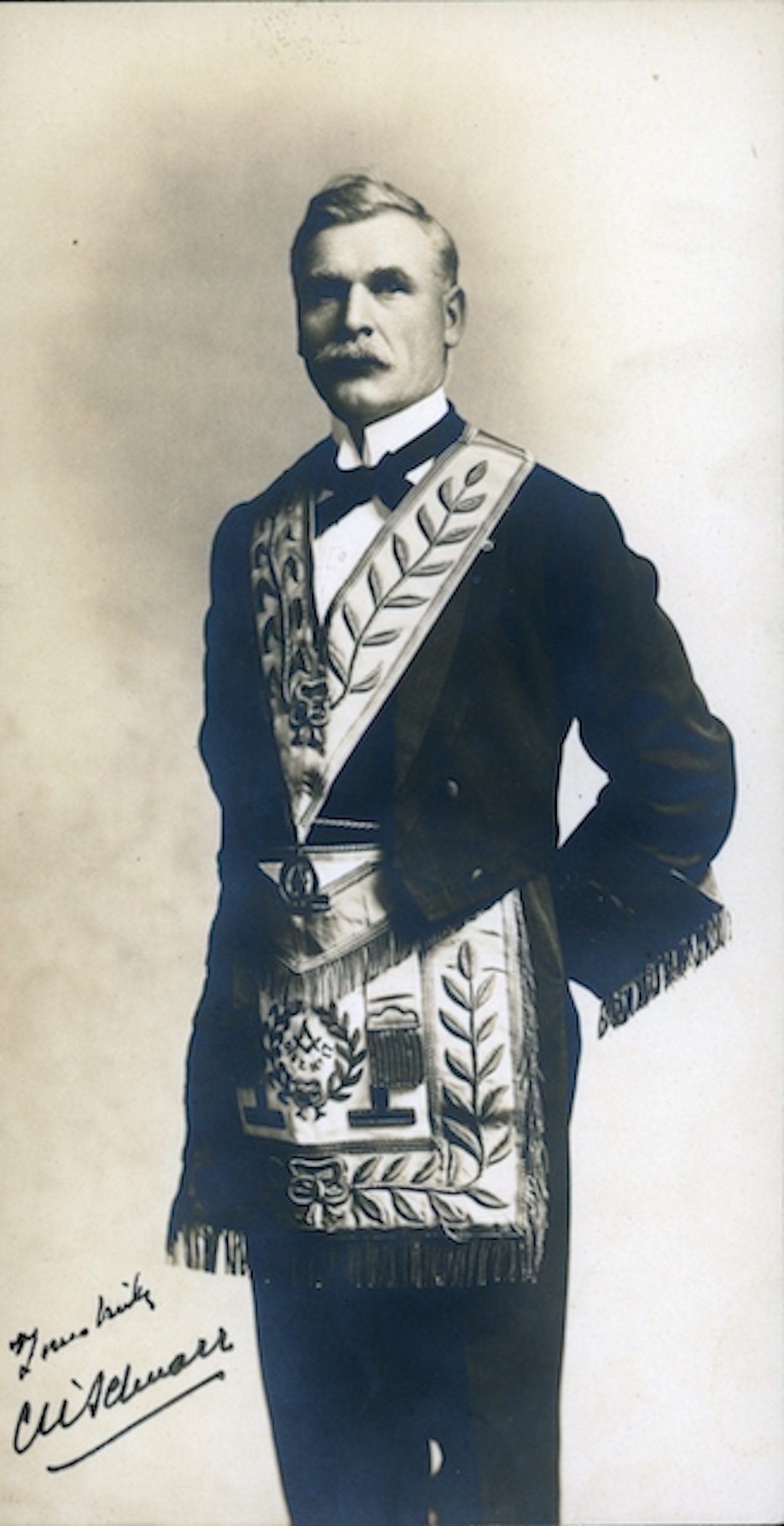
Col. Schnarr, c1920s
Col. Nelson Schnarr was a community leader and general man about town in the first half of the 20th century in Kenora. He was widowed as a young man and never remarried. He seemingly poured his energy into community service and friendships. Here he is pictured in his regalia as a Mason.
Did you know?
Some names that were originally considered instead of Kenora were— Sultana, Island City, Norman, Pequonga, Lakeside, Imperial, Portage Falls, and Goldwater.
